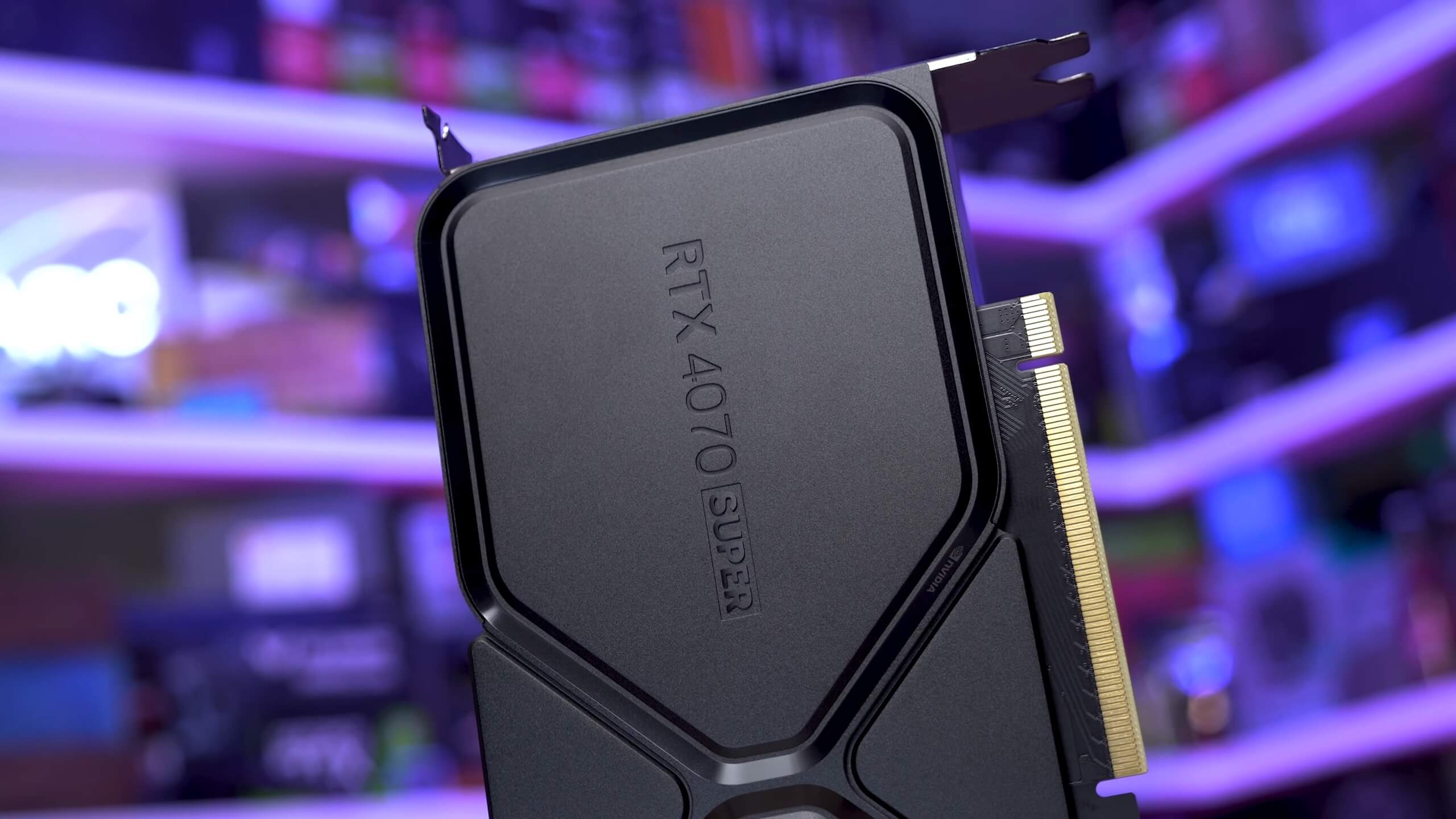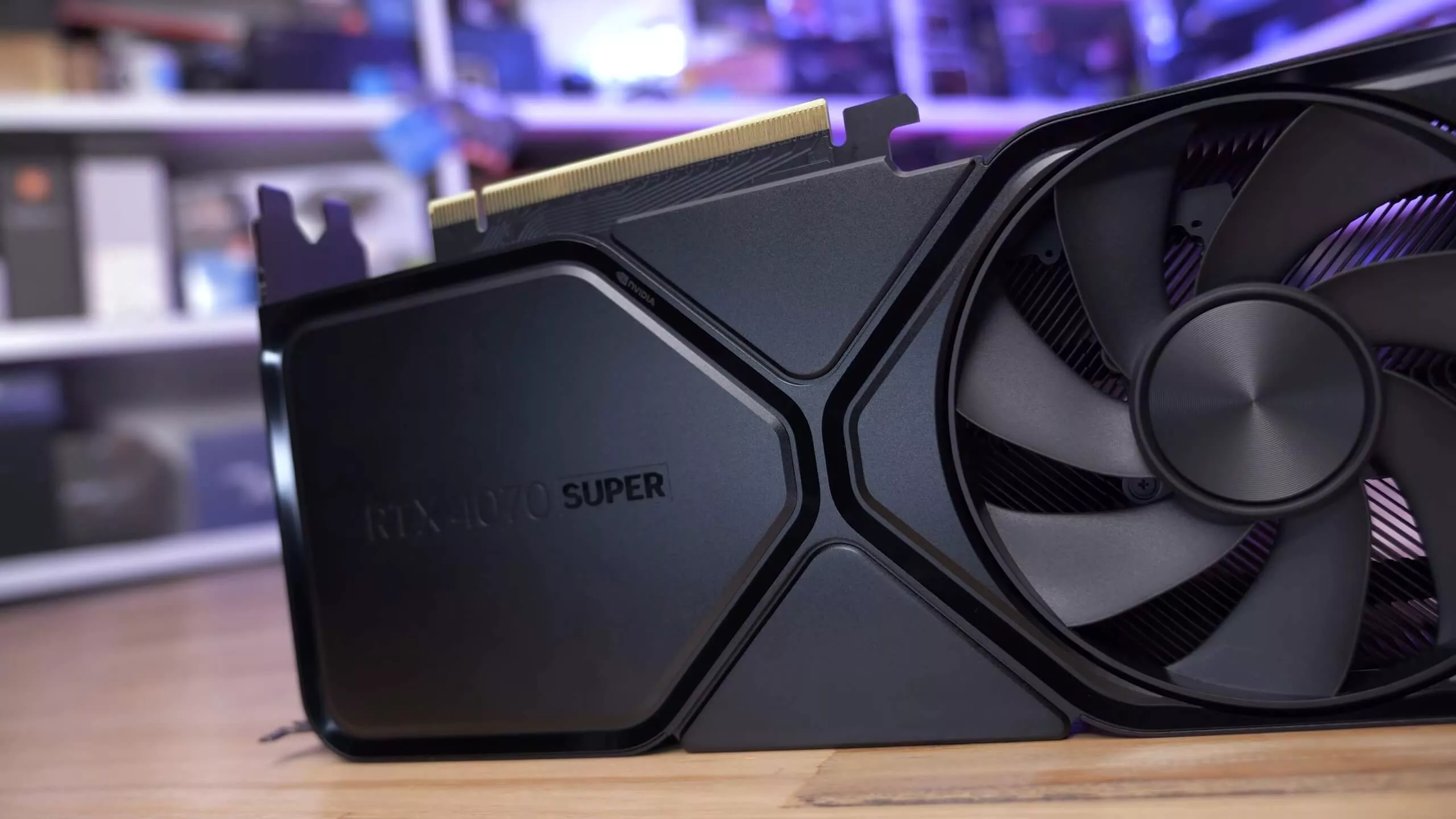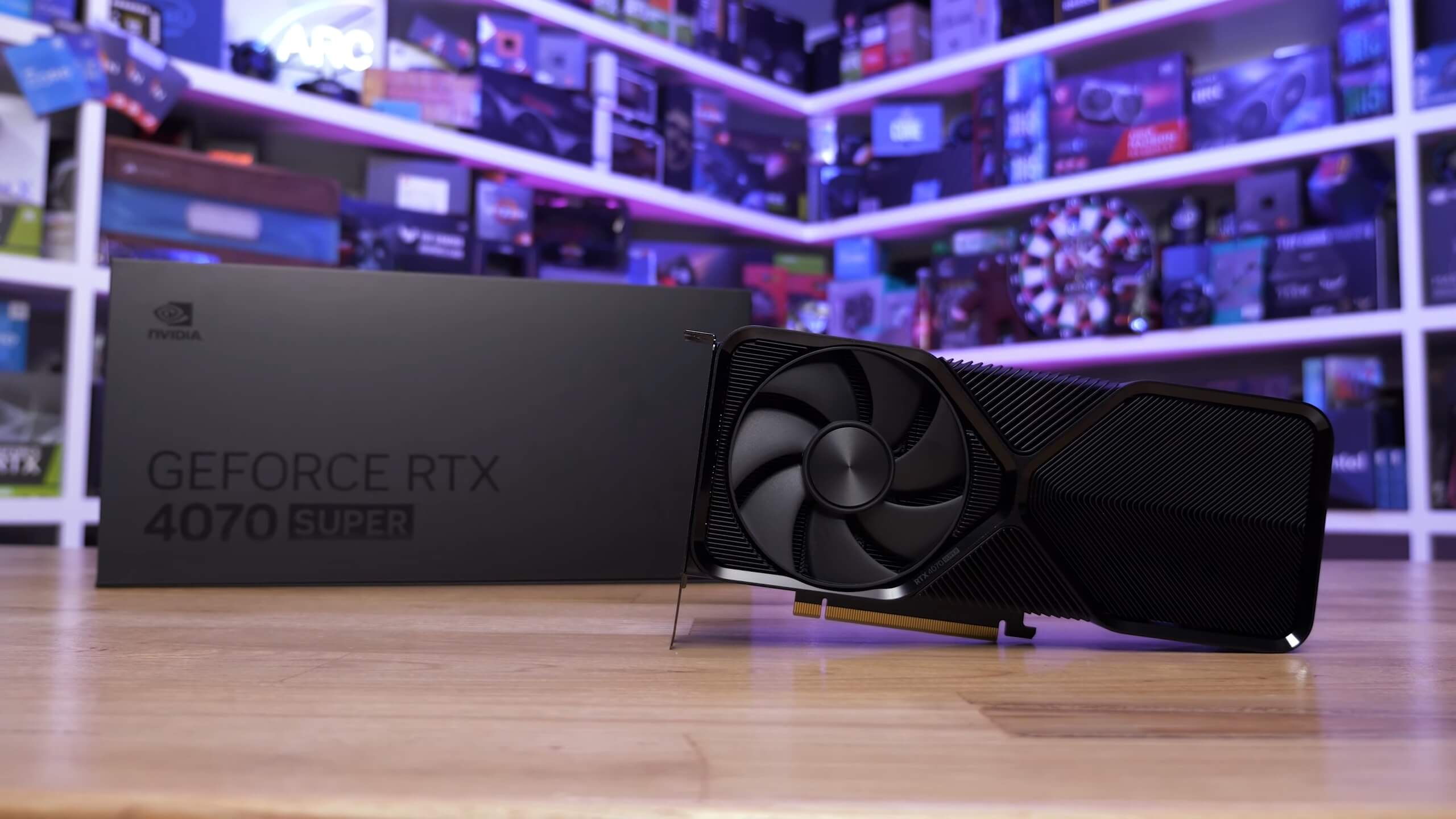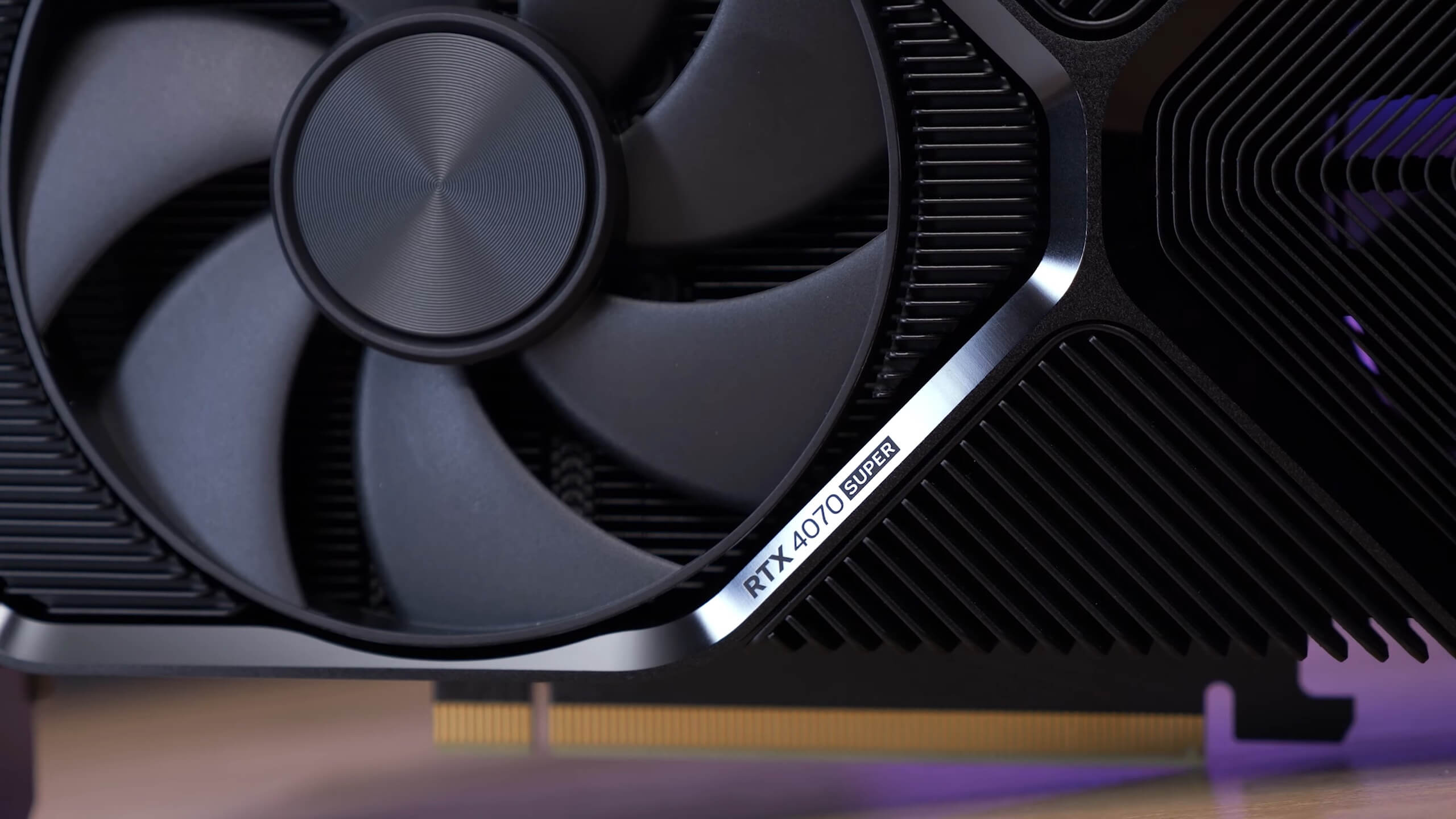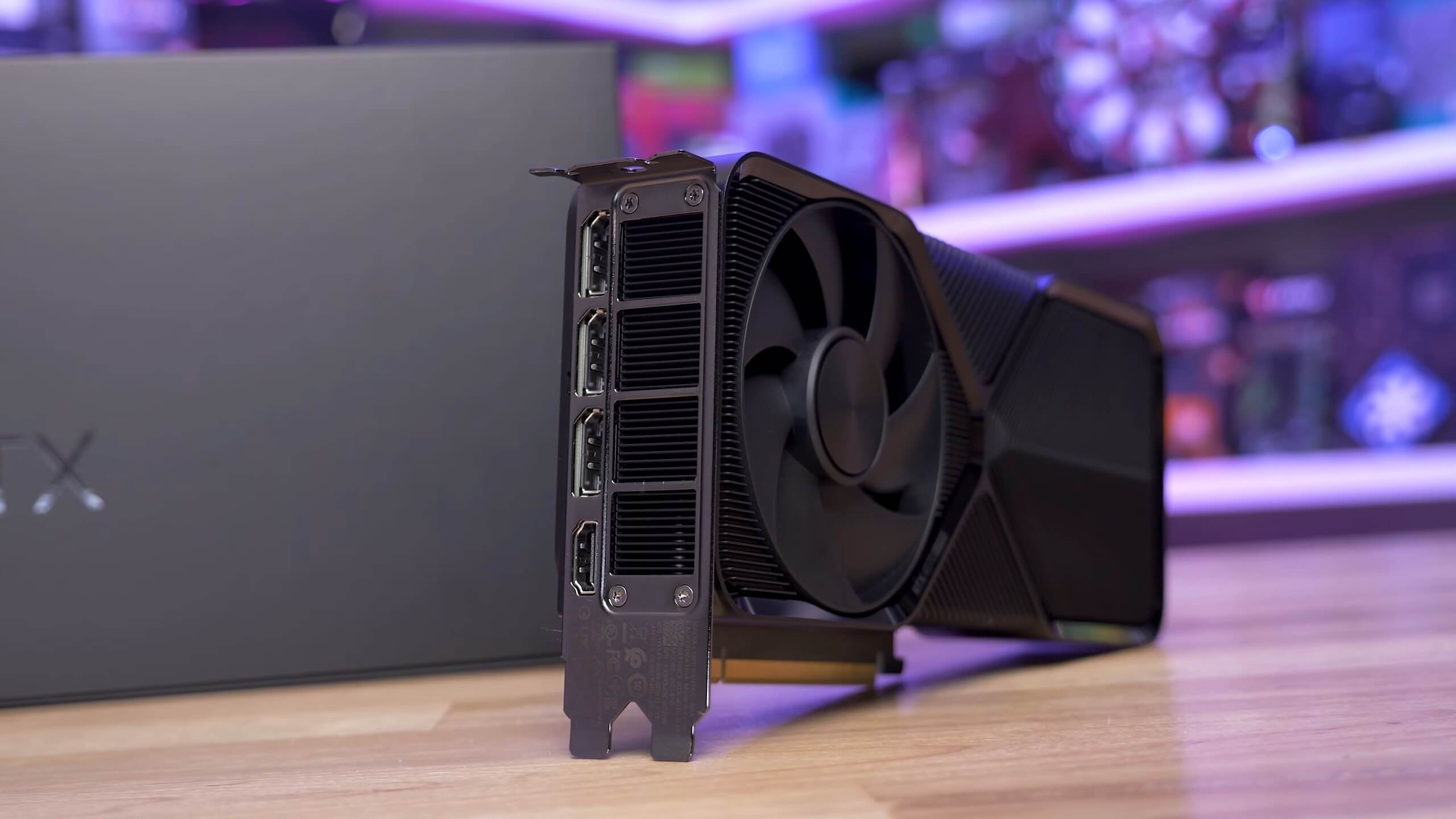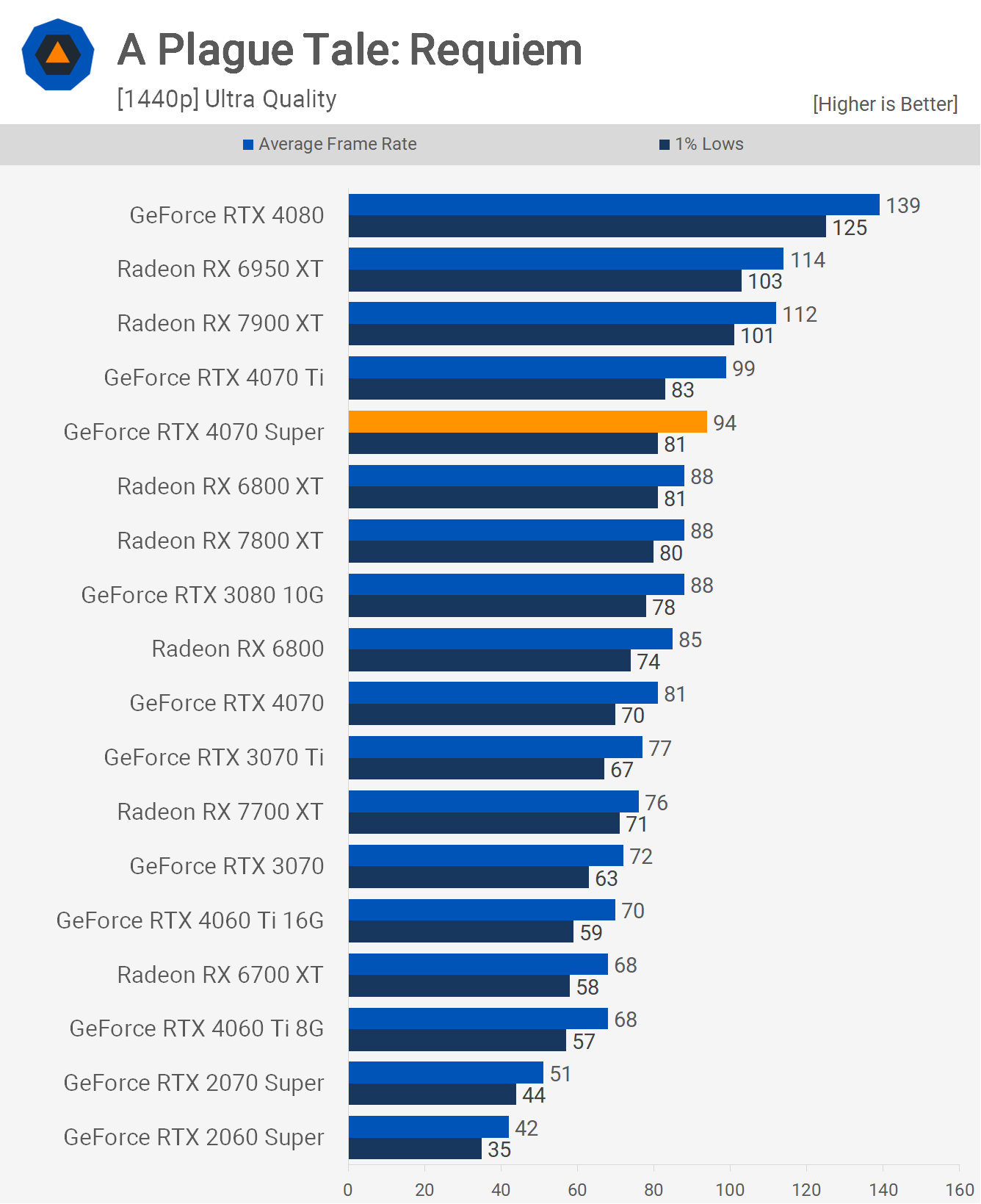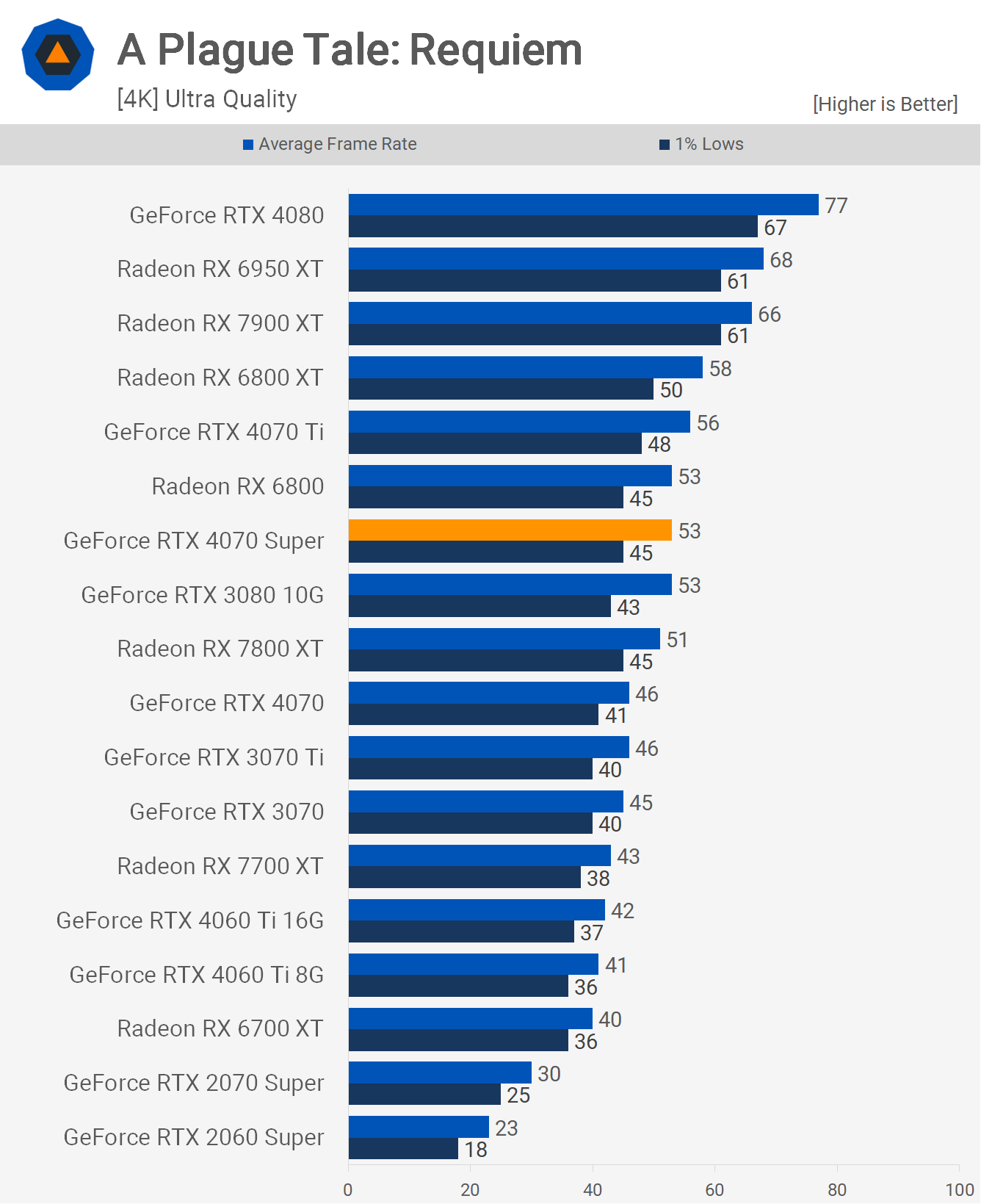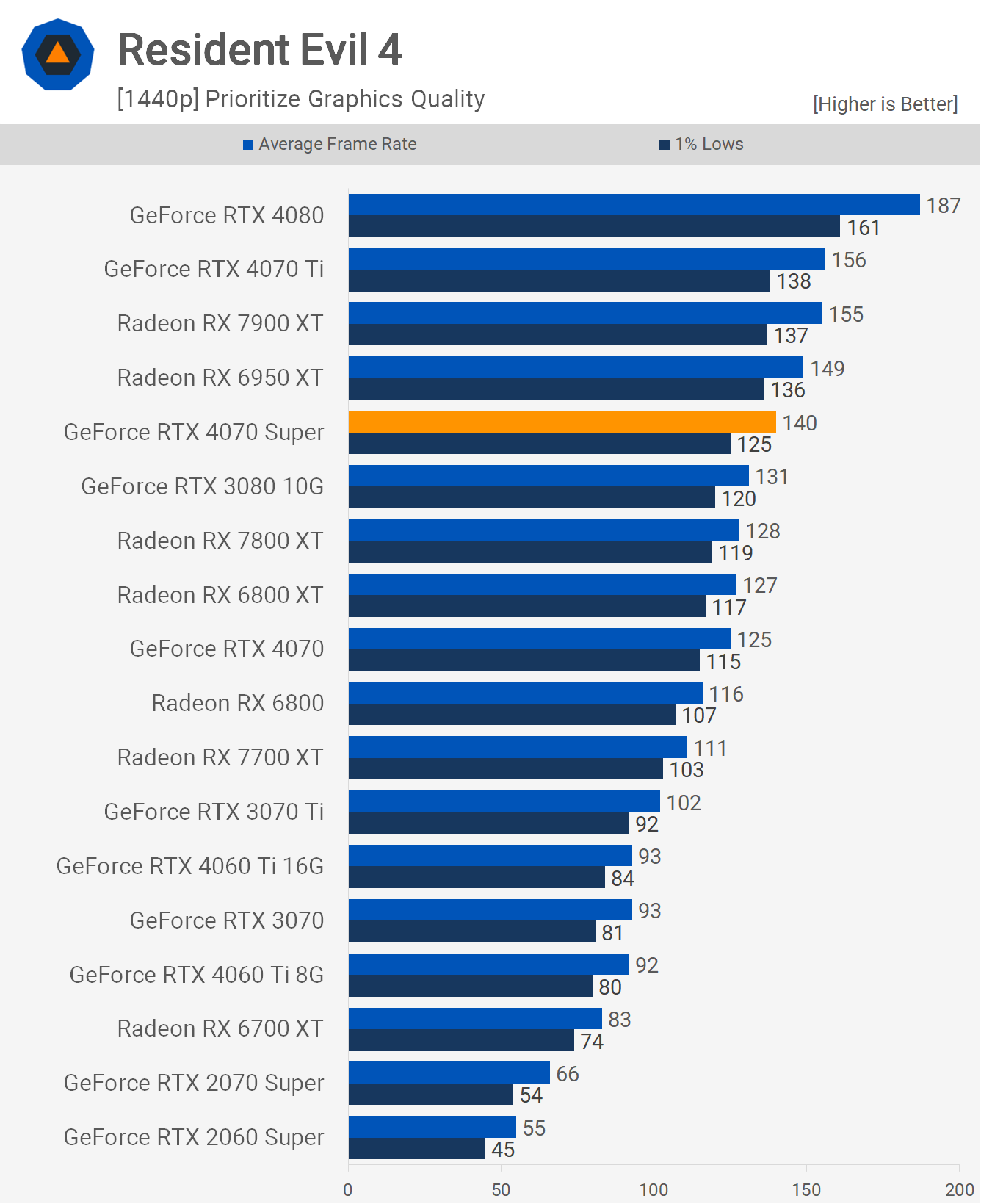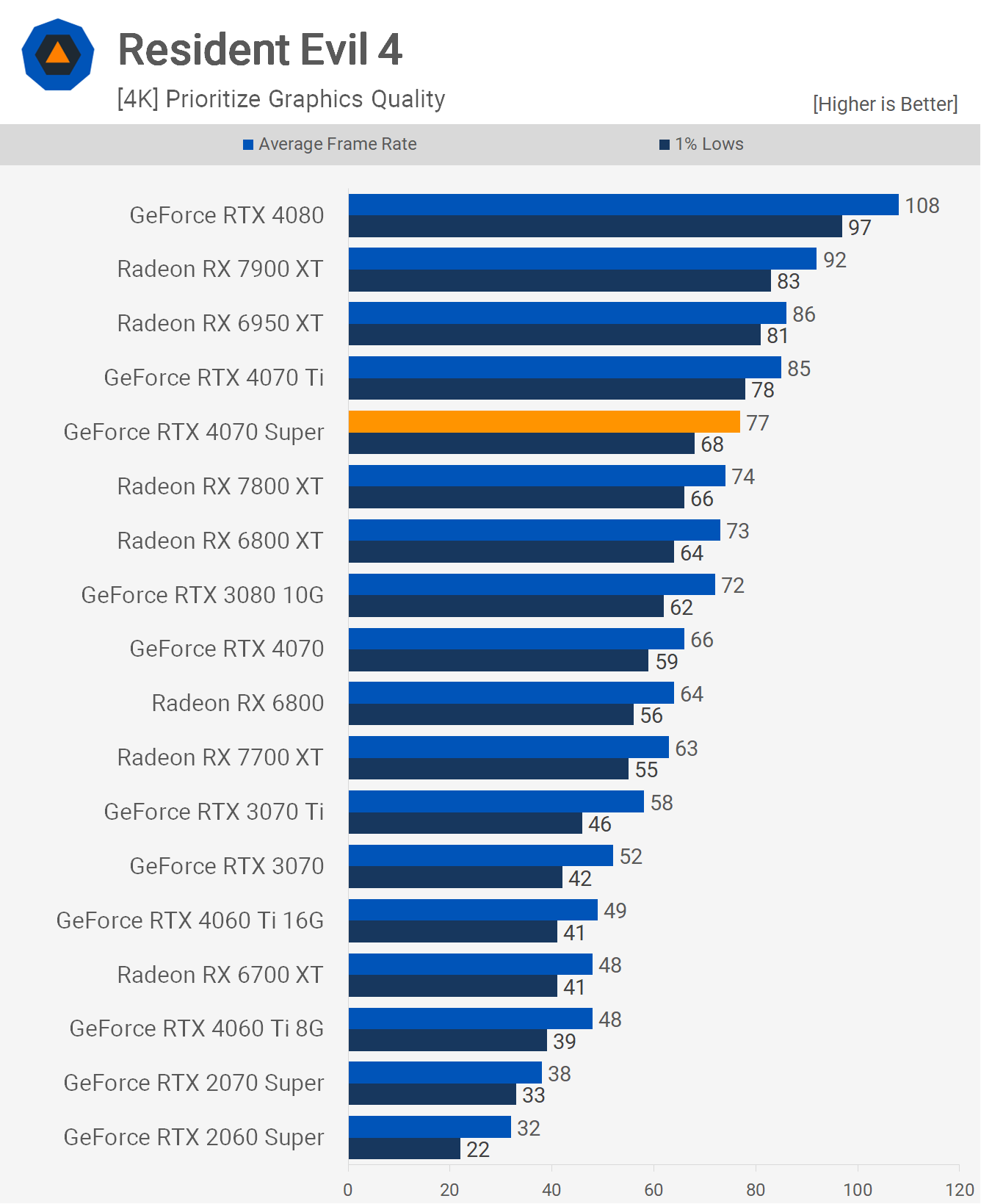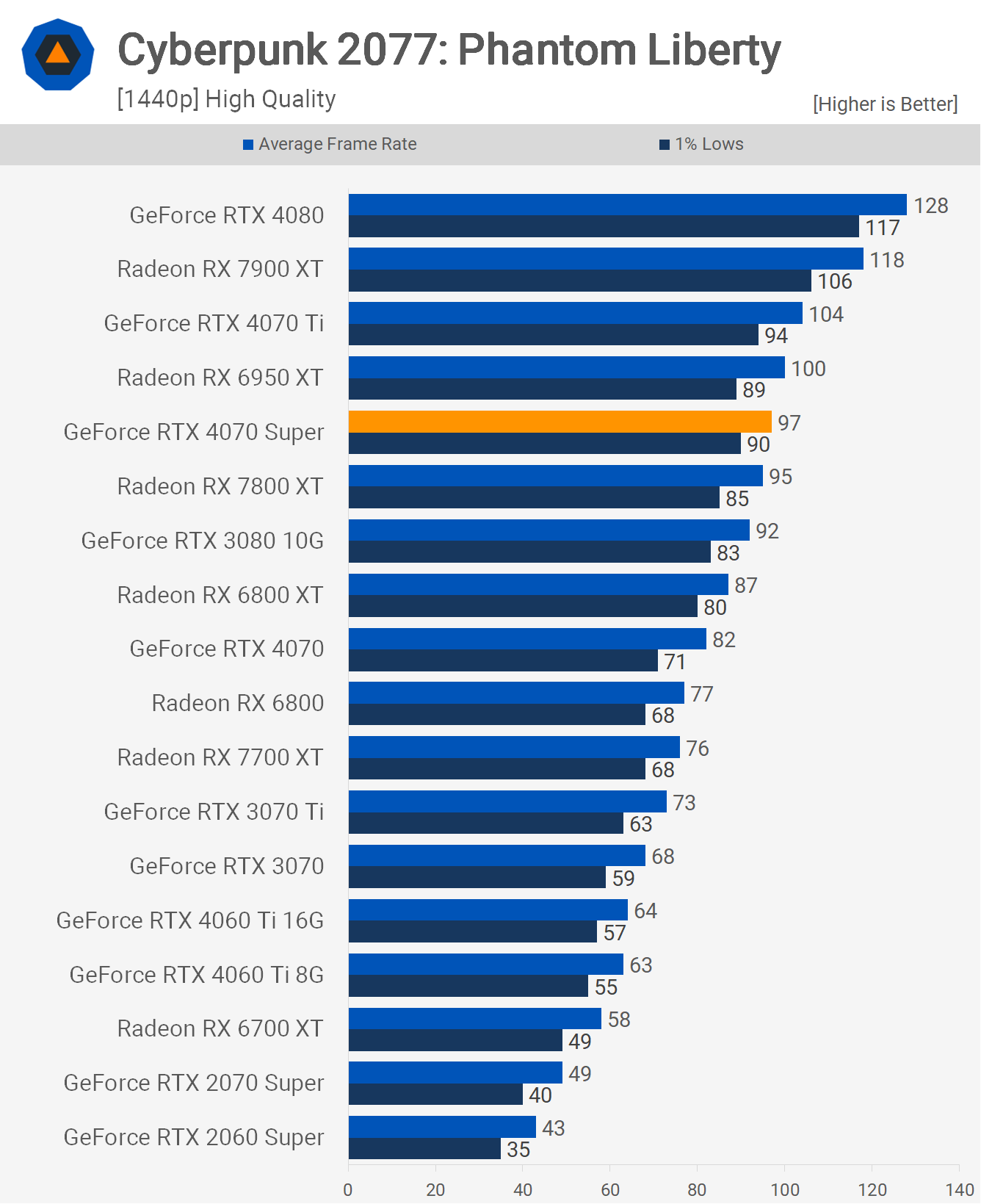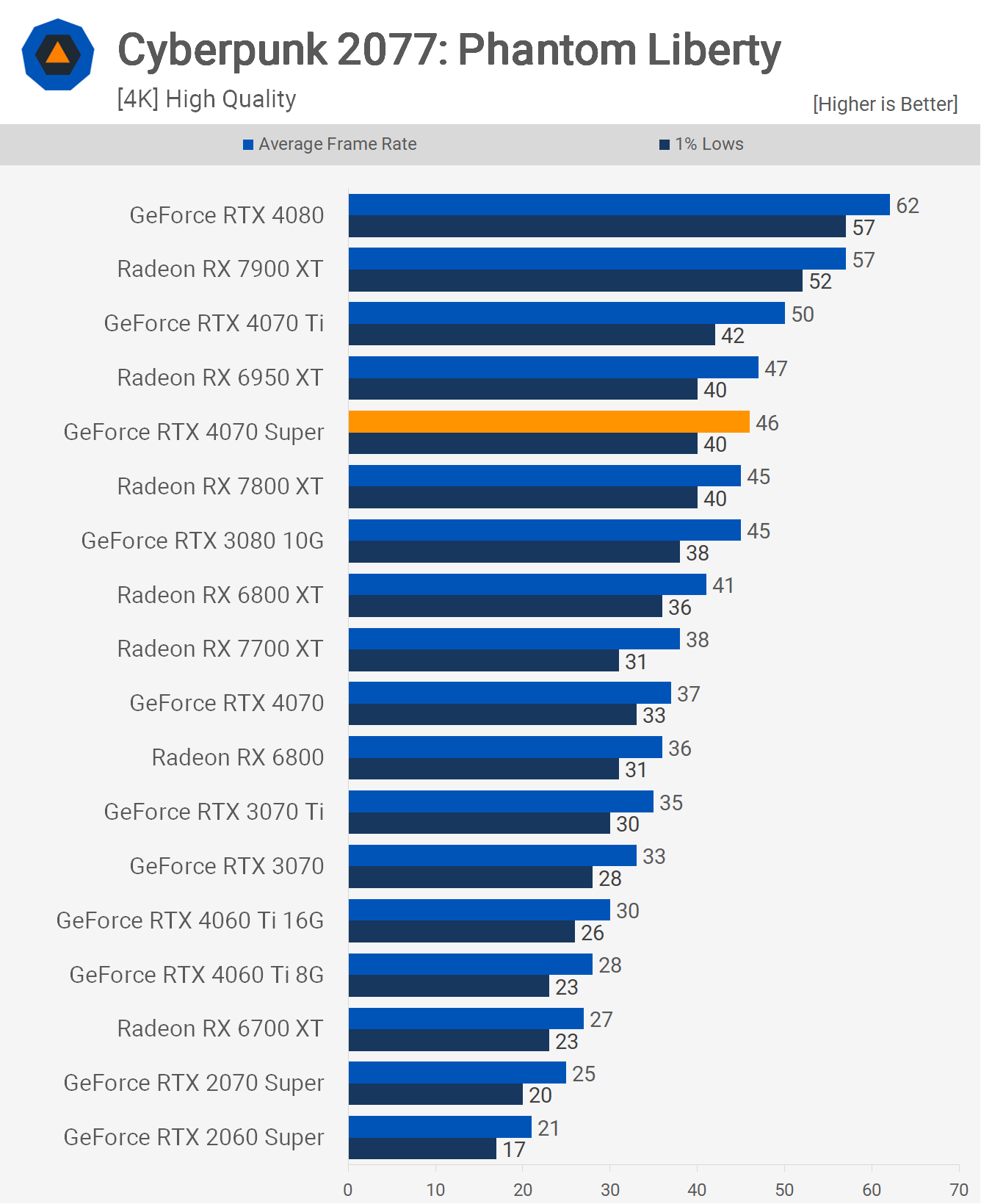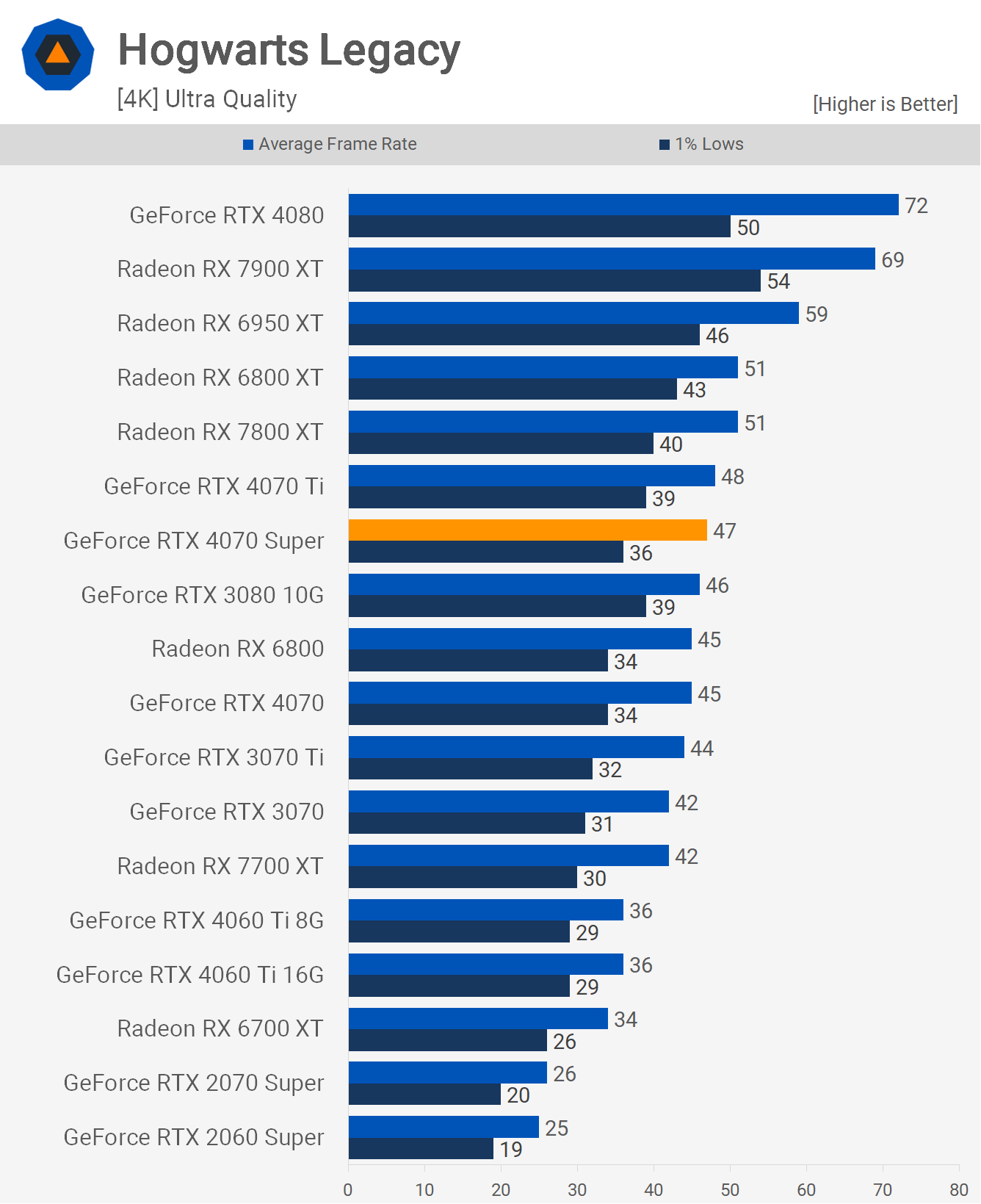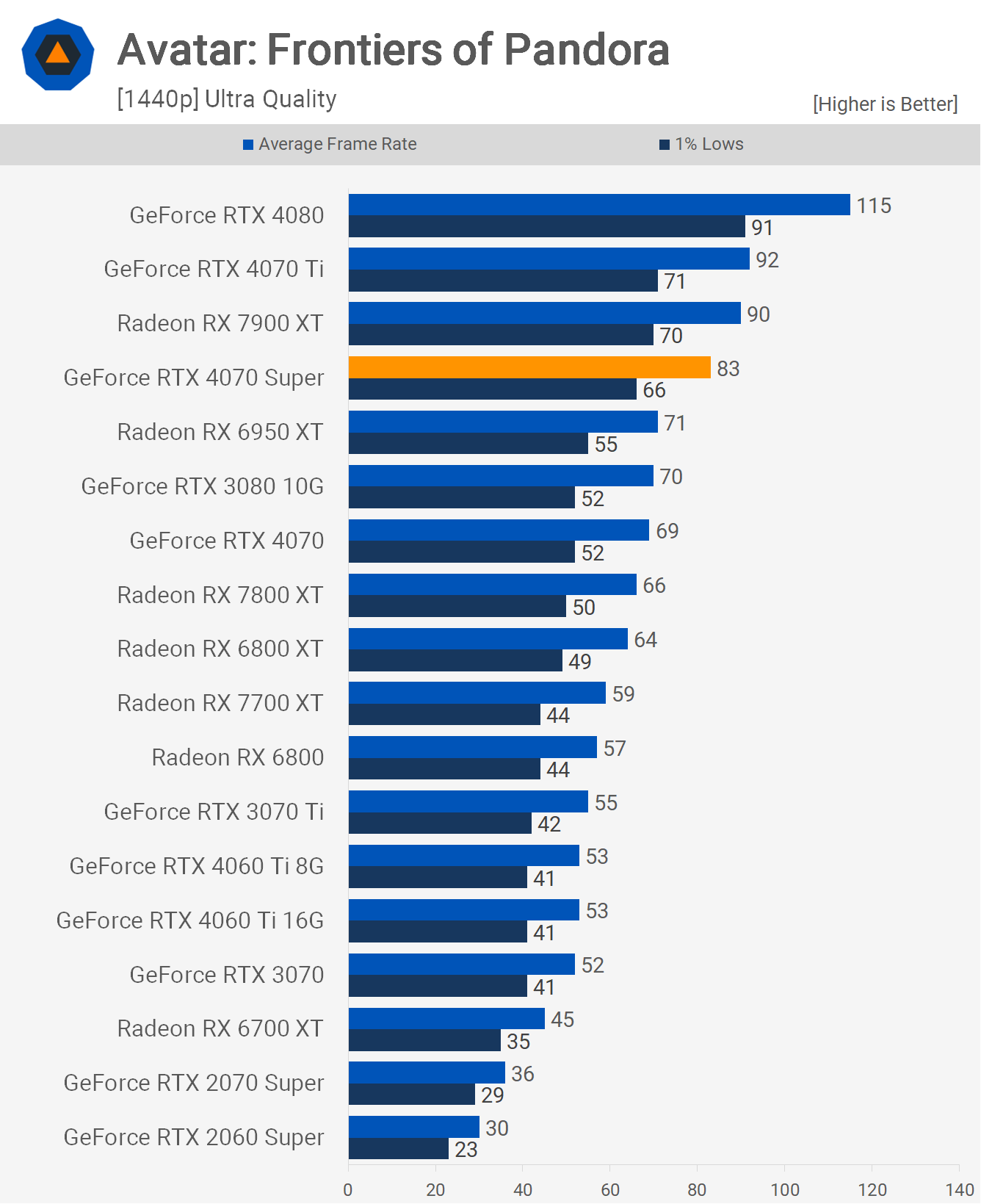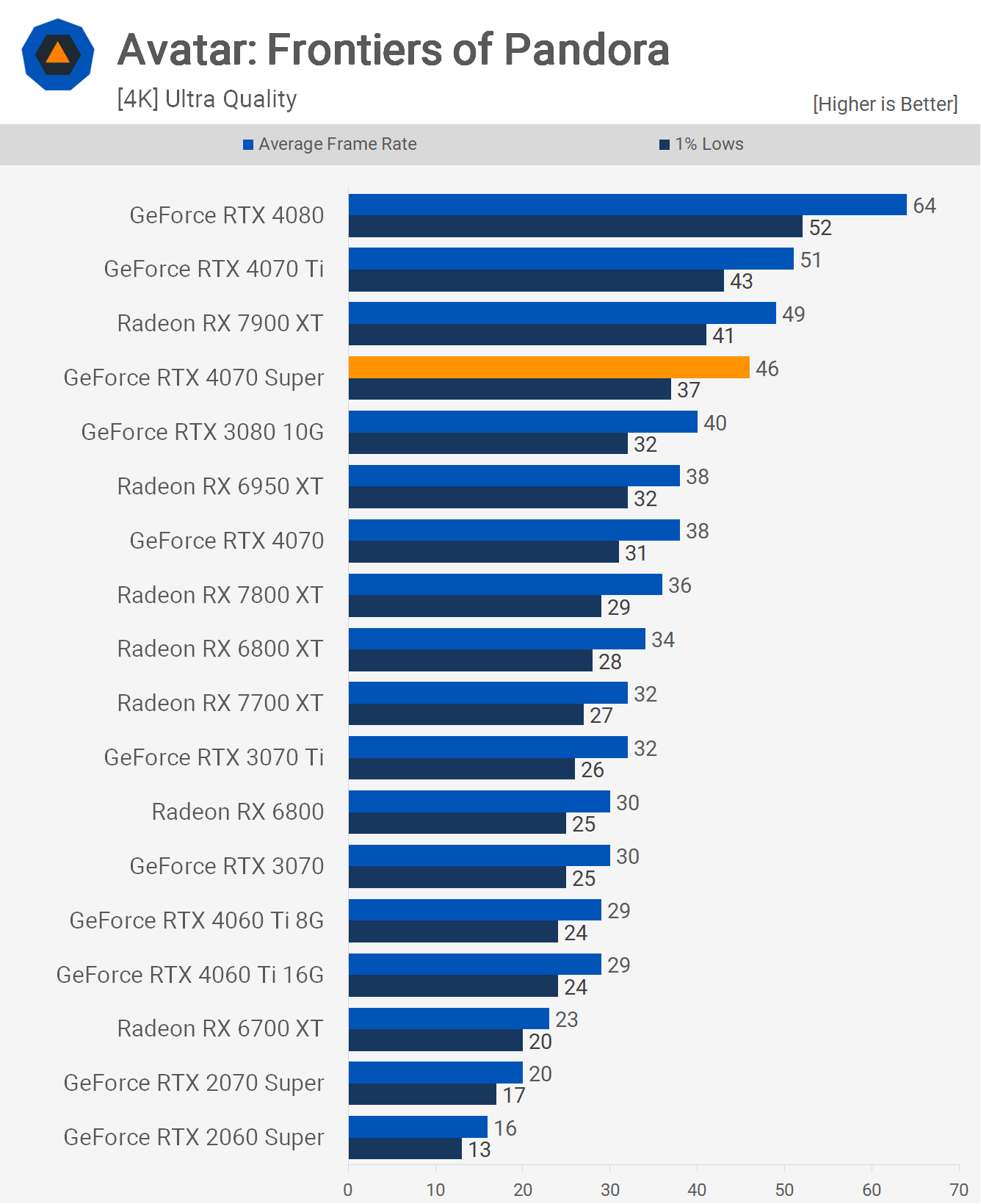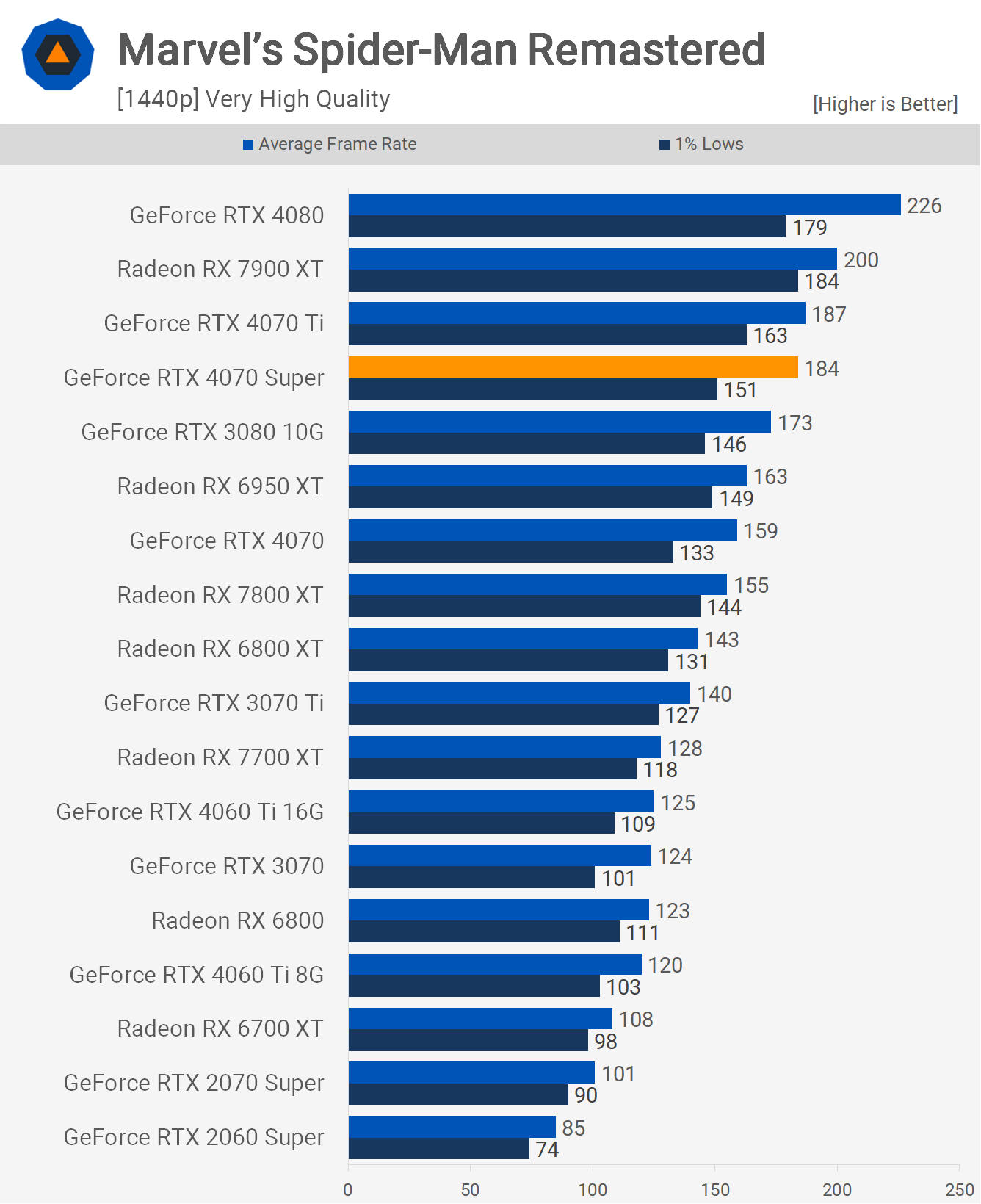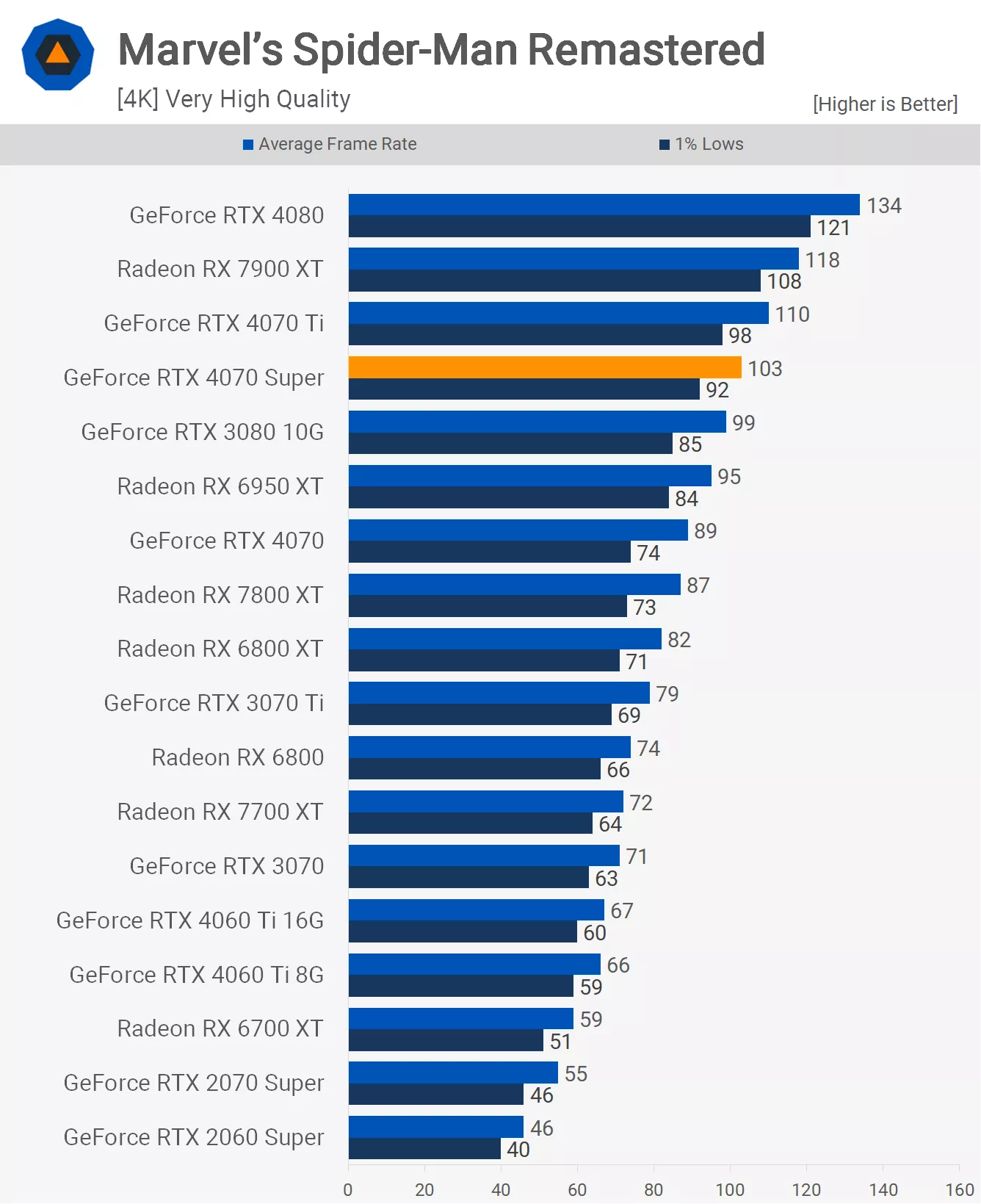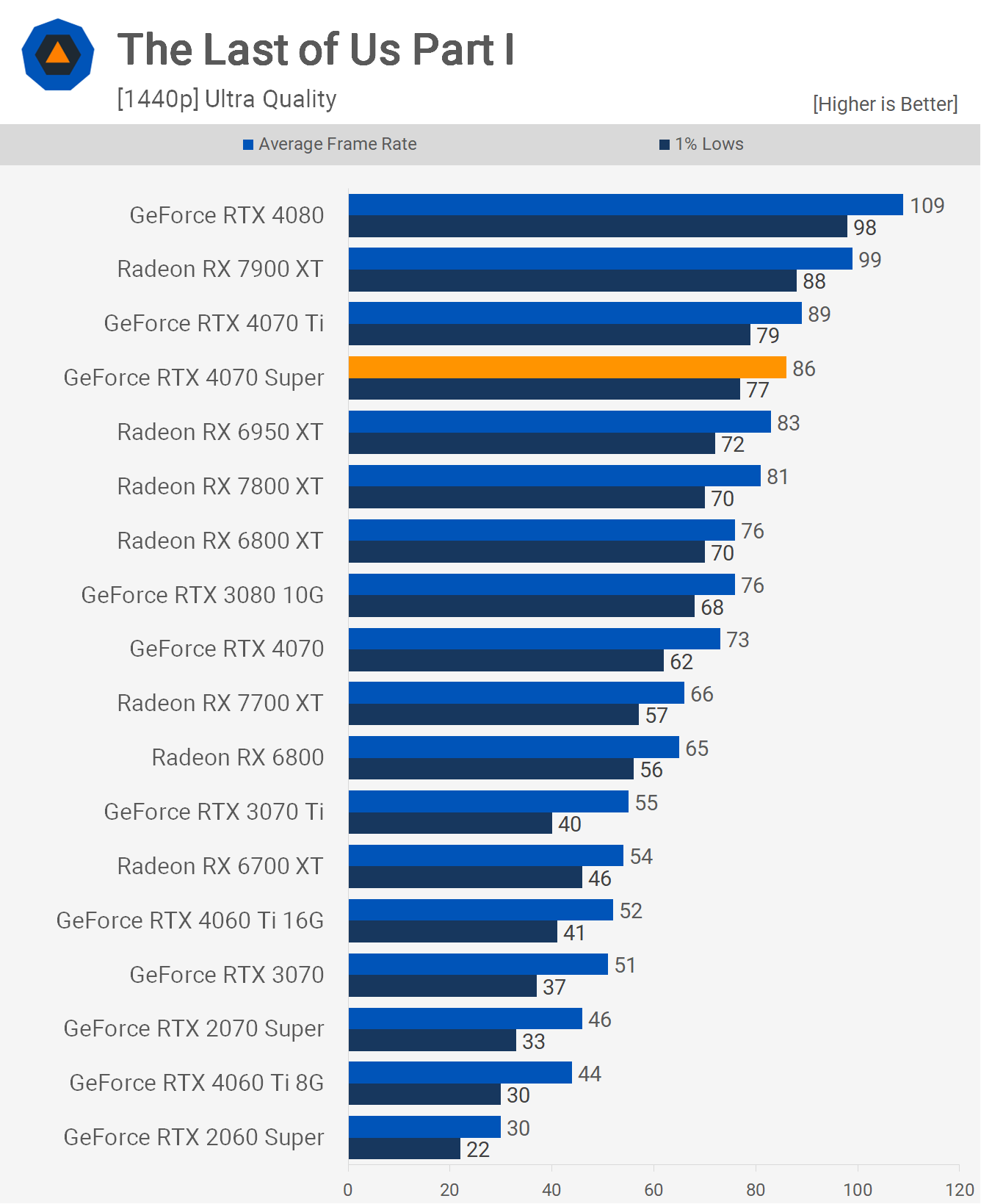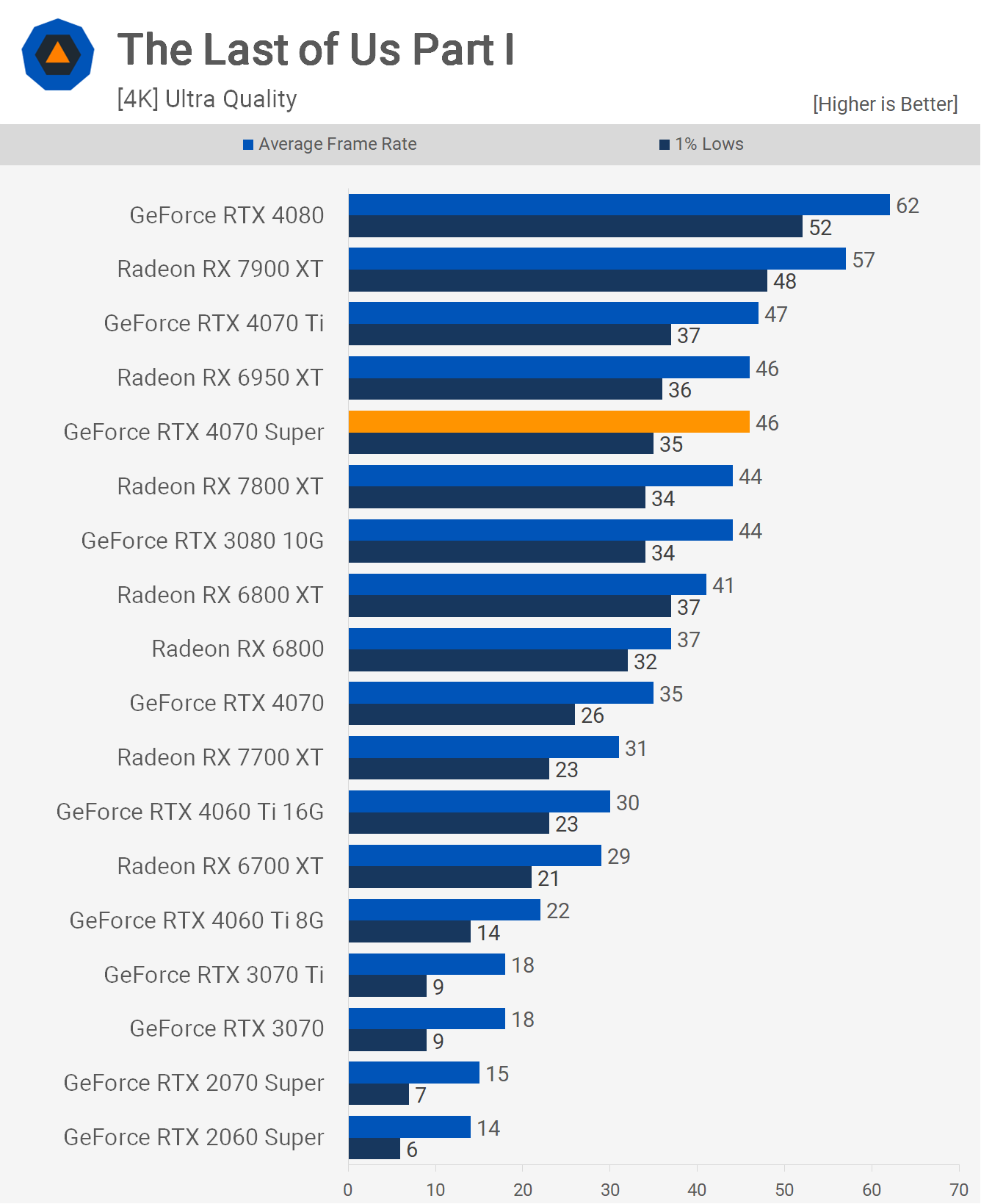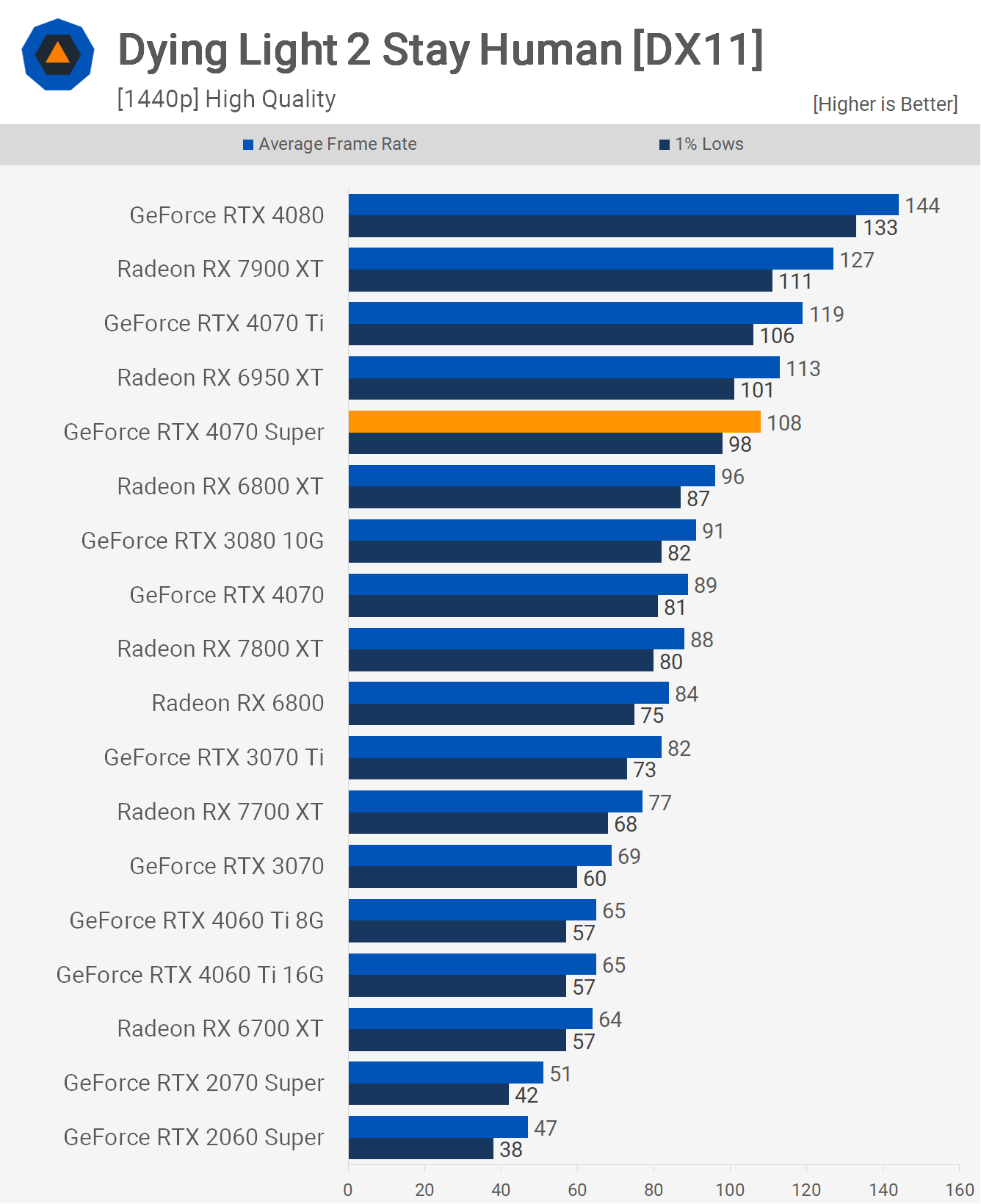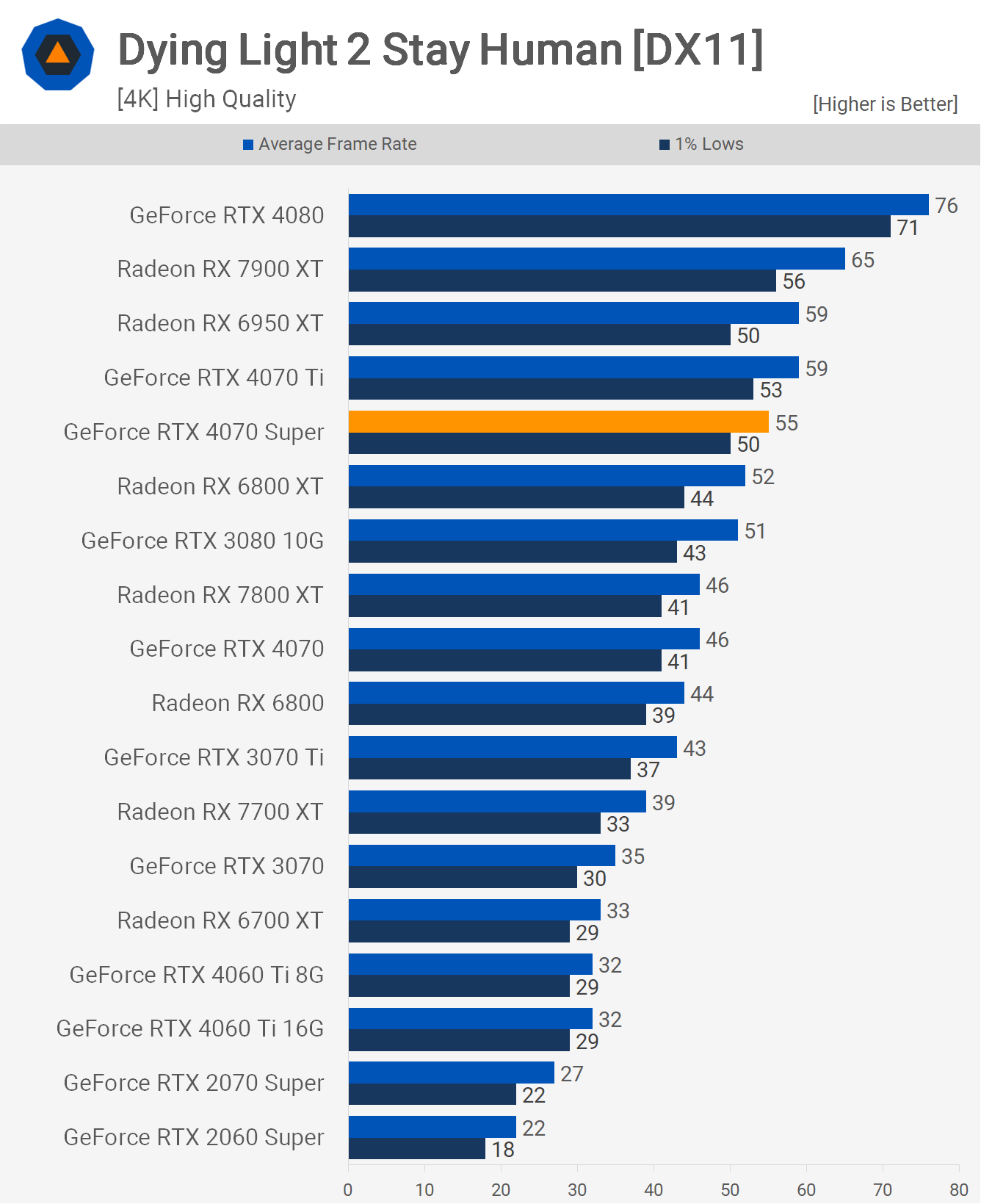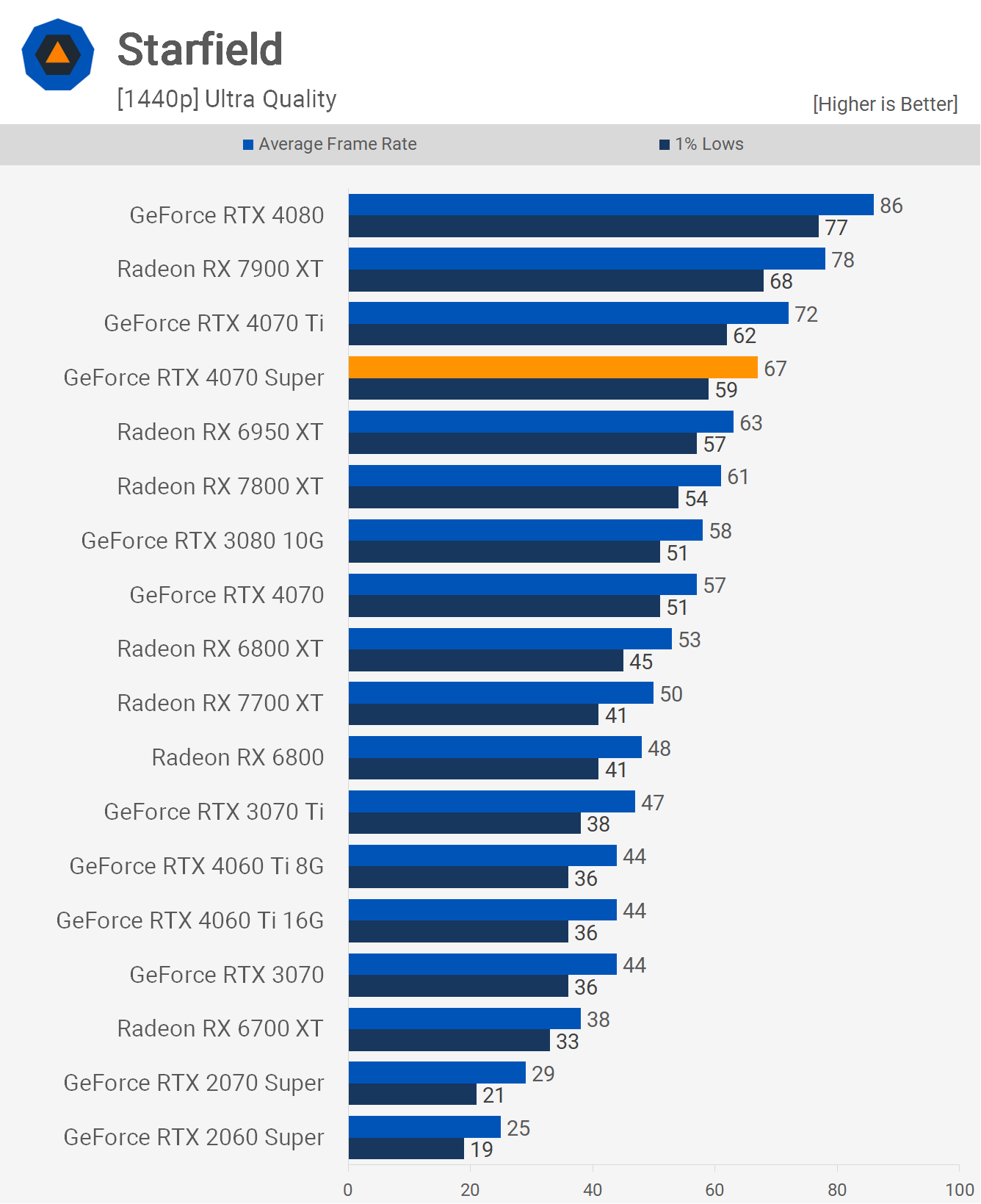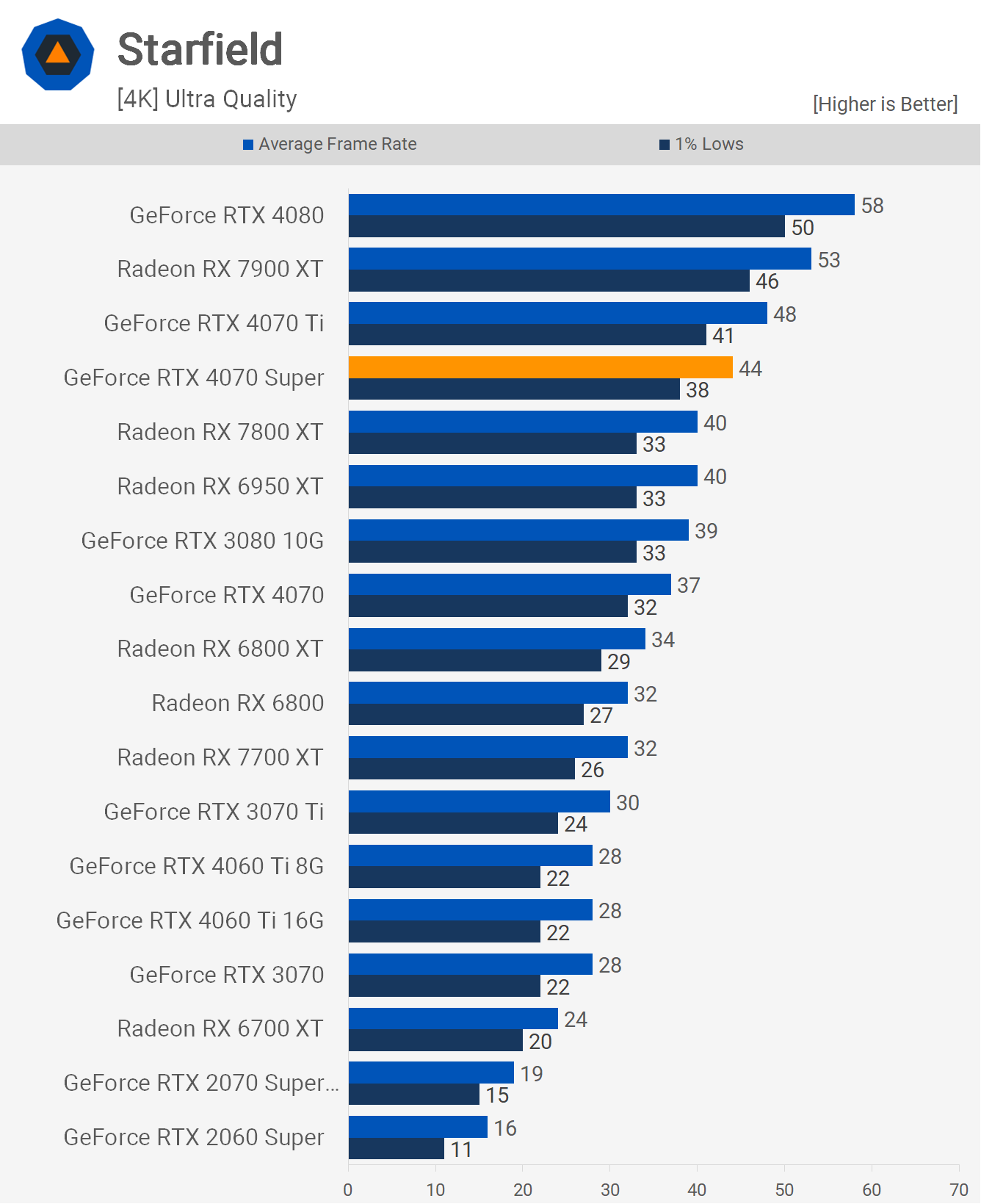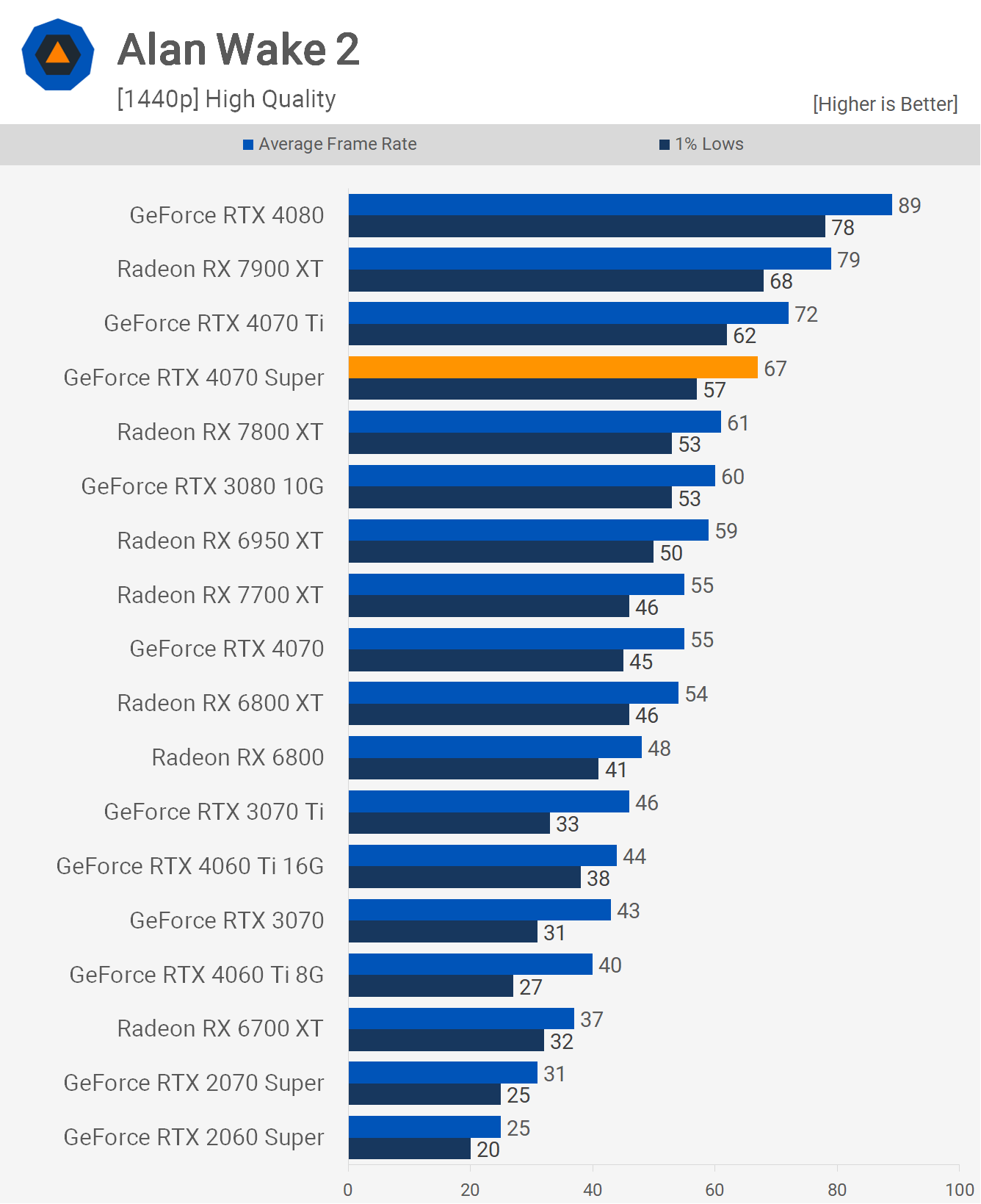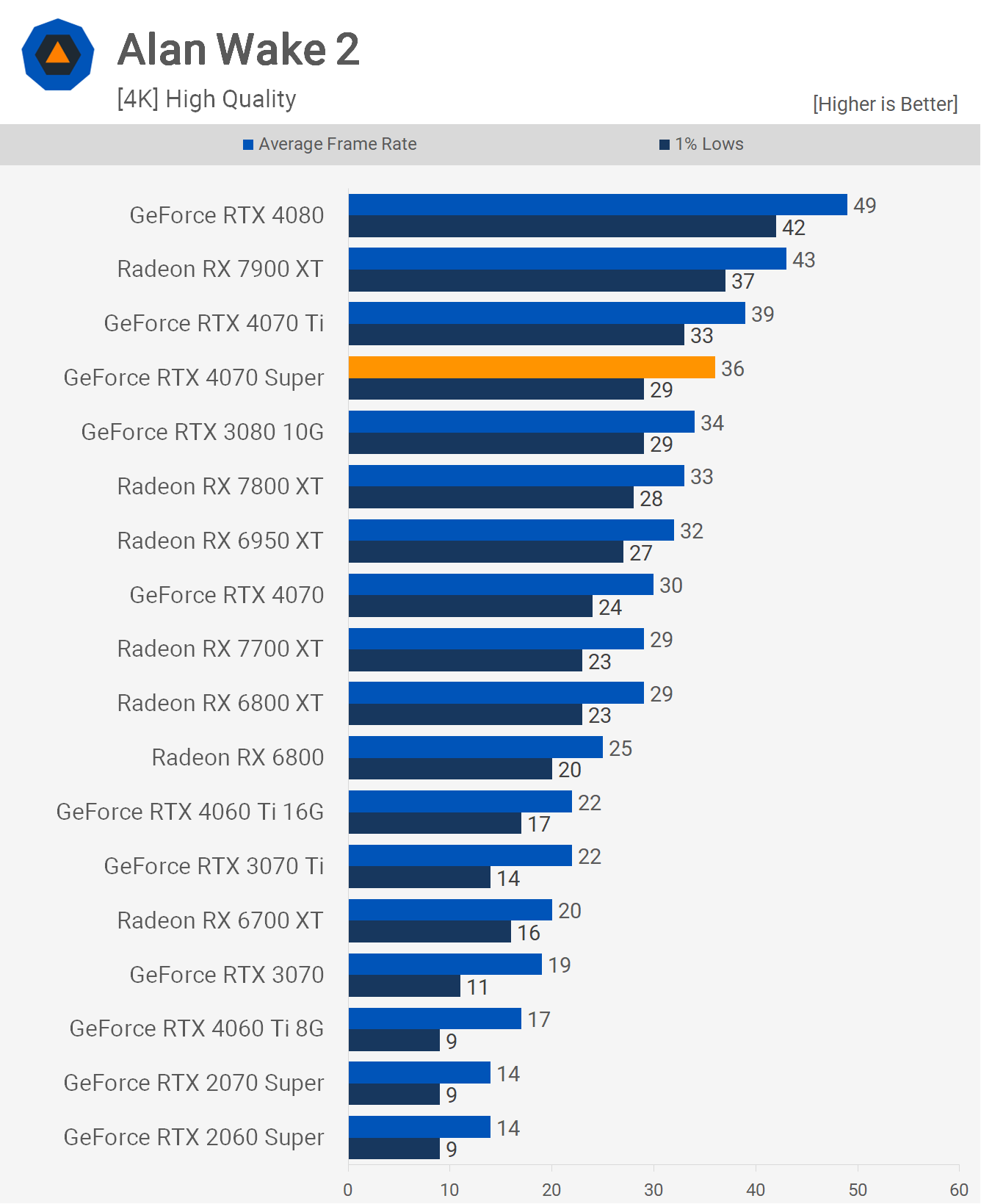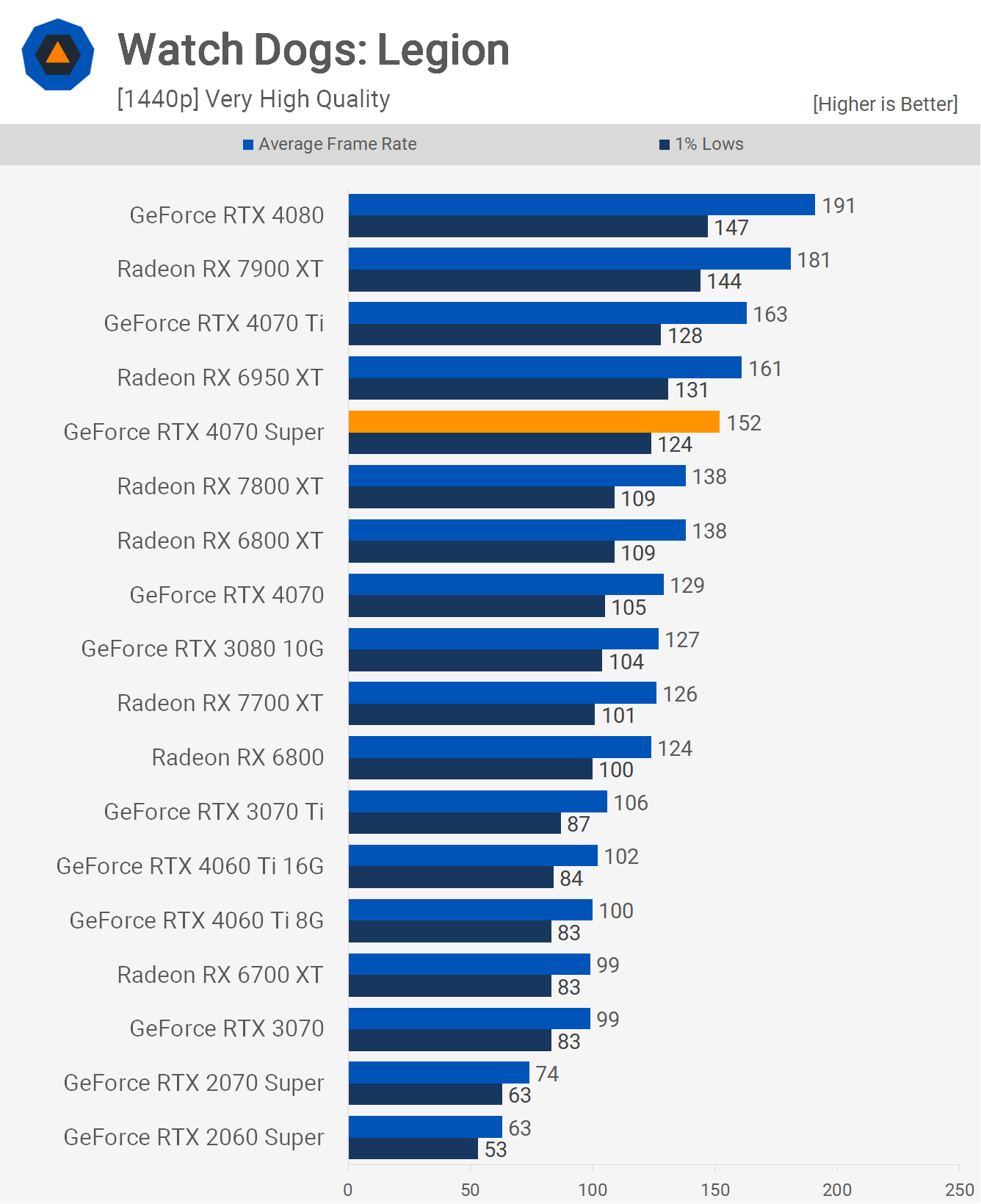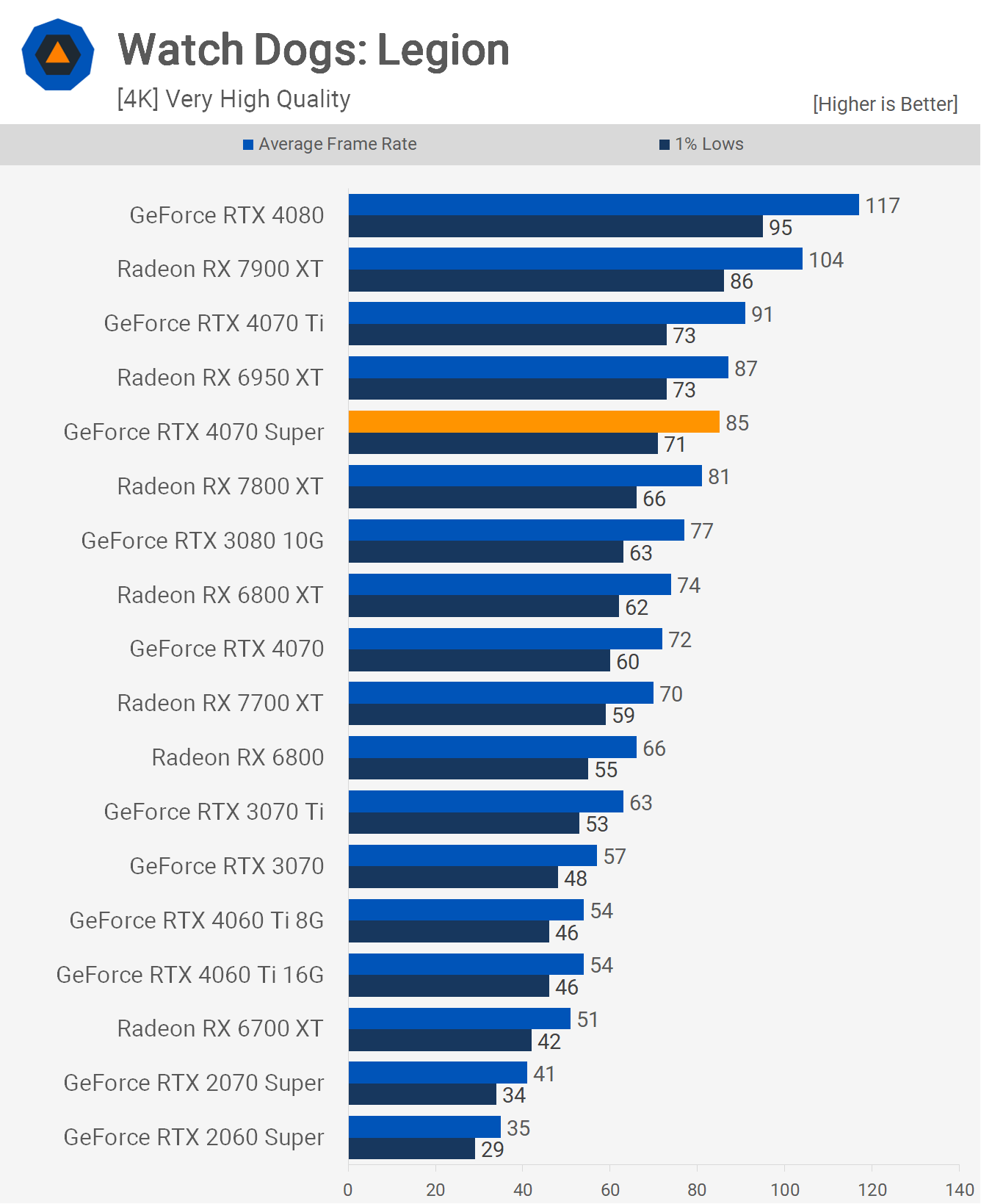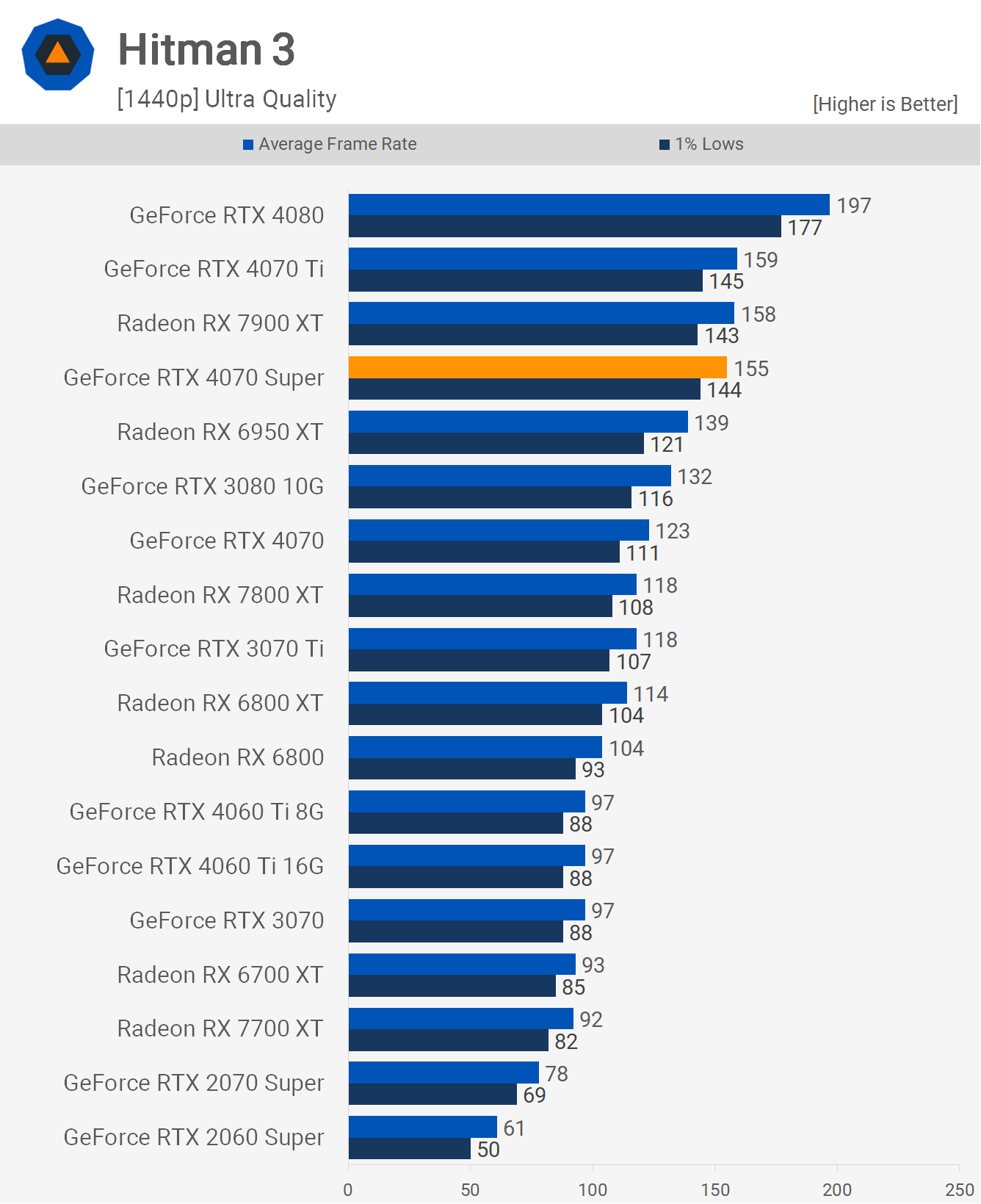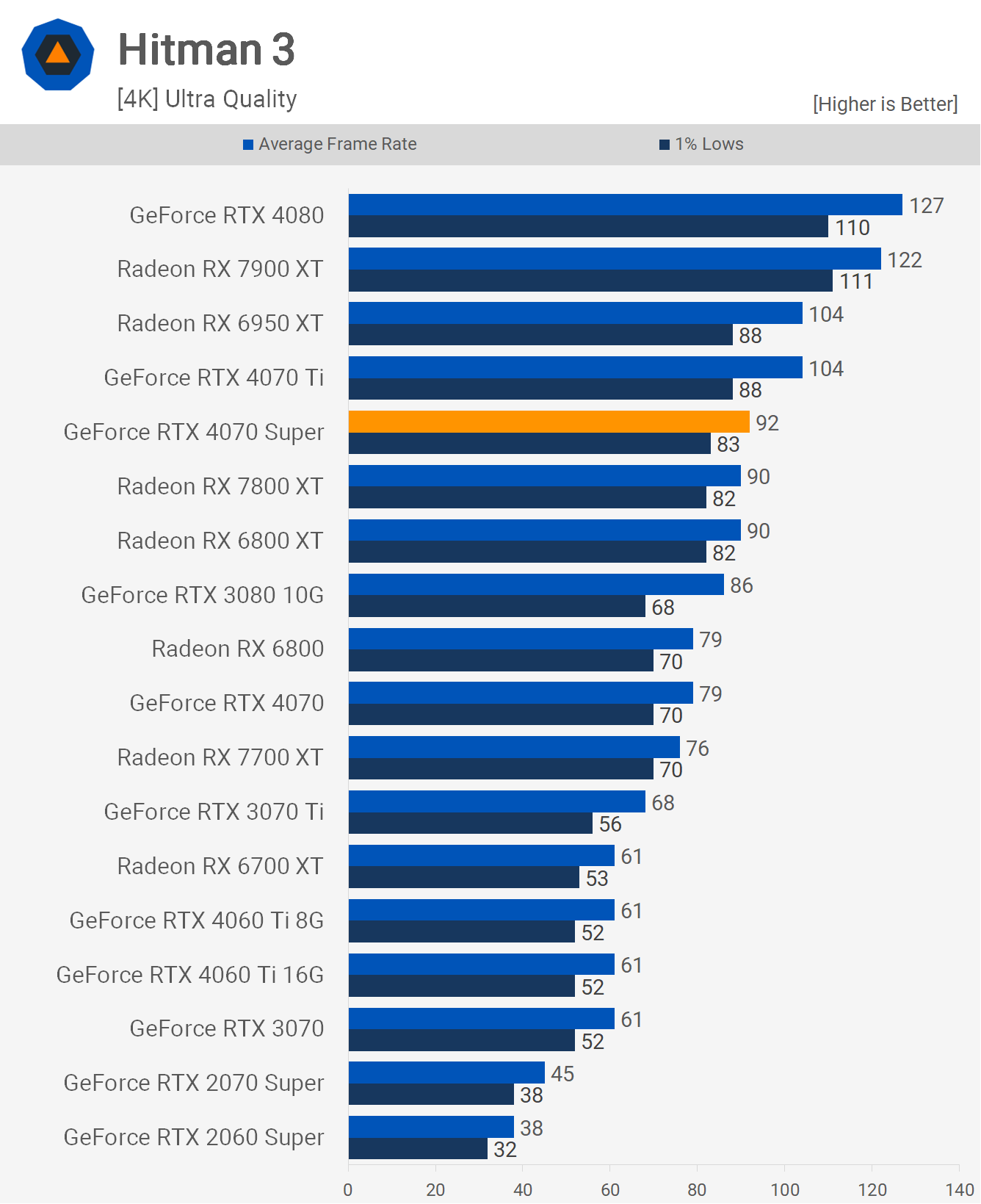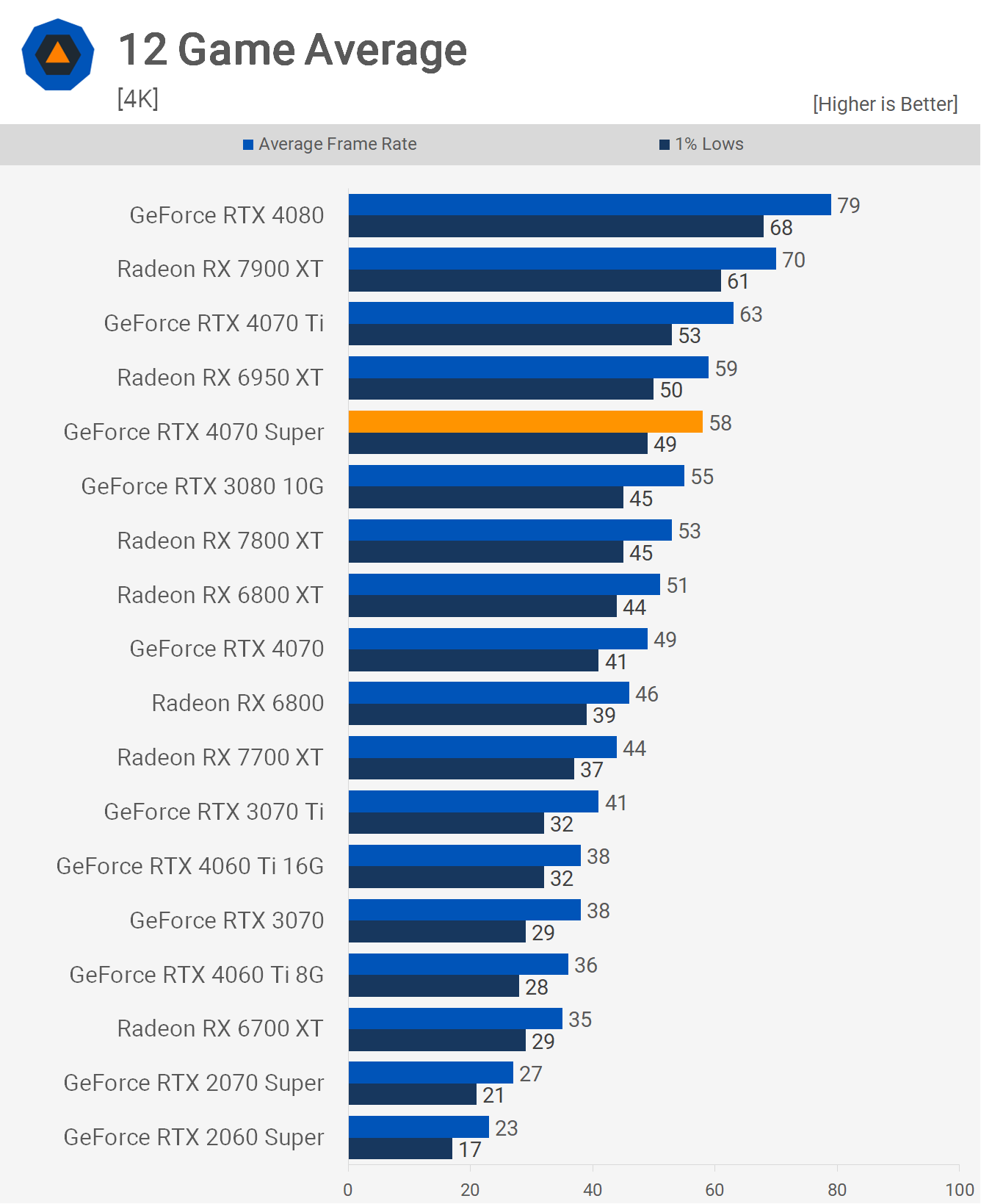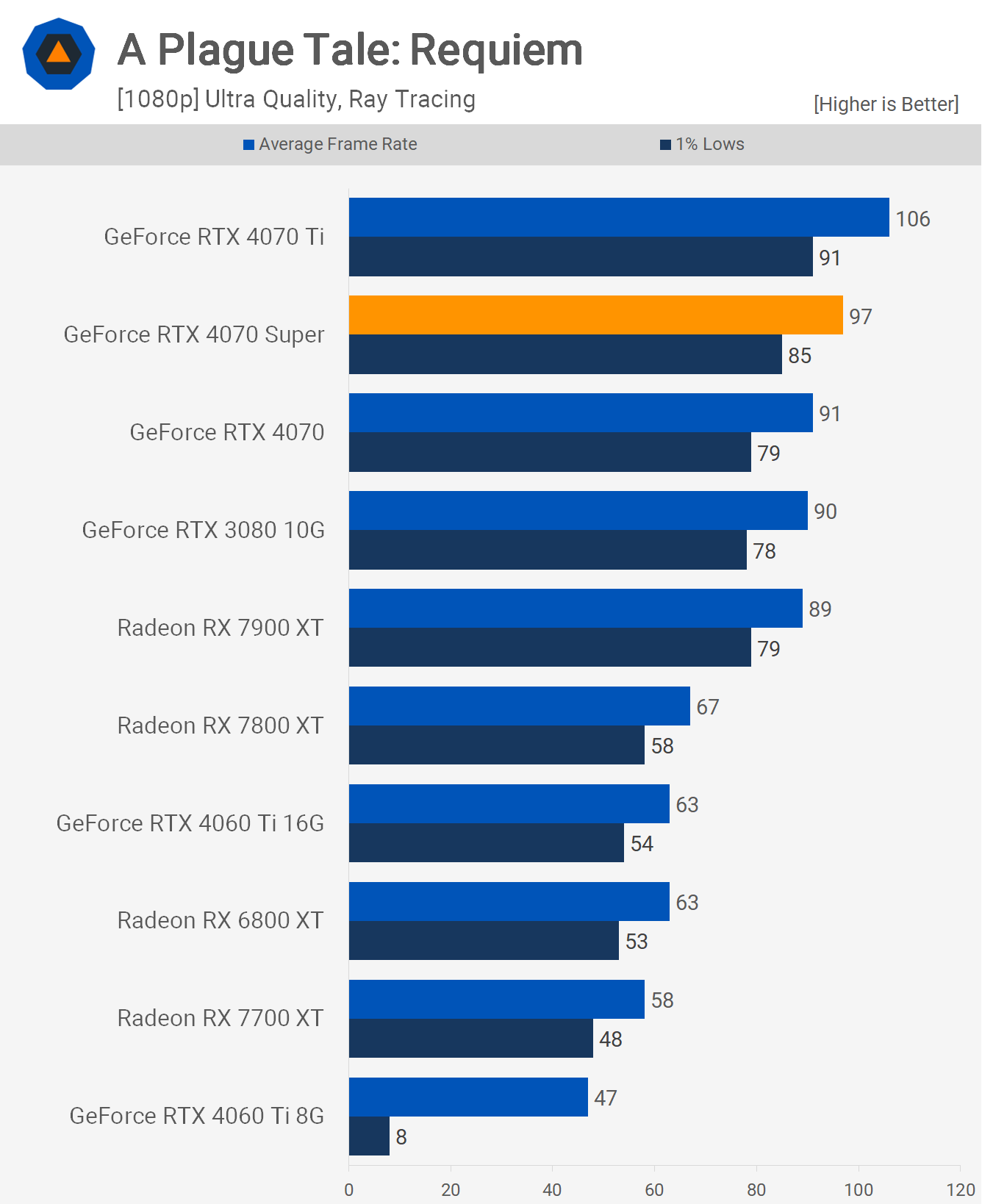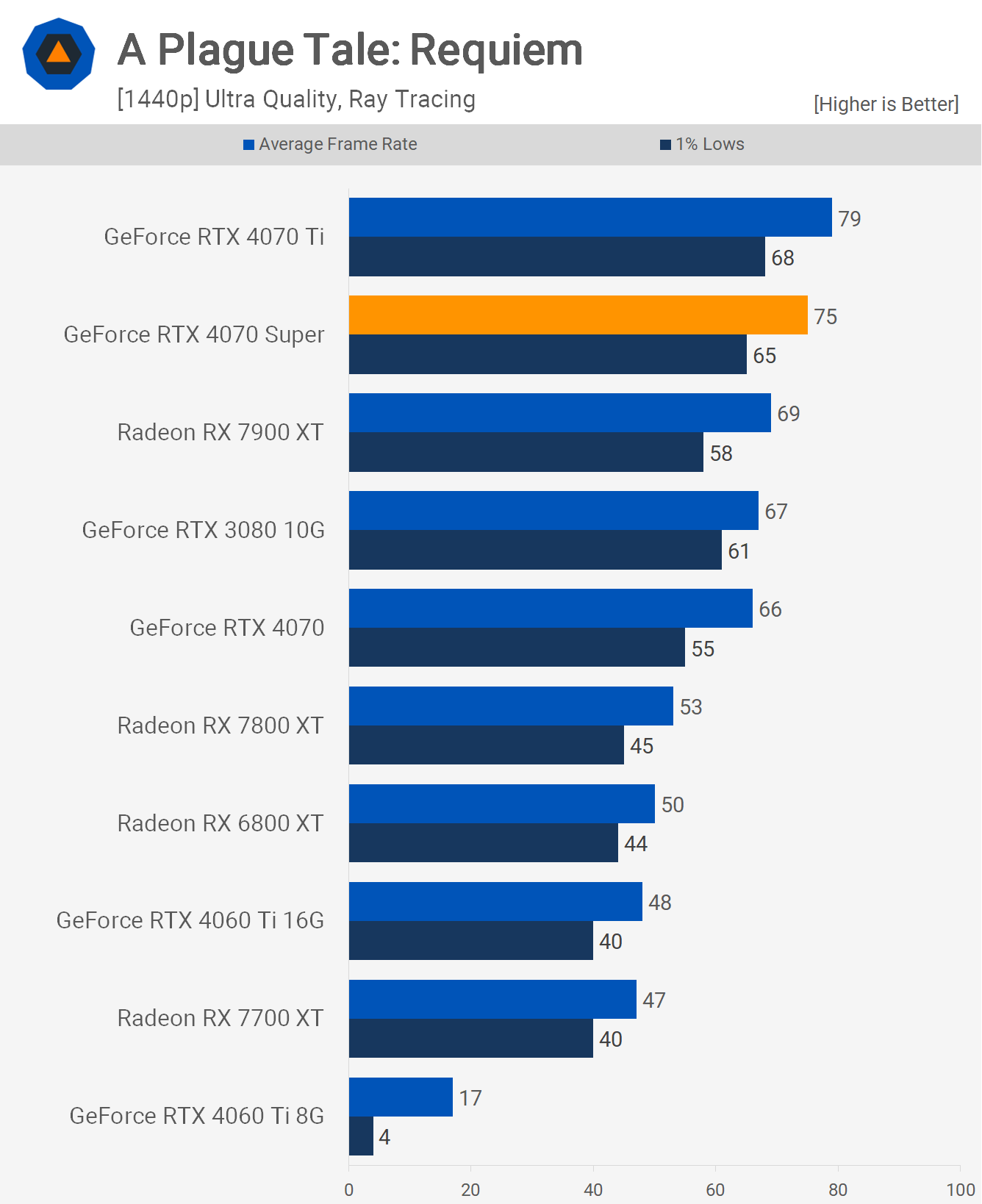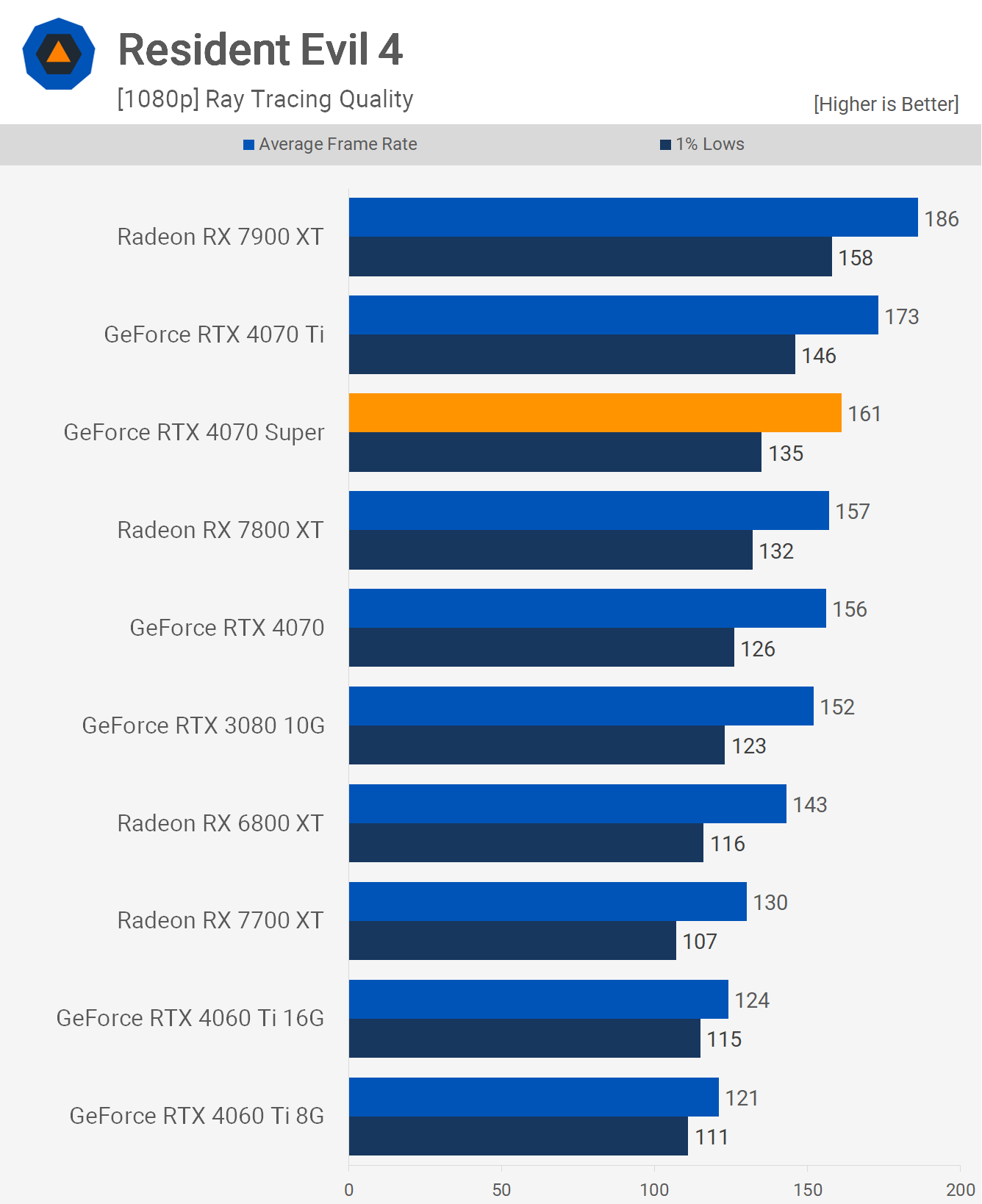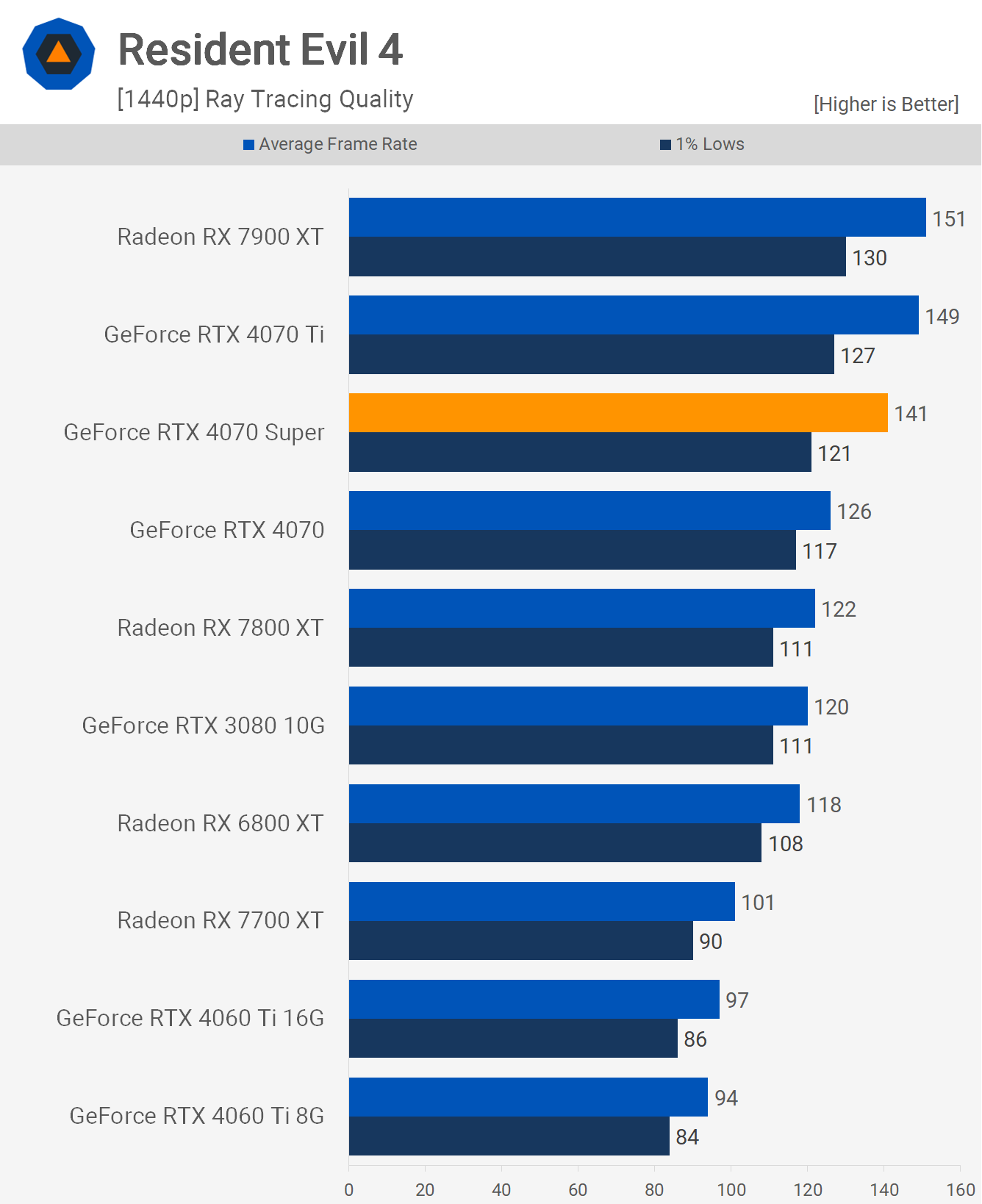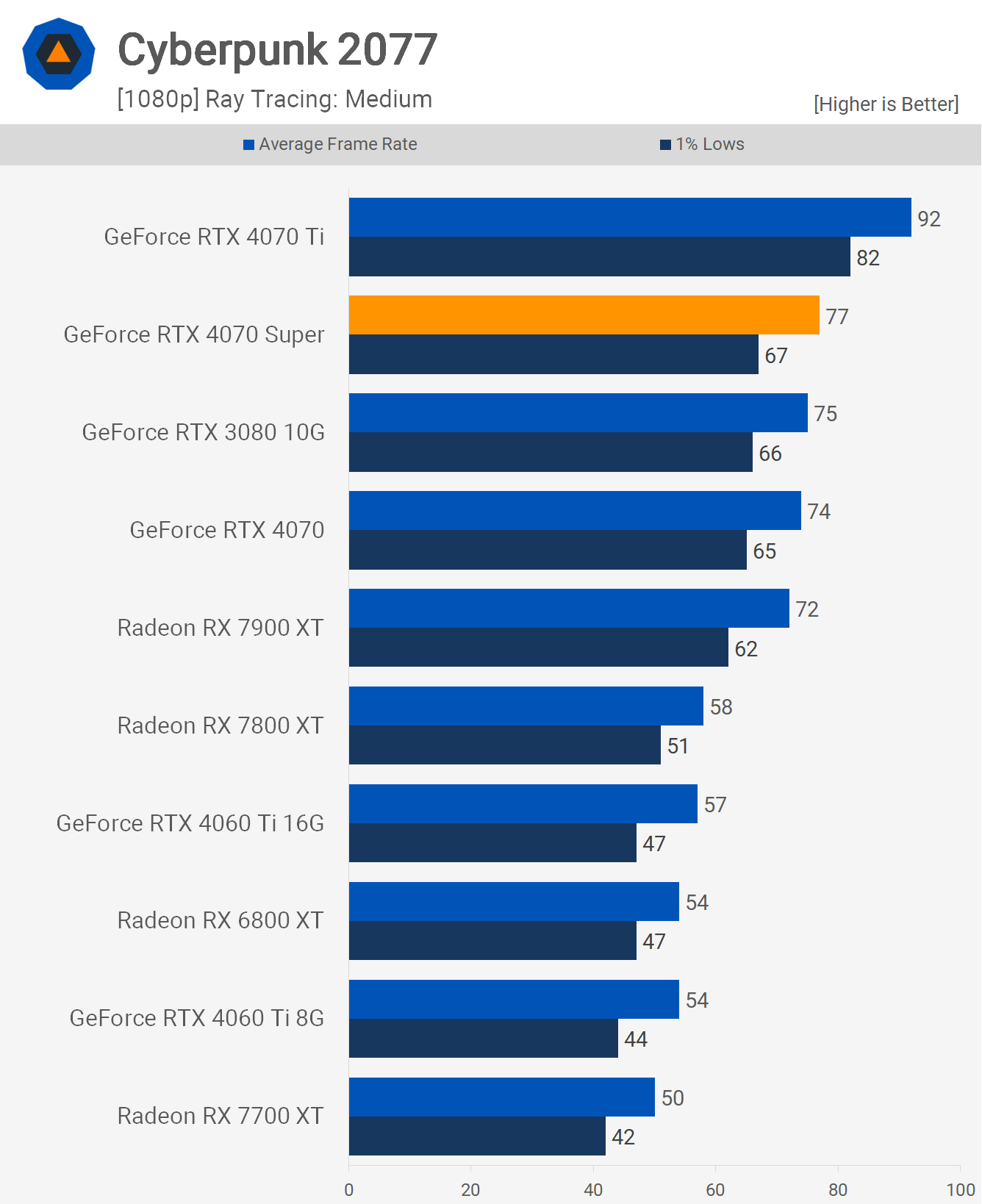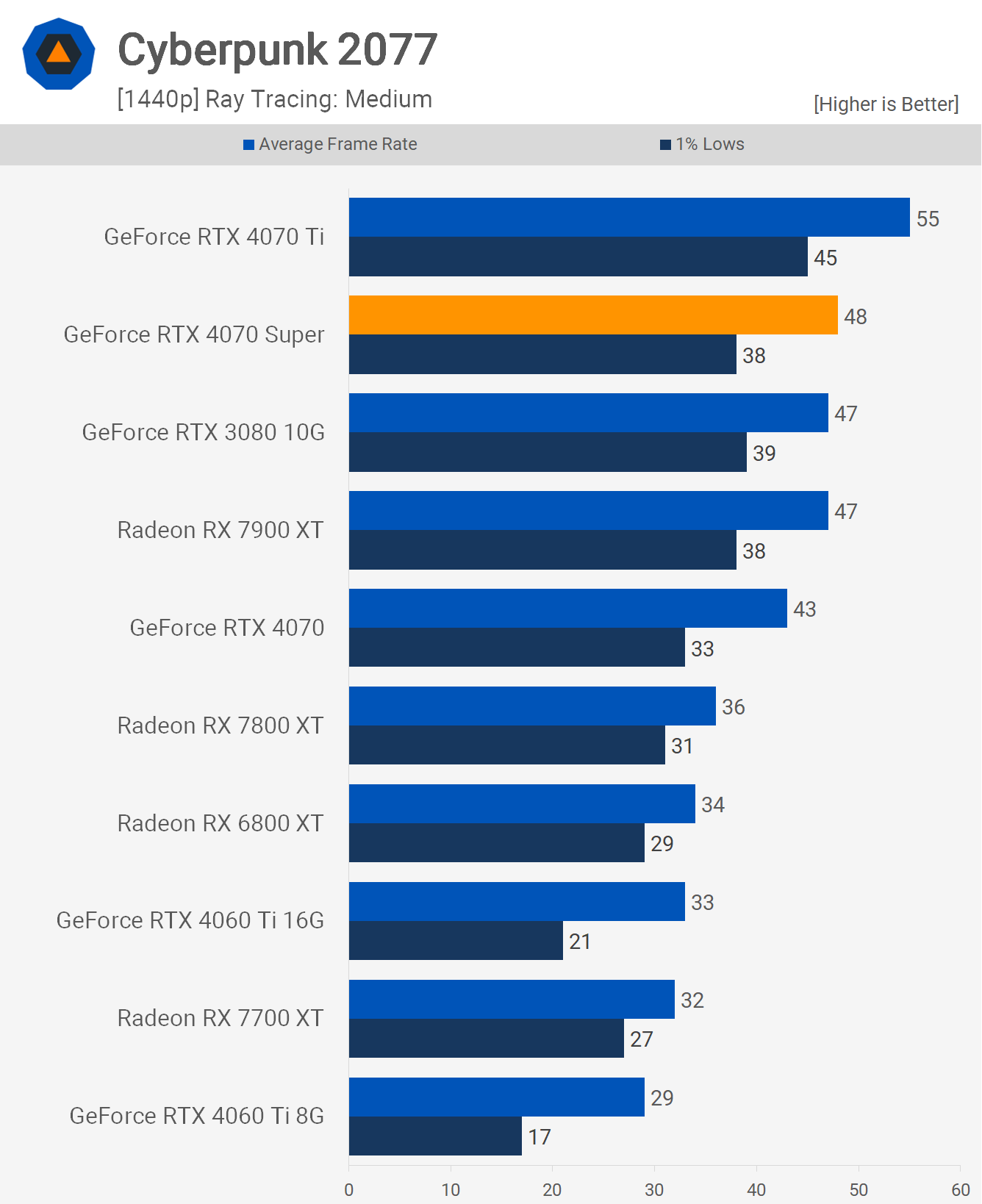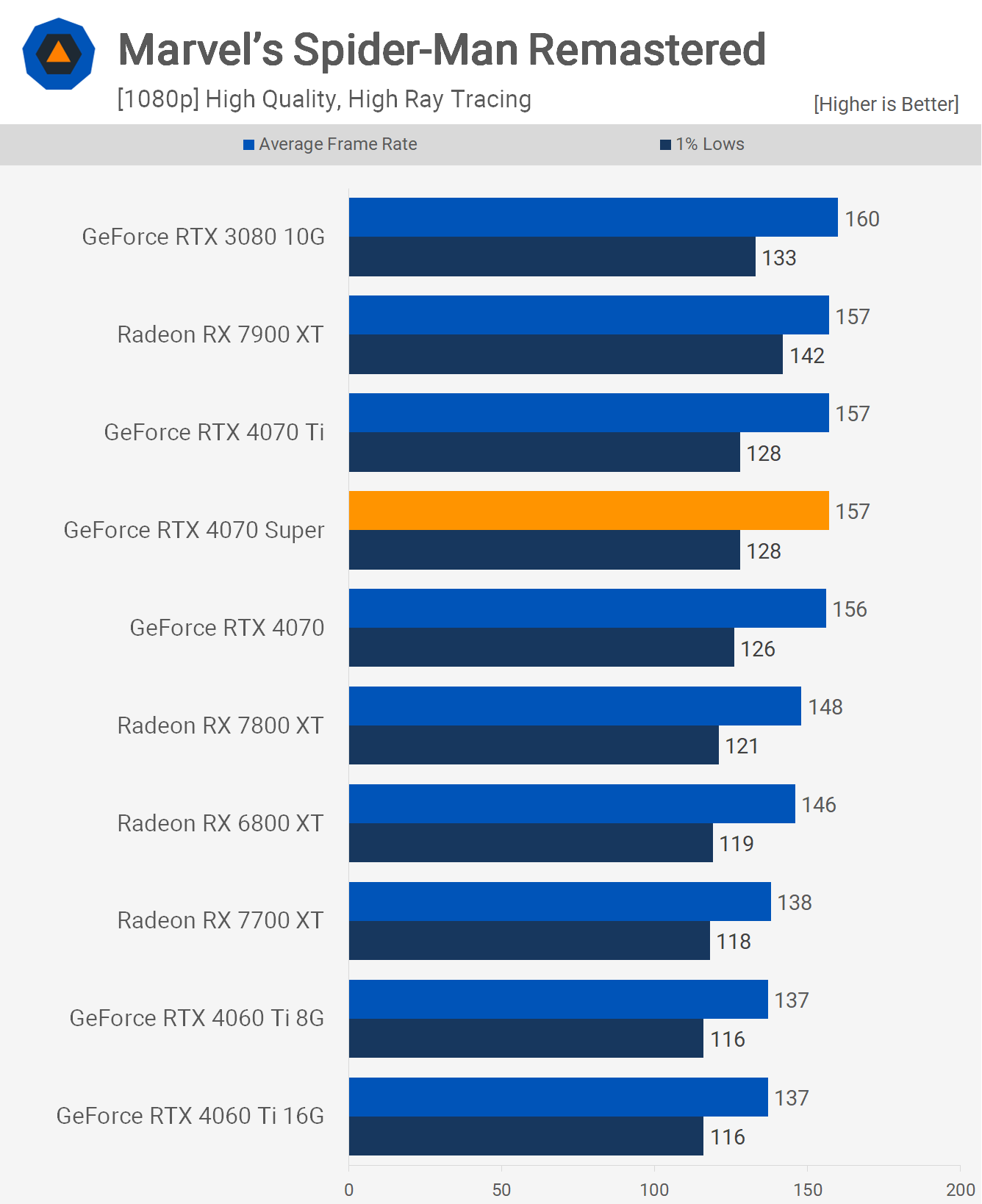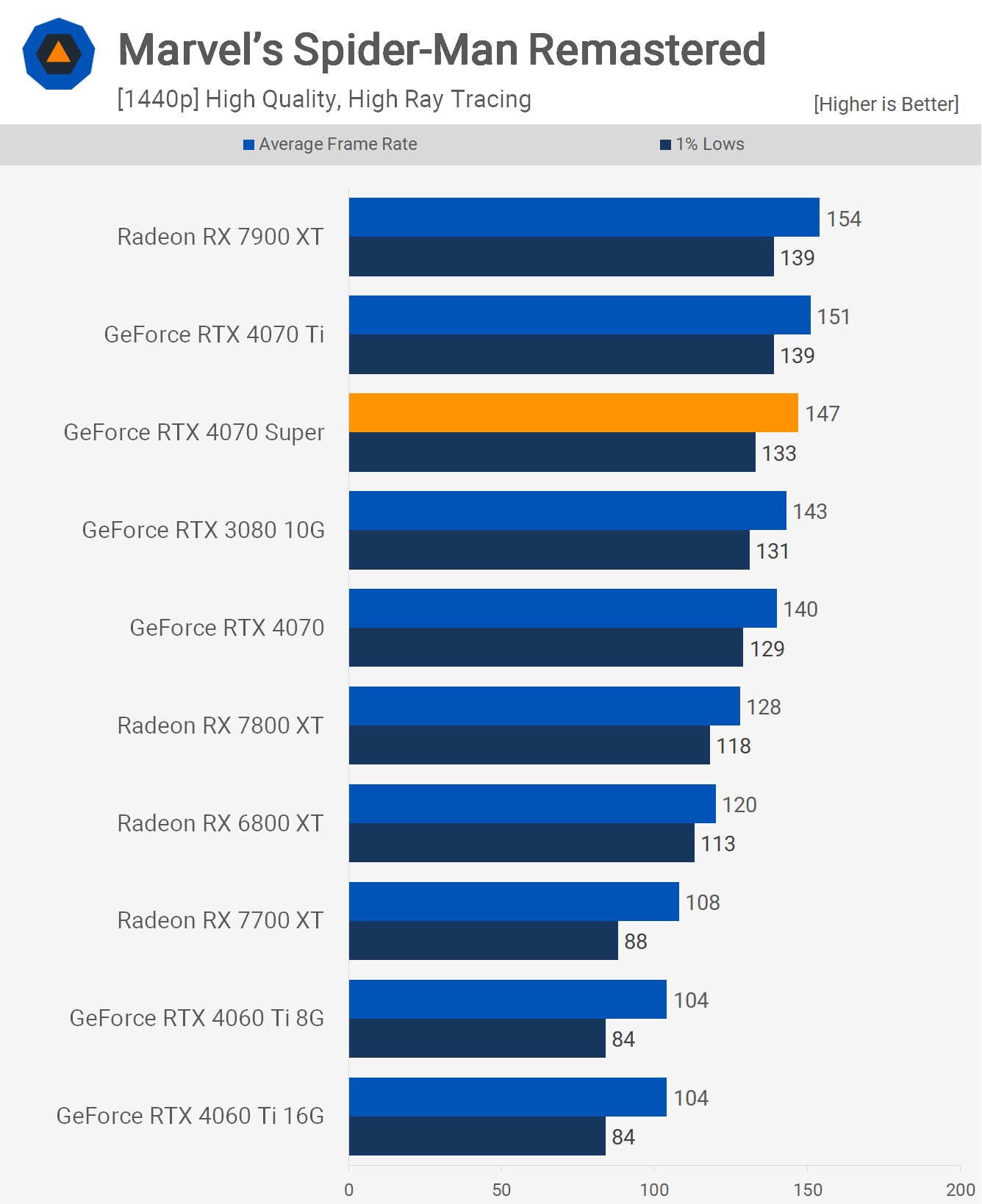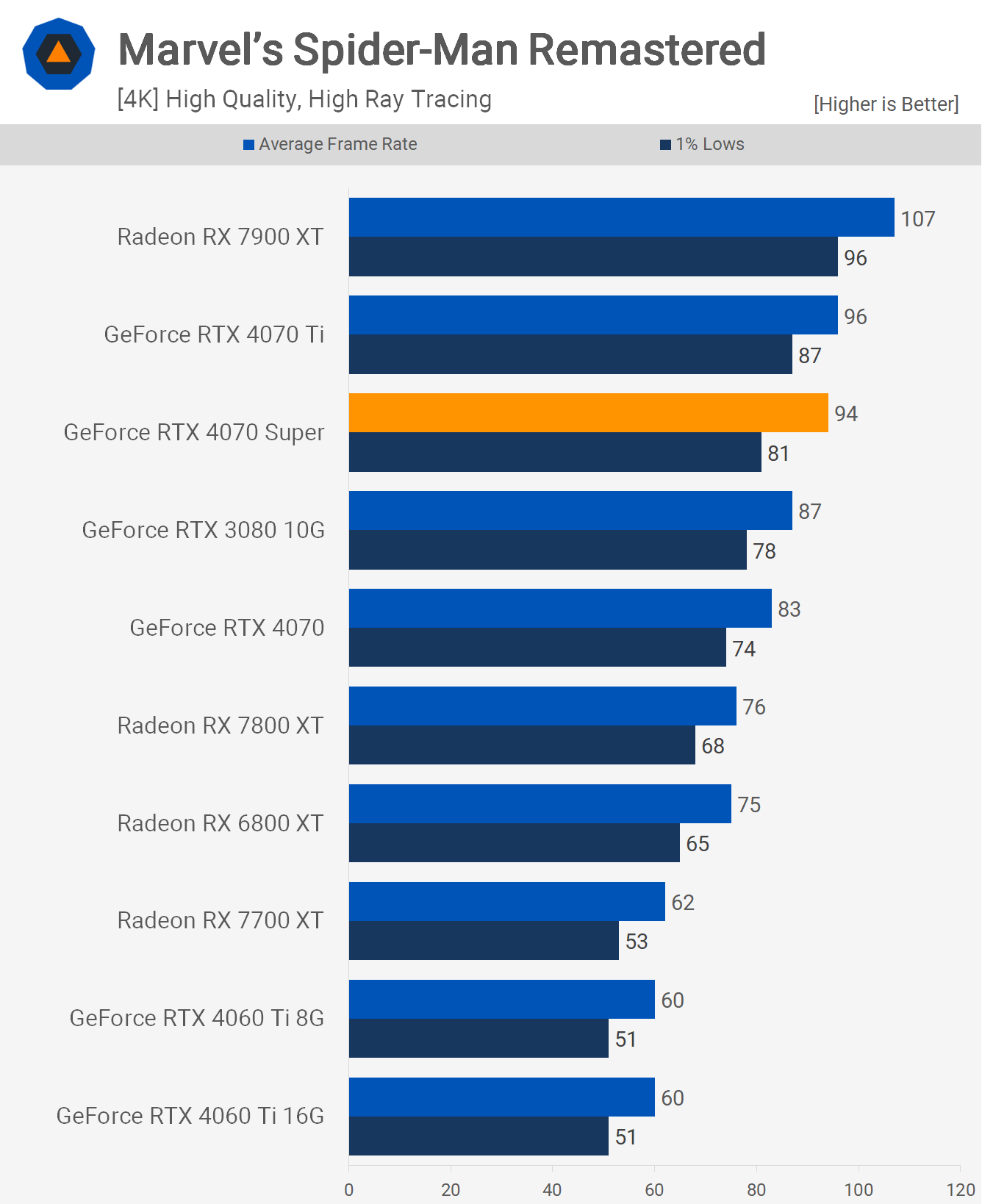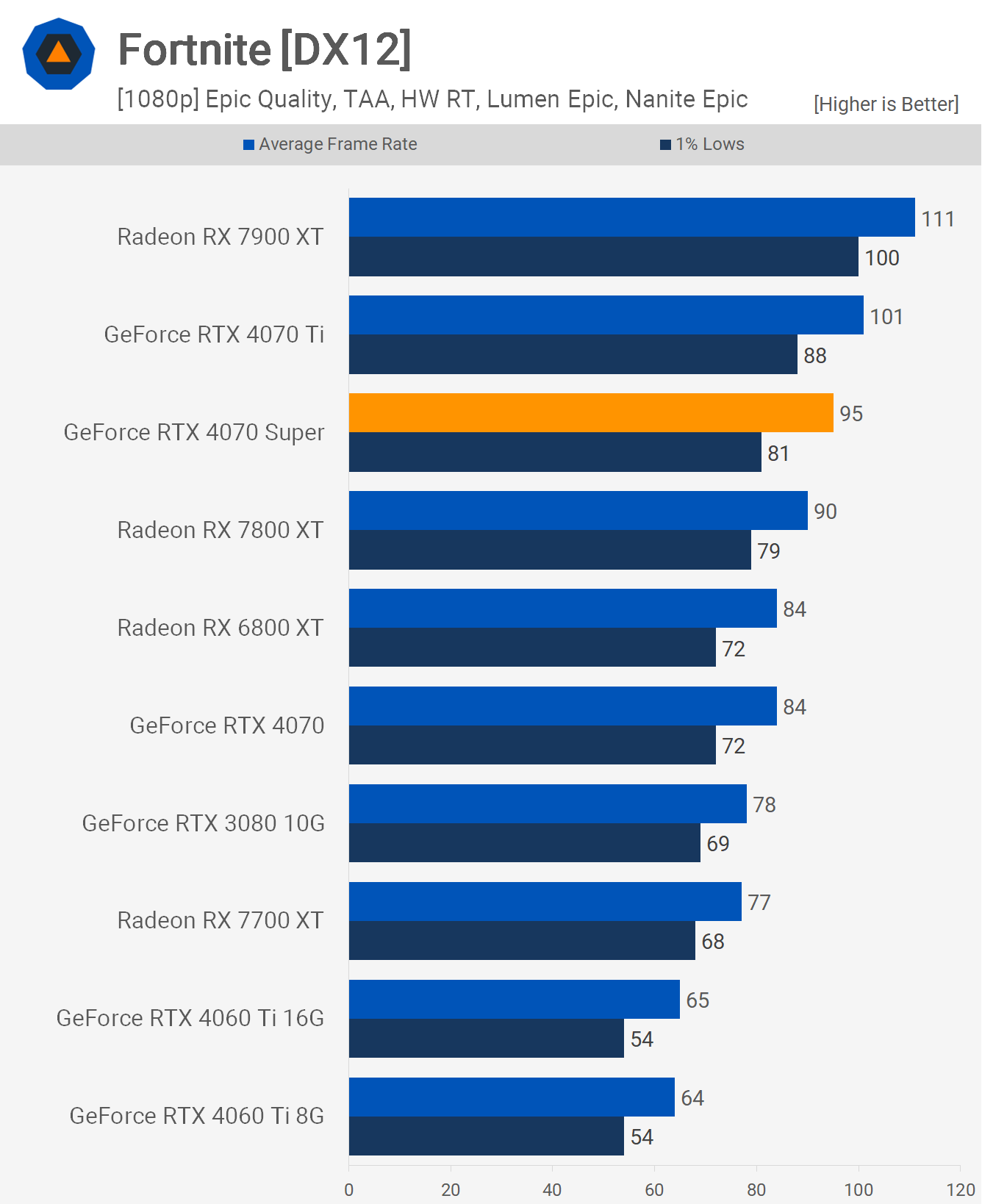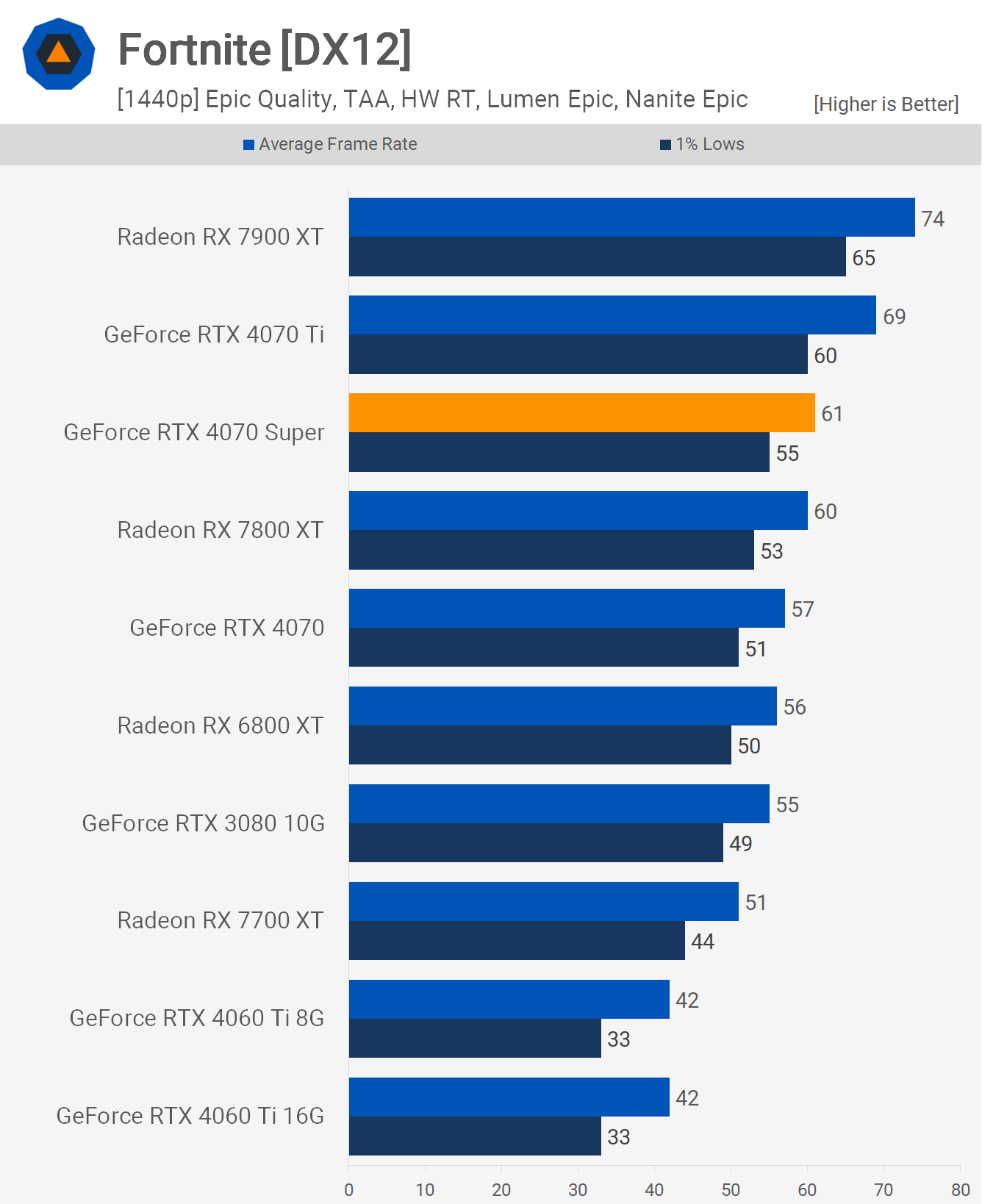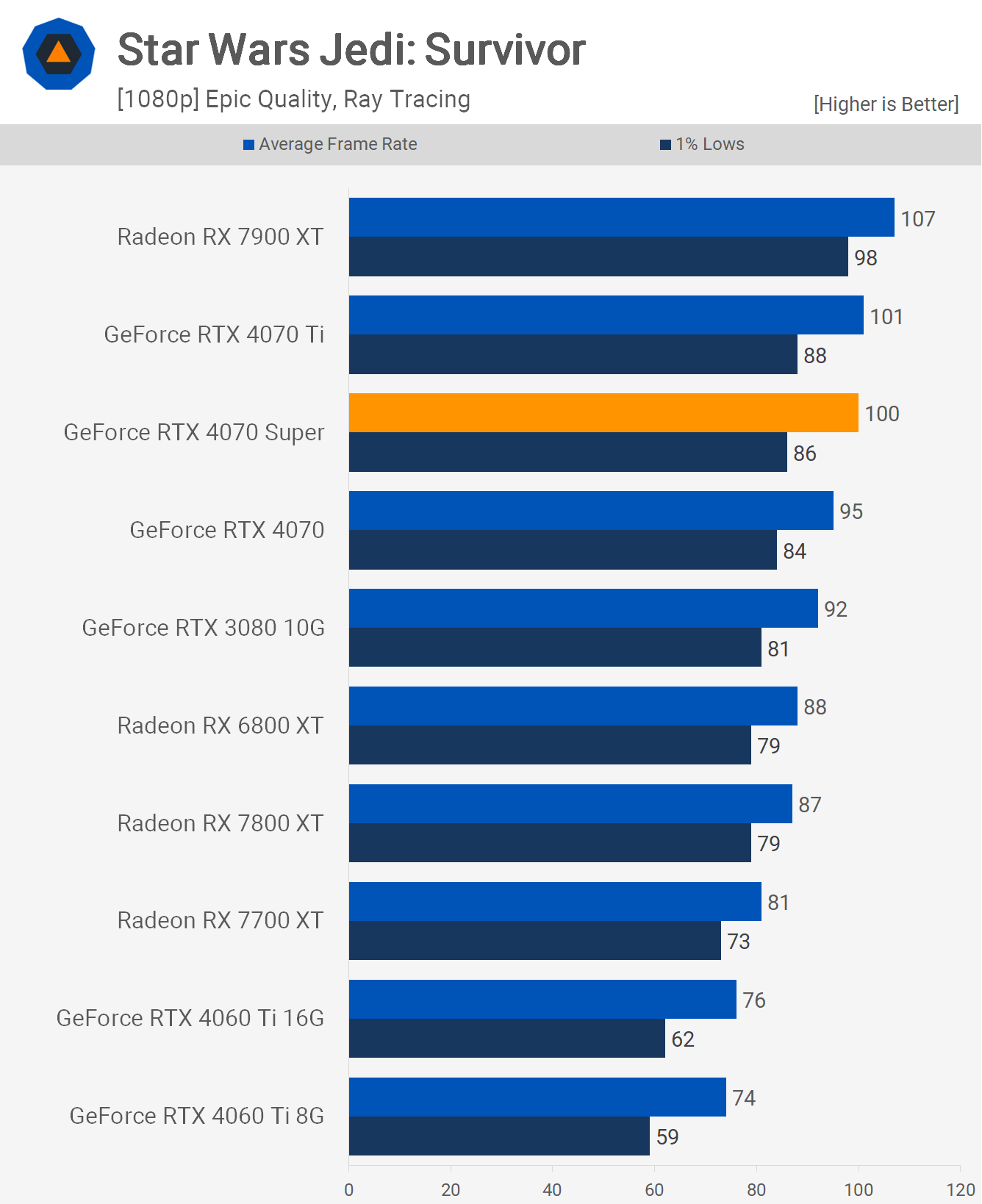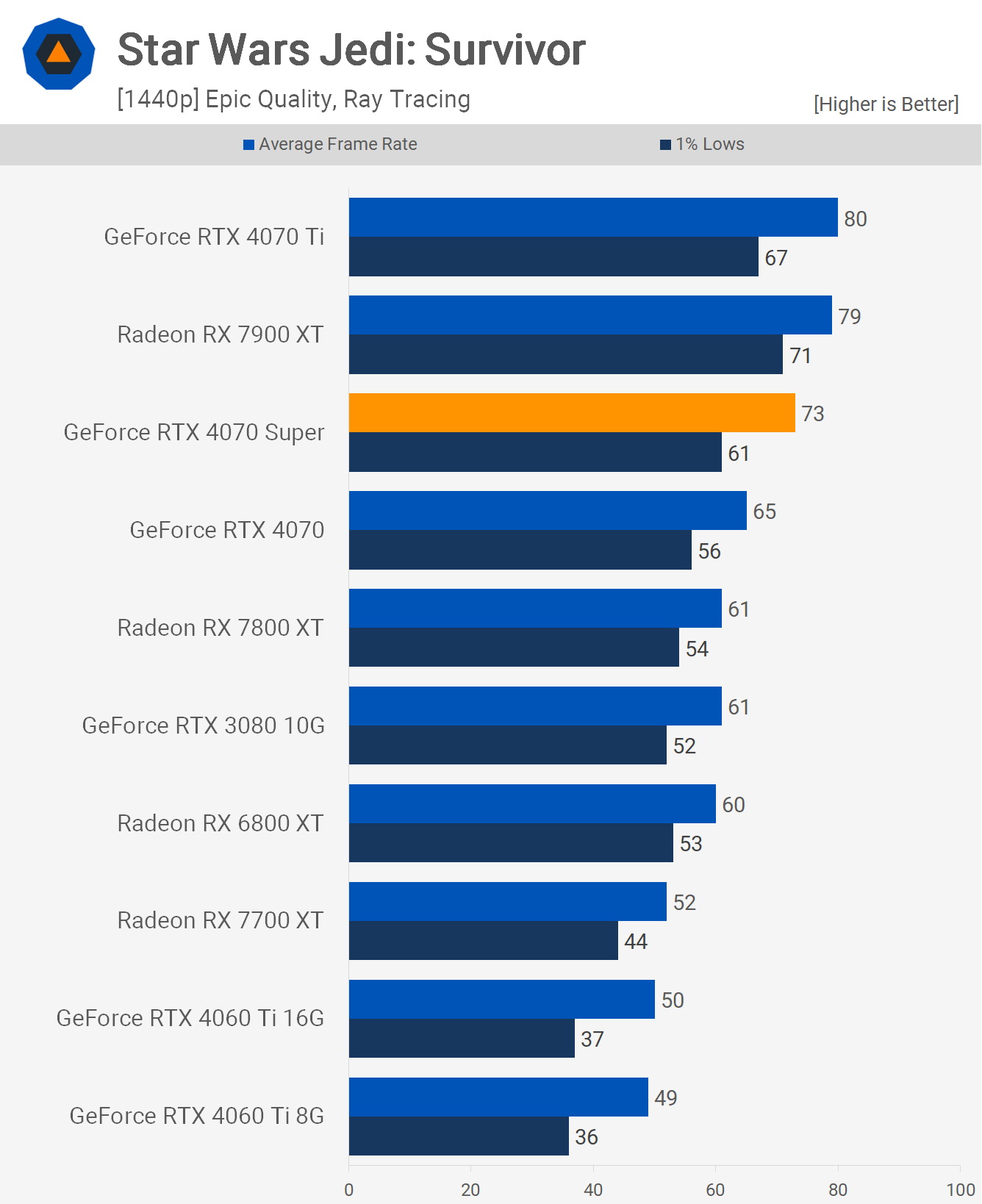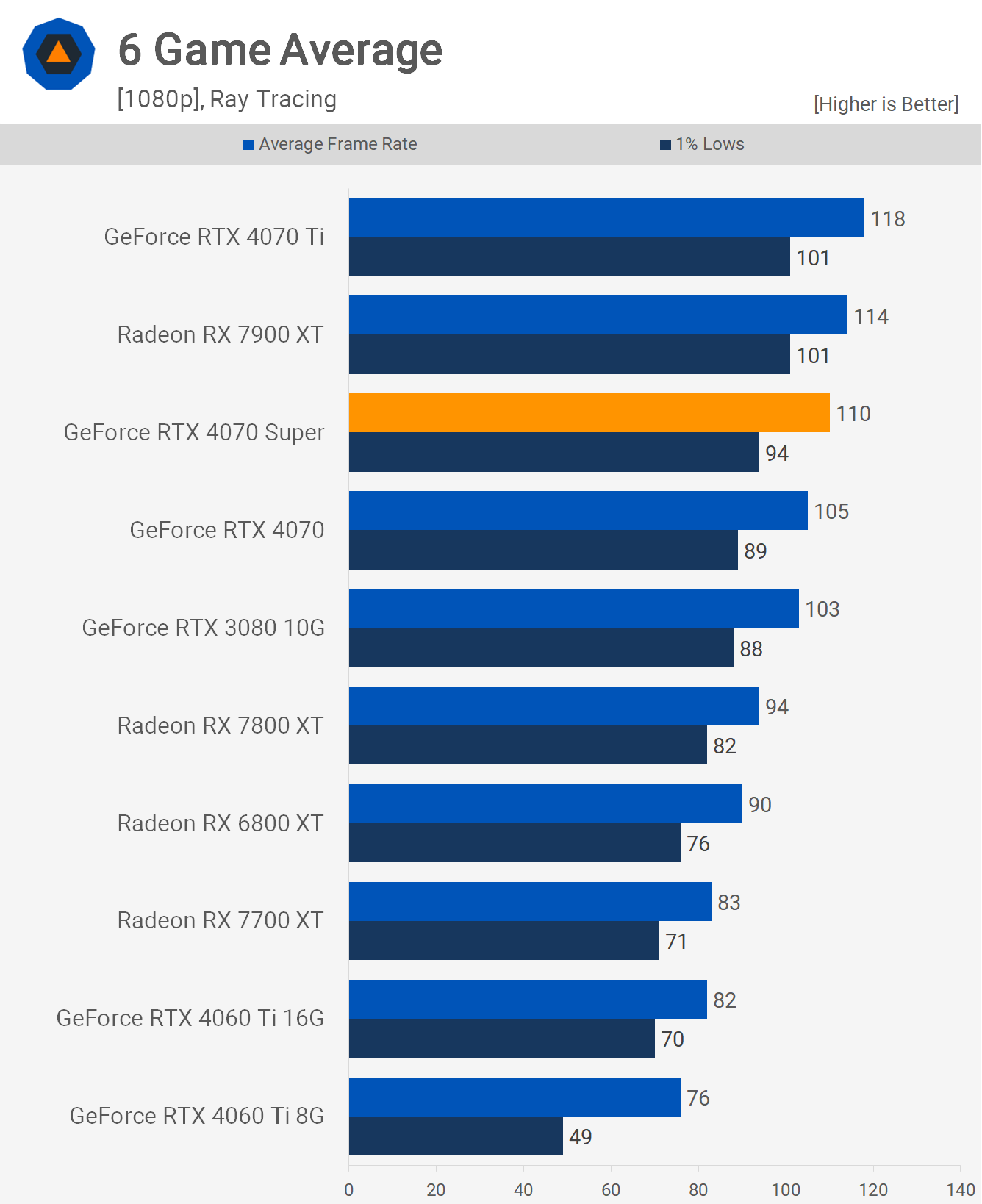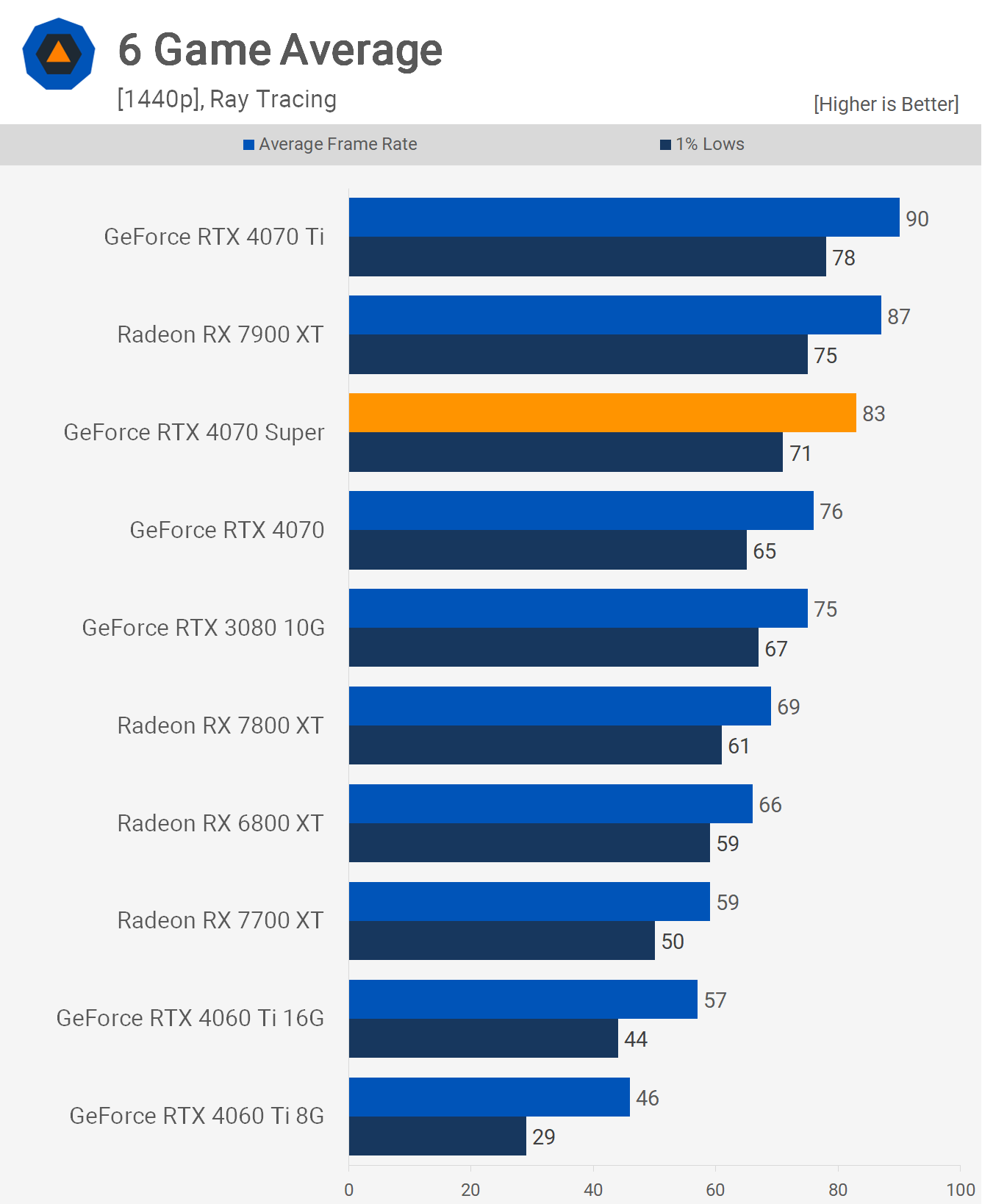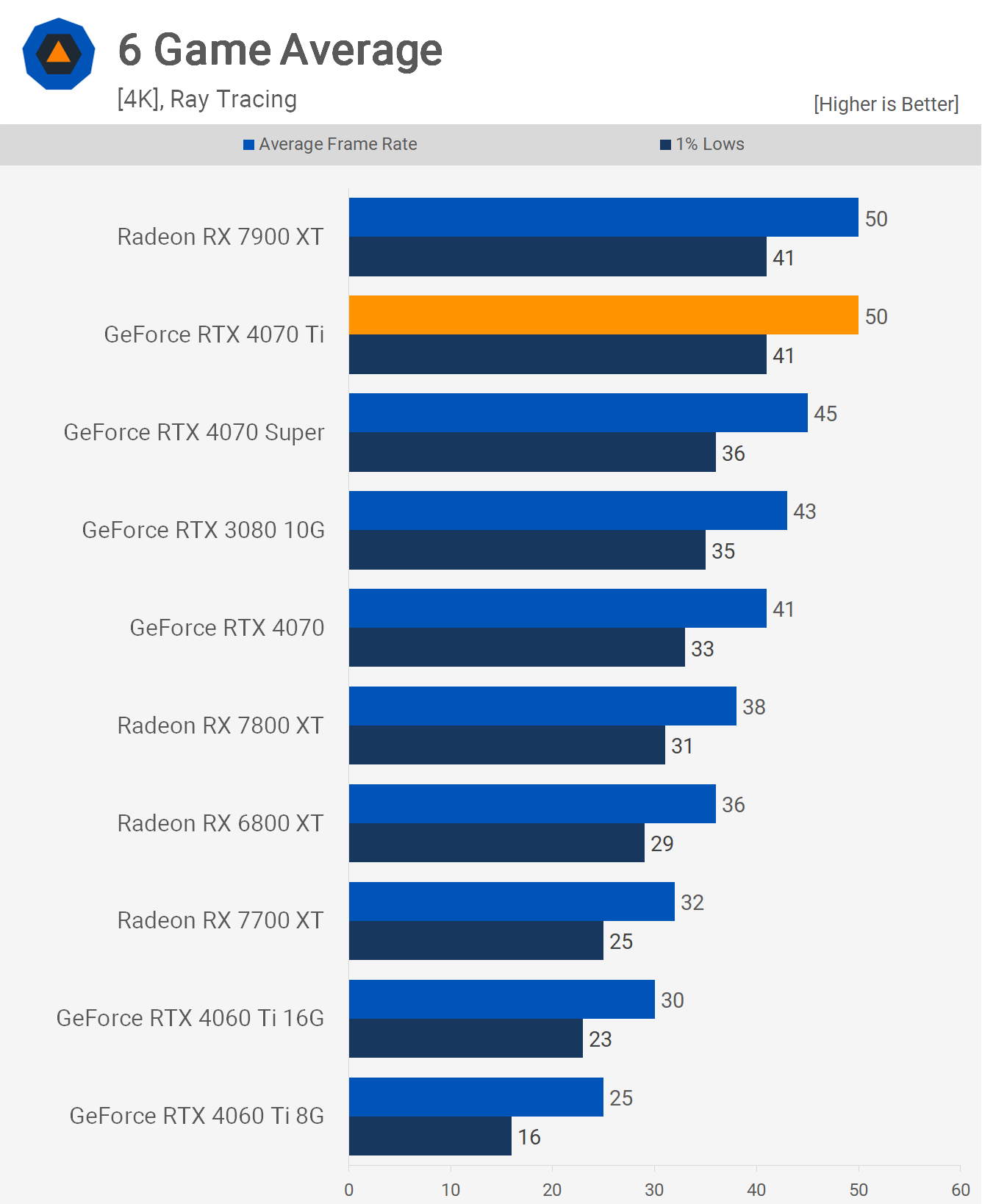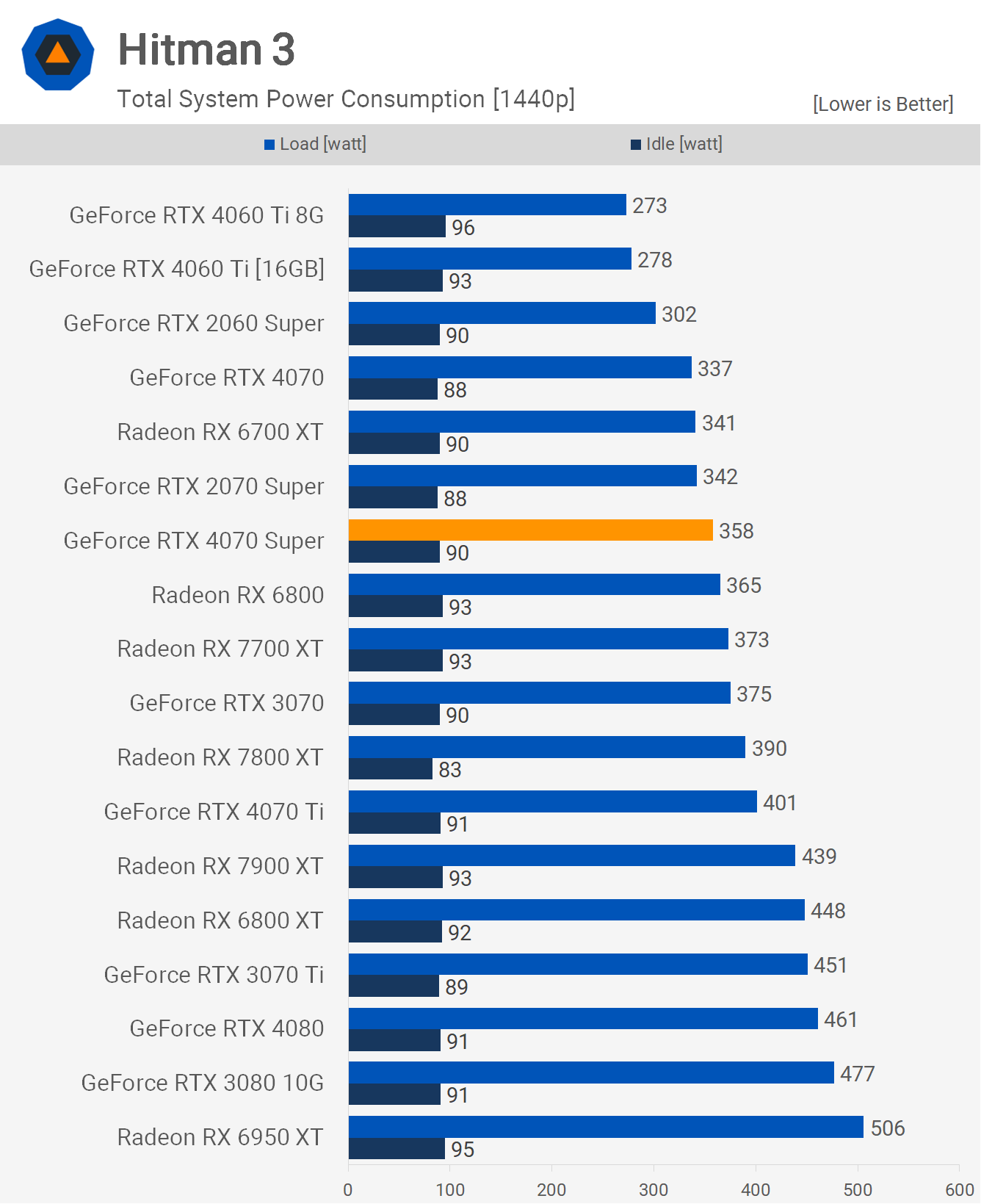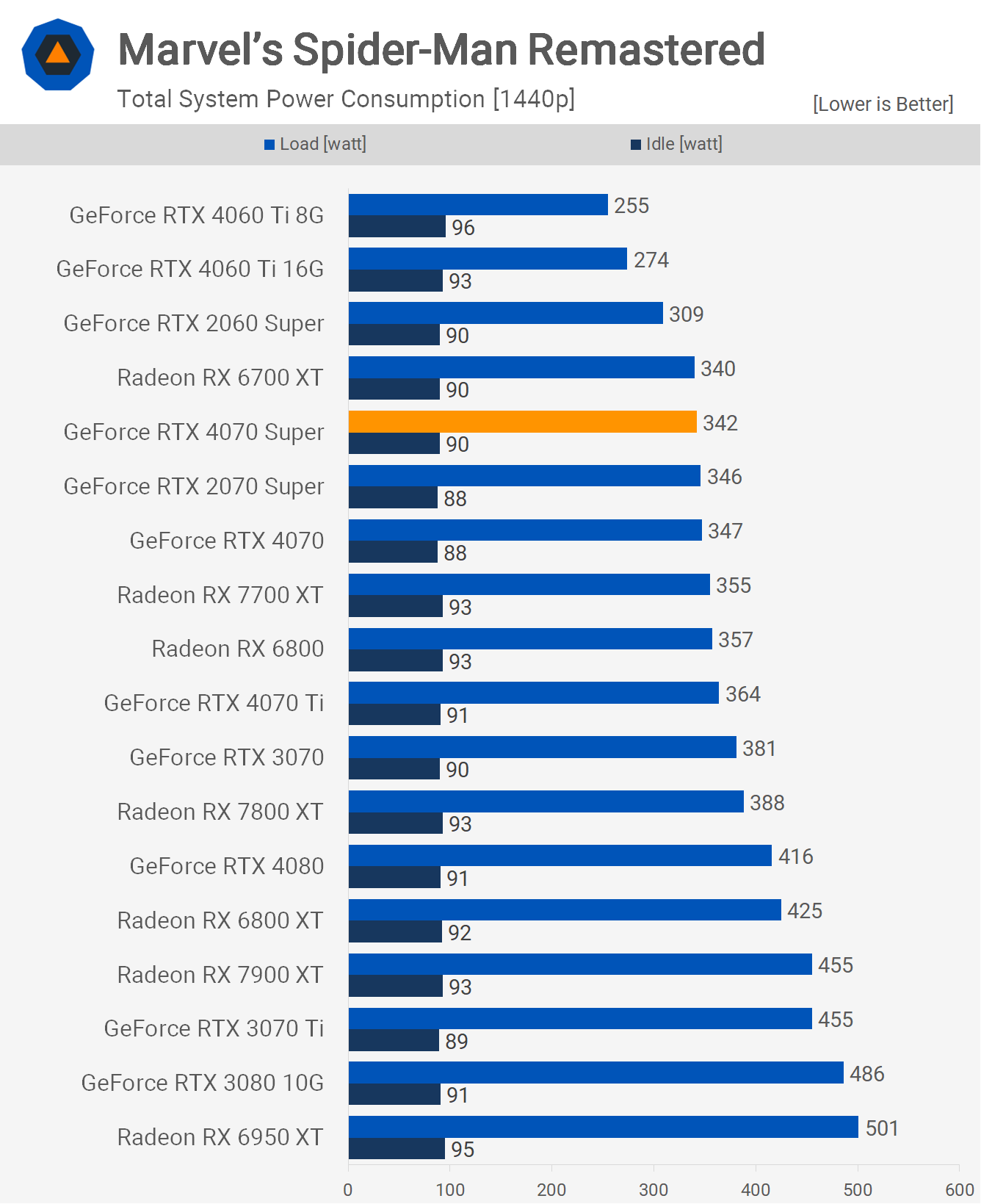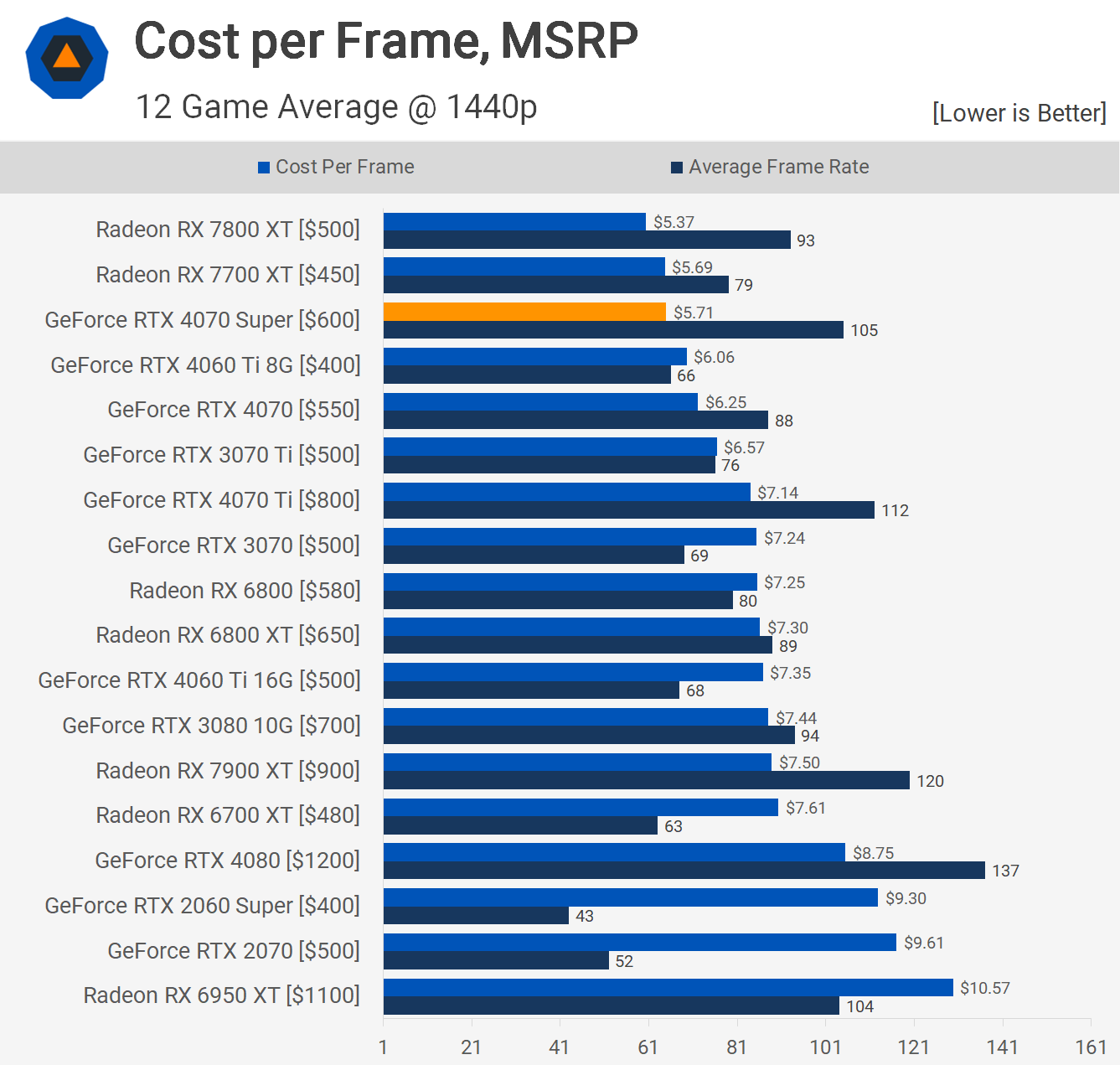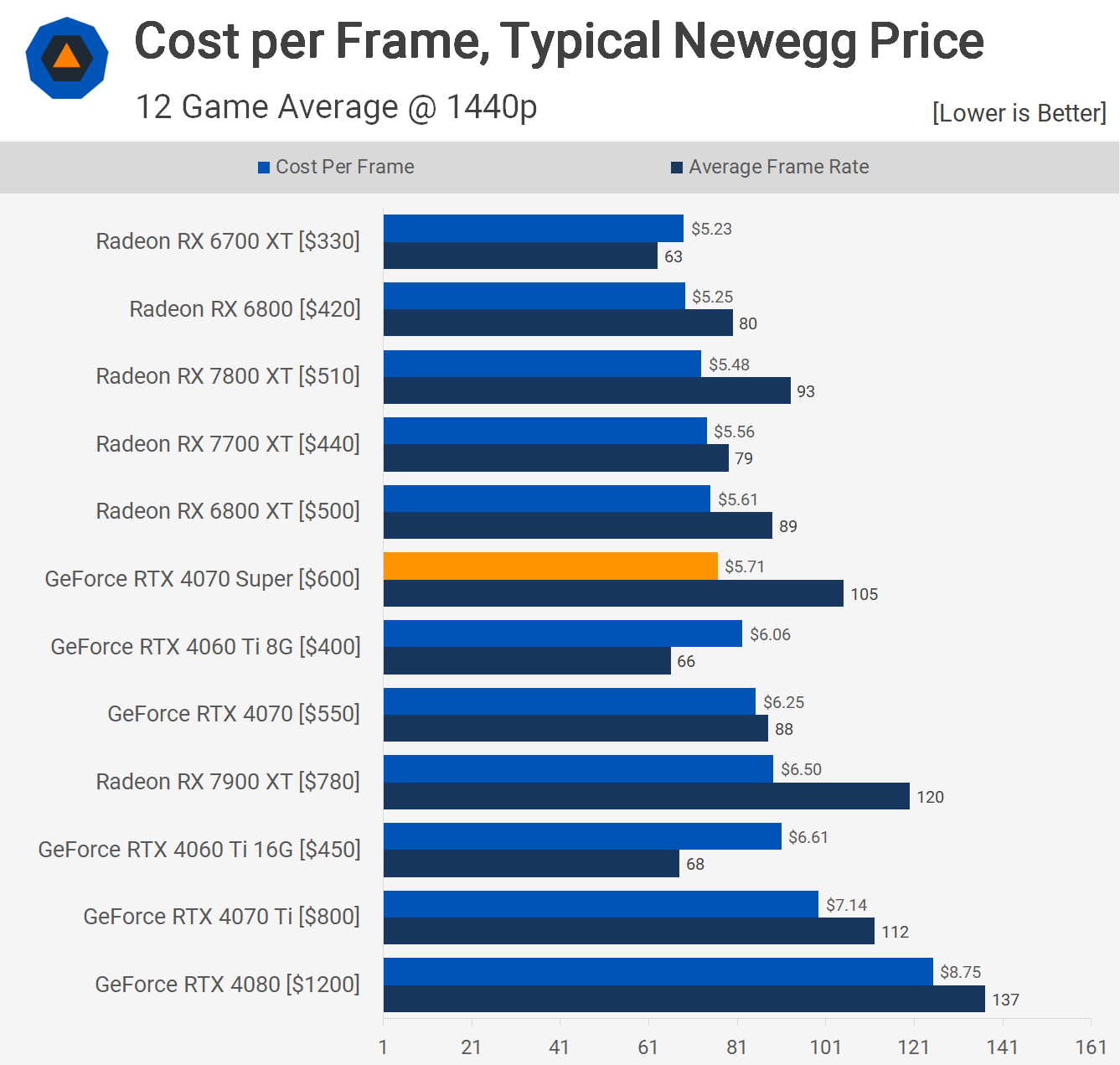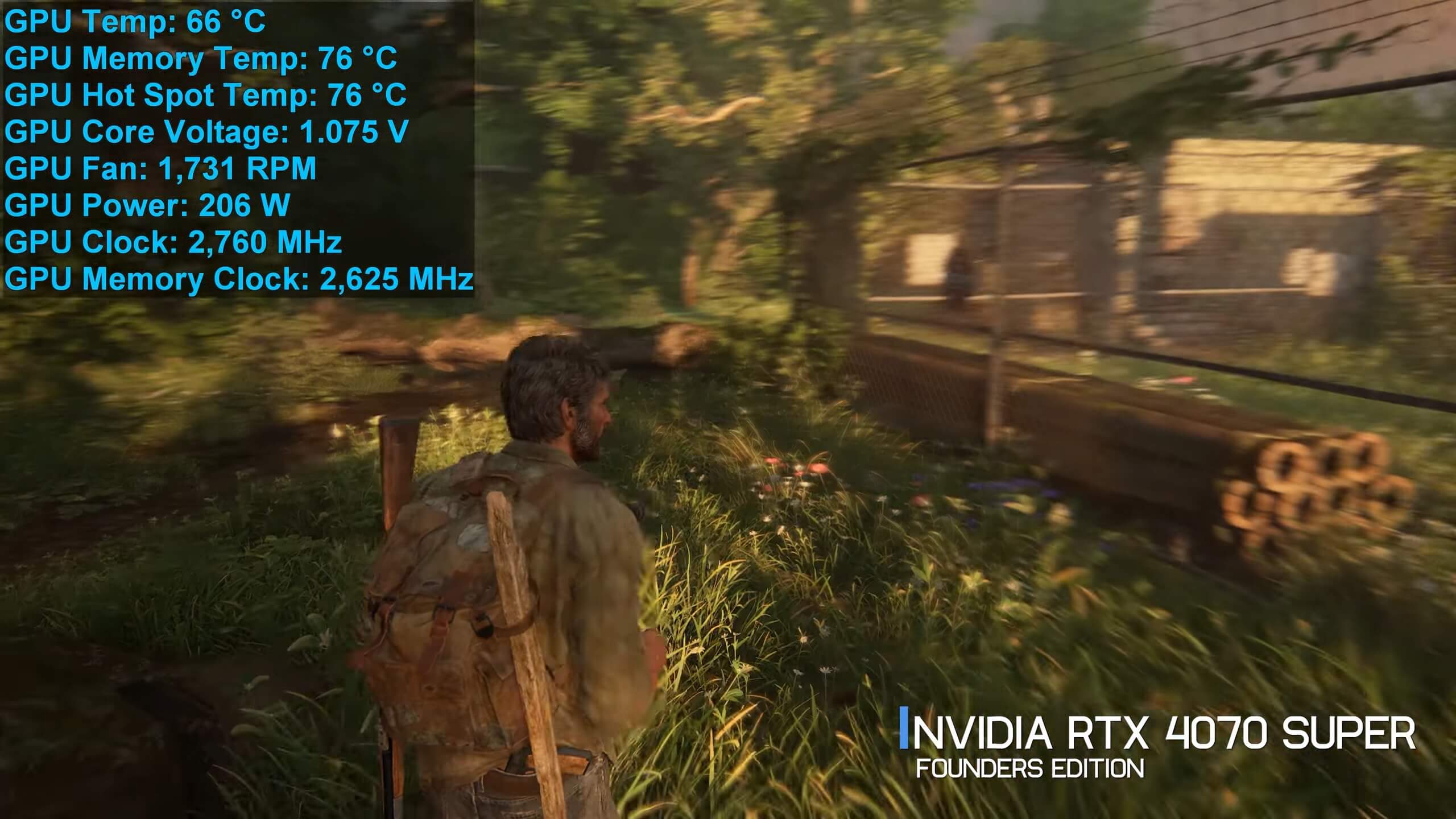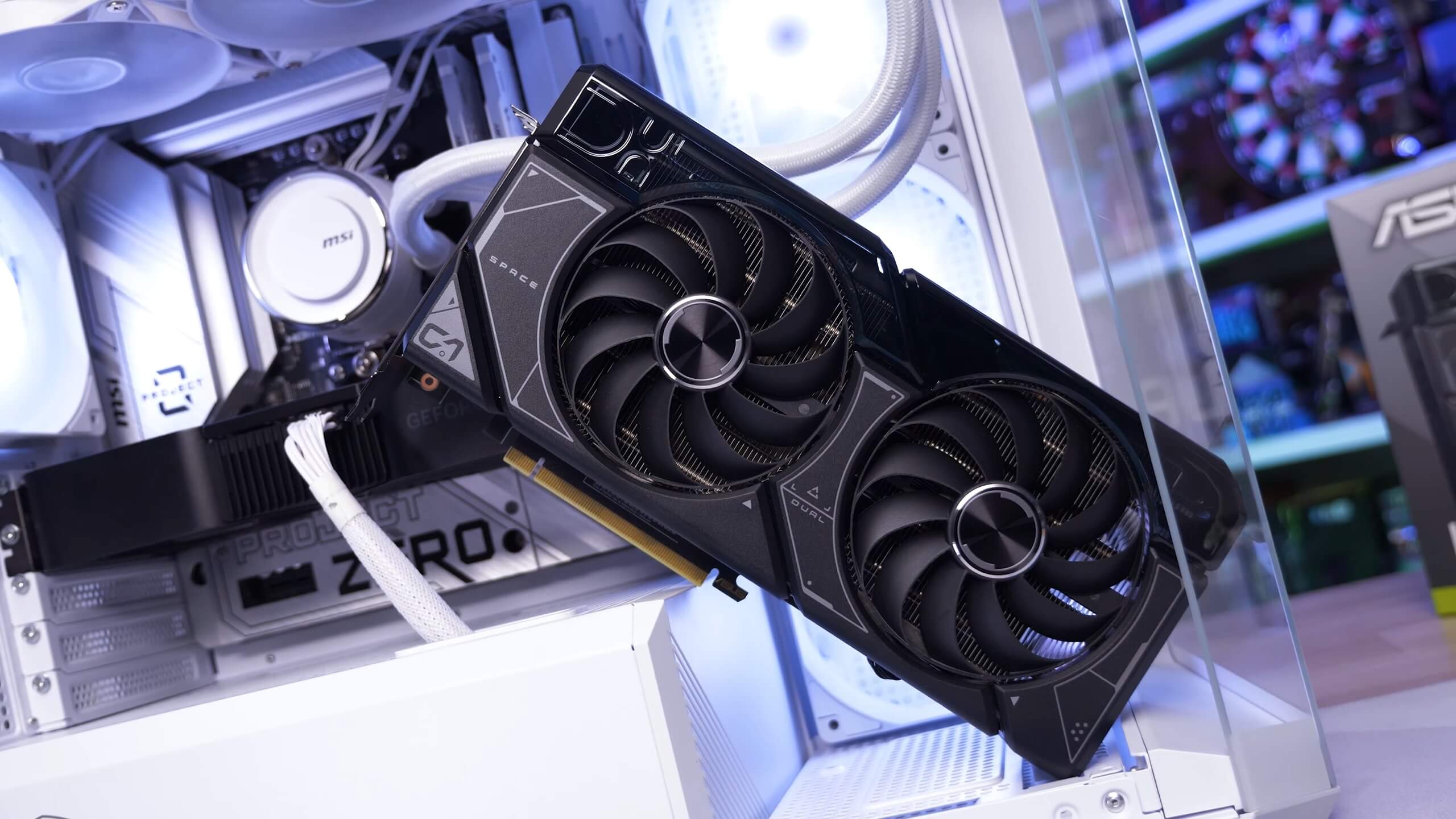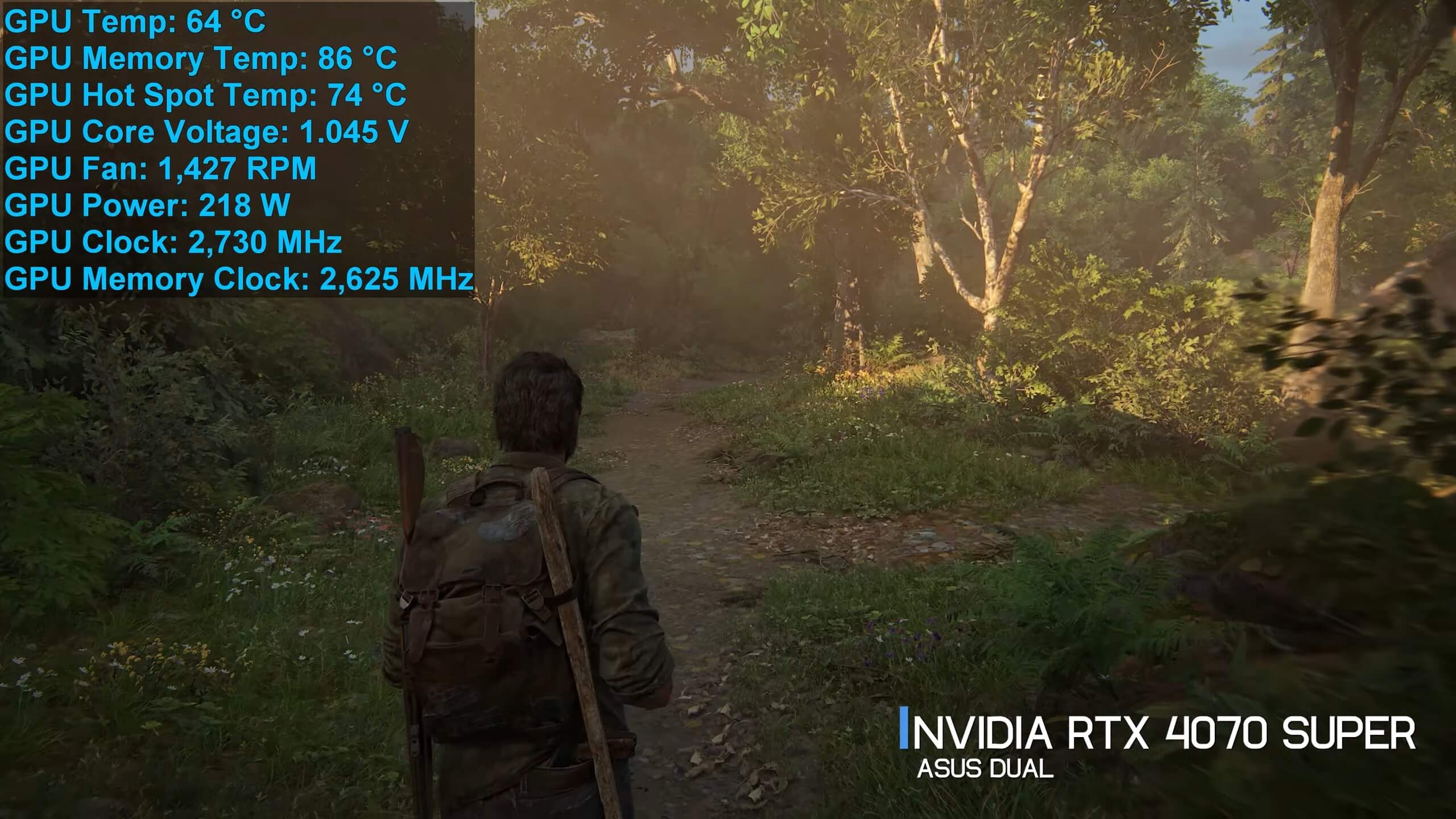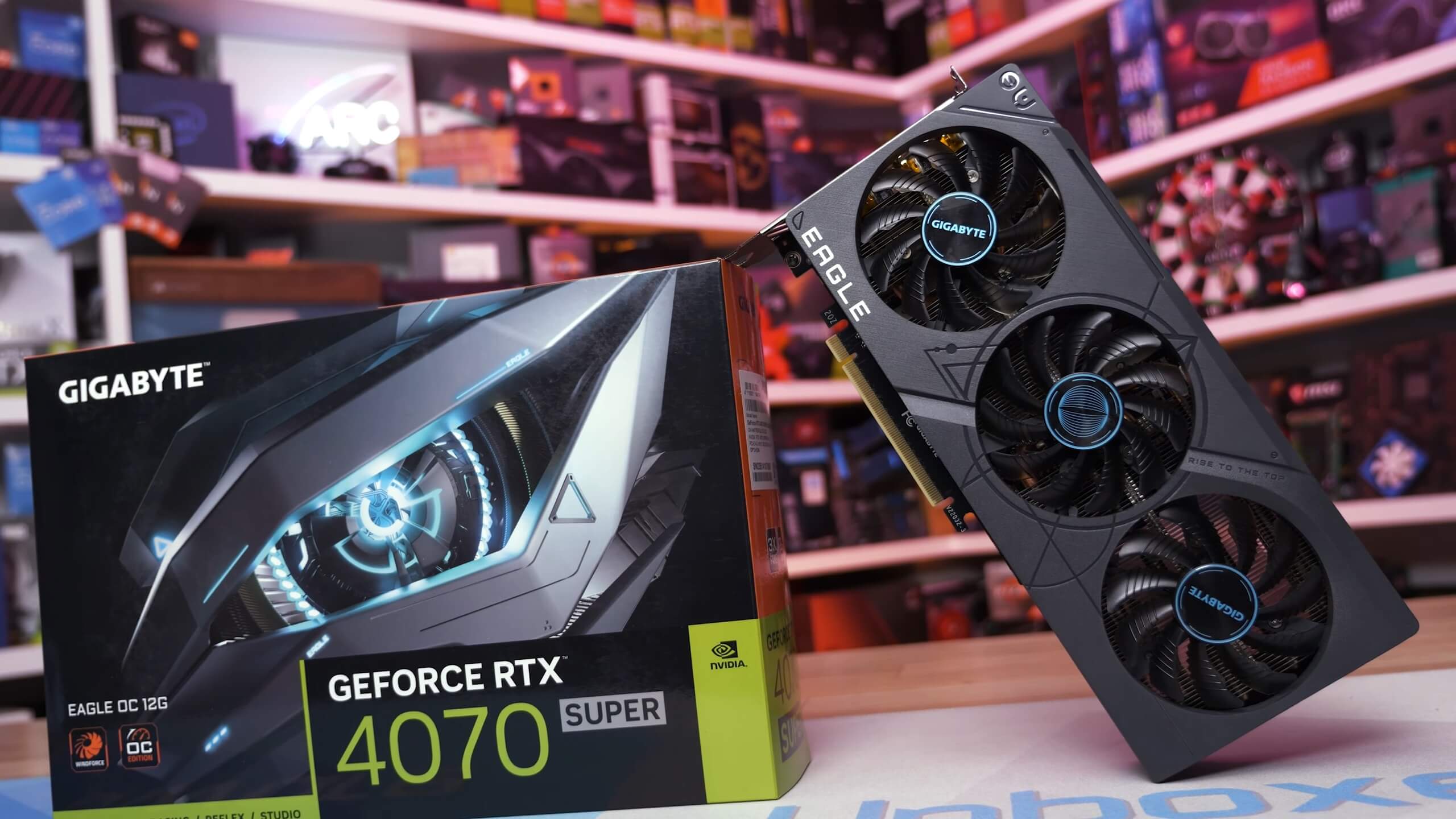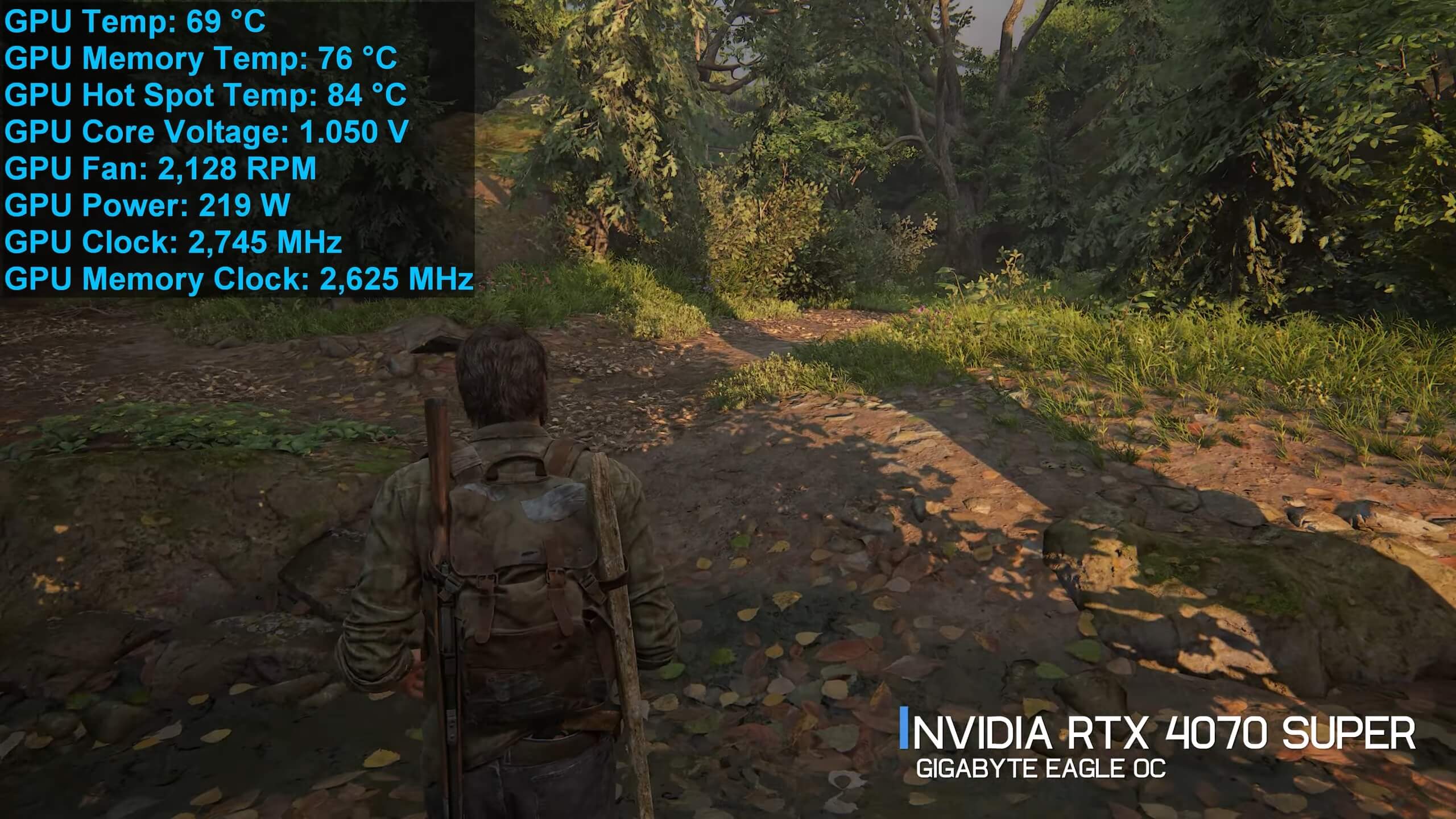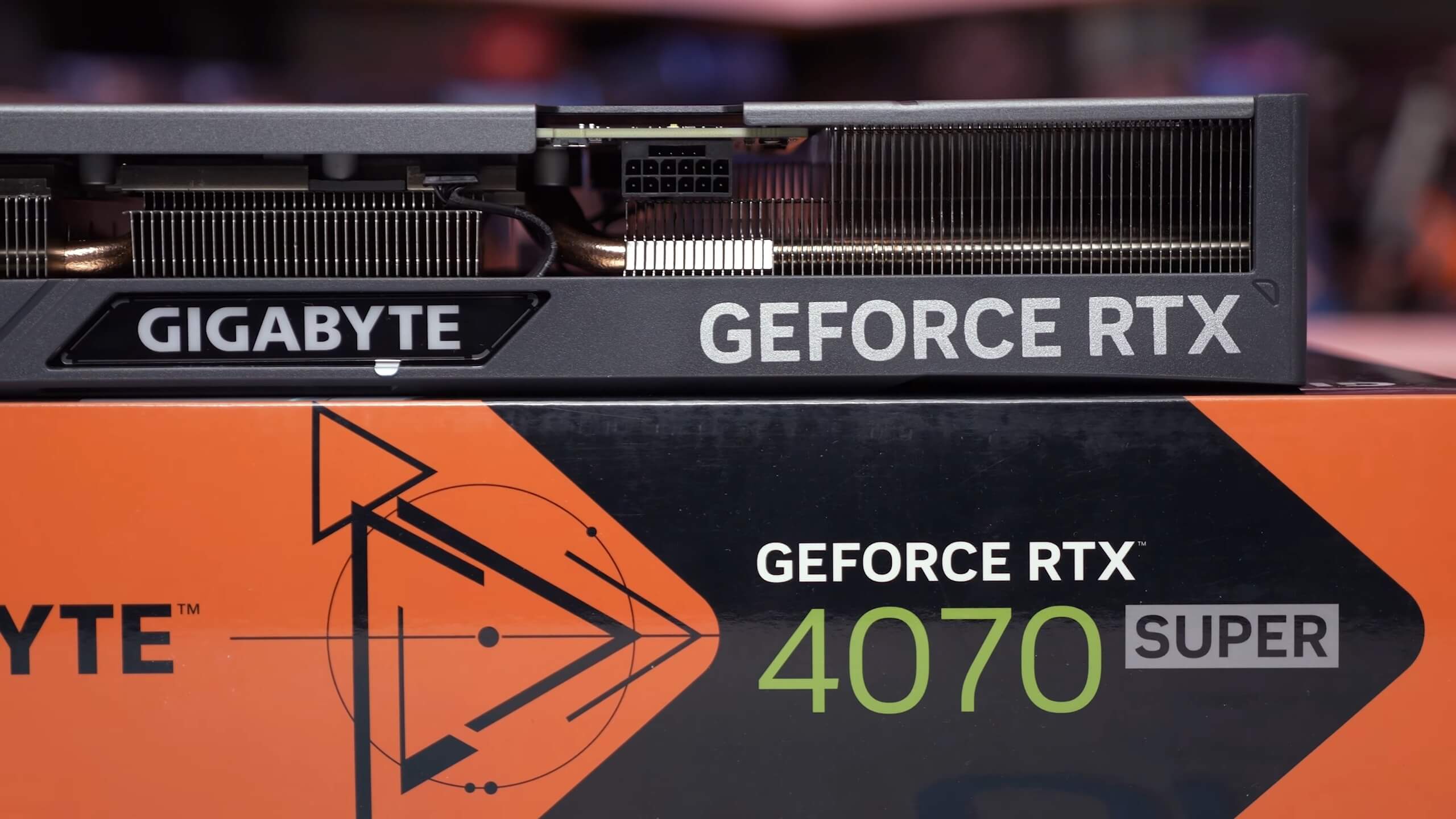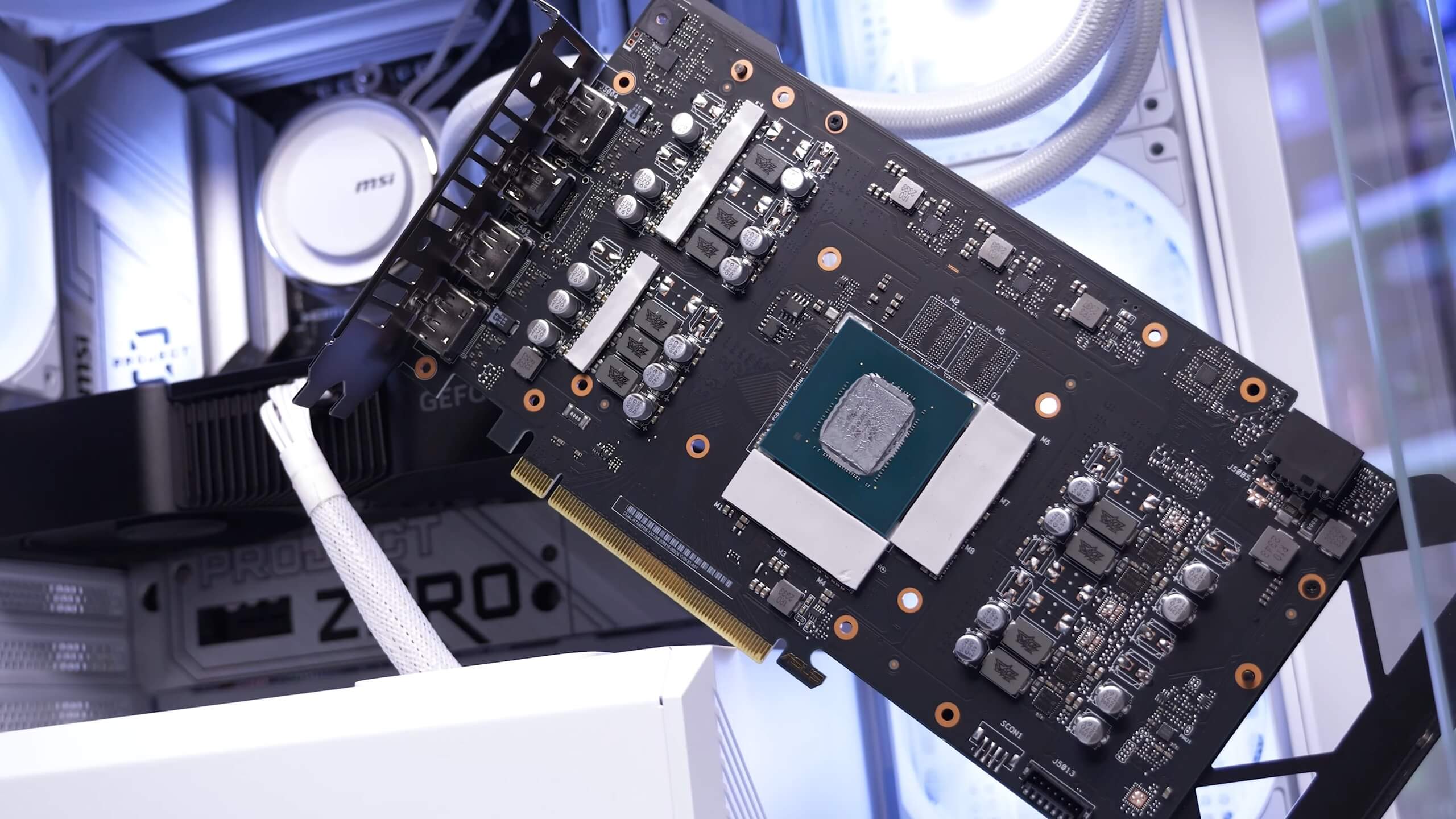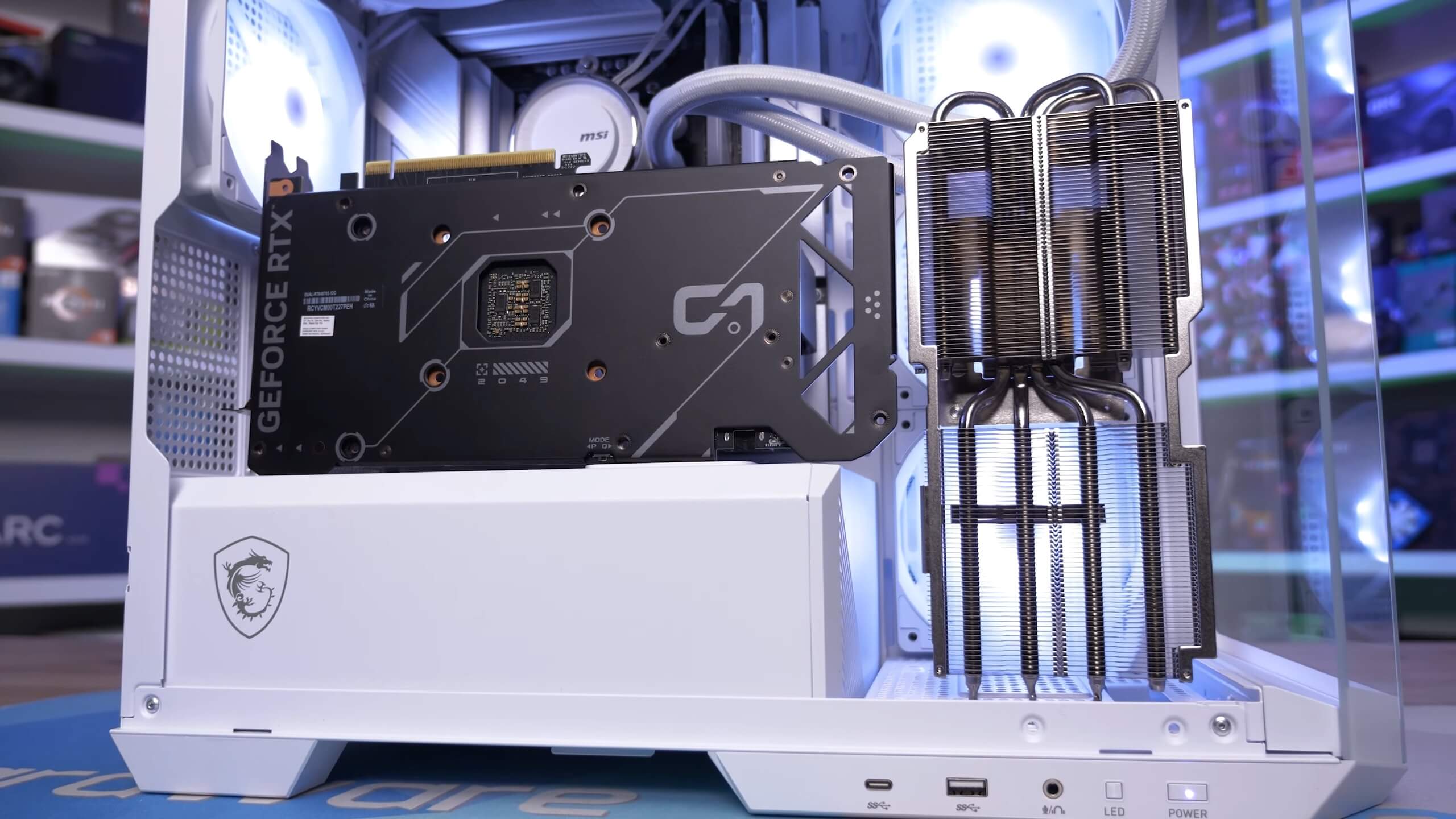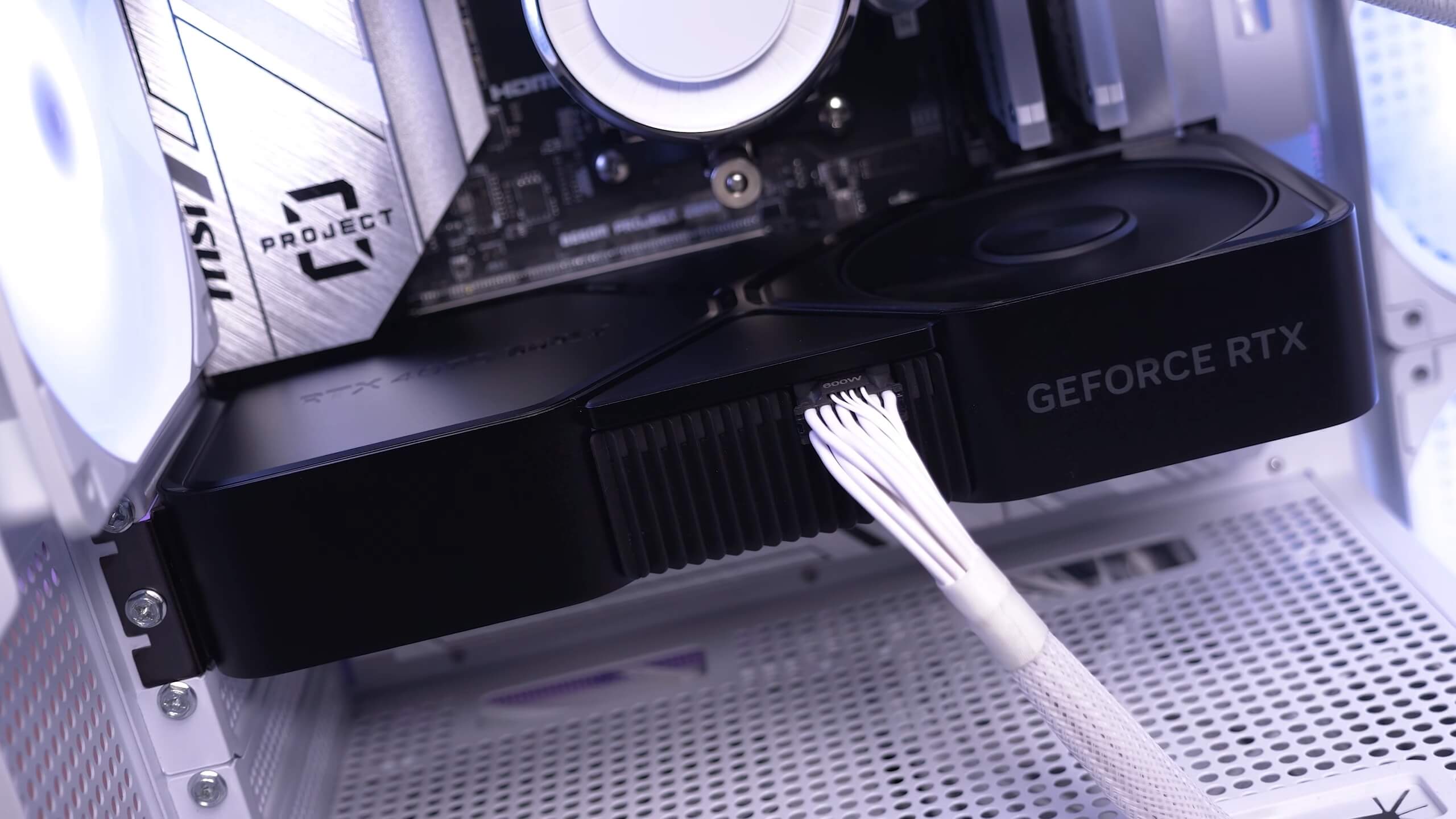Nvidia's new GeForce RTX 4070 Super is the first GPU to be released in the new "Super" series refresh, and it will be slotting in at the MSRP previously occupied by the RTX 4070.
The RTX 4070 Super uses the same AD104 silicon as the other 4070 series products, but with significantly more silicon enabled when compared to the standard 4070. There's a 22% increase in CUDA cores, only 7% less than the Ti model. It also shares the same 48 MB L2 cache as the Ti. Like the RTX 4070 and 4070 Ti, it employs a 192-bit wide memory bus, using 12GB of 21Gbps GDDR6X memory for a bandwidth of 504 GB/s.
Based on these specifications, the new RTX 4070 Super should be ~20% faster than the 4070, at the same price, which sounds like a solid deal. However, it still only offers 12 GB of memory, which is a bit stiff at the $600 price point. Nonetheless, overall performance should be significantly improved.
The enhanced performance should also help the RTX 4070 Super better compete with the more affordable Radeon RX 7800 XT. The Radeon compelled Nvidia to reduce the price of the RTX 4070 to $550, and this is where it will remain. Thus, the original 4070 will continue to exist, priced $50 less than the Super model per Nvidia's official new MSRP list for that part.
We anticipate that the RTX 4070 will soon be priced at $500, alongside the Radeon 7800 XT. That's because it's hard to imagine consumers opting to save $50 on a GPU that's expected to be significantly slower. It seems more likely they would choose the new 4070 Super.
In today's review we'll examine the new GPU performance and analyze cost per frame data to drive some conclusions there.
For testing, we're using our Ryzen 7 7800X3D test system with 32GB of DDR5-6000 memory and the latest display drivers. All data has been validated and updated for this review. We'll be using the Nvidia Founders Edition of the 4070 Super. We've tested 12 games, using titles with and without ray tracing, focusing on 1440p and 4K resolutions.
Let's delve into what we've found…
Benchmarks
First up, we have A Plague Tale: Requiem, and at 1440p, the 4070 Super is offering a 16% performance increase over the standard 4070, making it 7% faster than the 7800 XT and just 5% slower than the 4070 Ti.
Then at 4K, we're looking at 53 fps on average, making the 4070 Super 4% faster than the 7800 XT, but again just 5% slower than the 4070 Ti. We're also seeing a 15% improvement compared to the standard 4070, so that's a strong result.
The gains in Resident Evil 4 over the original 4070 are less pronounced at 1440p. Here, the new Super variant was just 12% faster, averaging 140 fps. Still, that made it 9% faster than the 7800 XT, though, interestingly, it was still 10% slower than the 4070 Ti.
At 4K, the Radeon GPU narrows the gap, with the 4070 Super only 4% faster than the 7800 XT. It was still 9% slower than the 4070 Ti, but this time 17% faster than the 4070.
In Cyberpunk 2077, without ray tracing enabled, the results are highly competitive, with the GeForce GPU just 2% faster. This is a much-needed boost for Nvidia in this matchup, as the 4070 Super is 18% faster than the standard 4070.
At 4K, the margin remains at 2% in favor of the 4070 Super, rendering just one extra frame over the 7800 XT. This time, there's a significant 24% improvement over the standard 4070.
Hogwarts Legacy further demonstrates Nvidia's need for a performance boost at the $600 price point. The 4070 Super is just 3% faster than the 7800 XT at 1440p, despite offering a massive 26% increase over the standard 4070.
Unfortunately, the 4070 Super falls behind the 7800 XT at 4K, averaging 47 fps and making it 8% slower. Oddly, the 4070 Super was just 4% faster than the standard 4070 here, though it was also just 2% slower than the 4070 Ti, suggesting that VRAM capacity is a limiting factor for these 4070 series products.
Next, we have the new Avatar game, where the 4070 Super is very impressive, averaging 83 fps, making it 20% faster than the 4070 and 26% faster than the 7800 XT. Moreover, it was just 10% slower than the 4070 Ti and 8% slower than the 7900 XT.
At 4K, we're looking at an average of 46 fps, a 28% increase over the 7800 XT and 21% over the standard 4070. It was also once again just 10% slower than the 4070 Ti, so this is a great result for the new 4070 Super.
Marvel's Spider-Man Remastered, using the very high preset, is easily handled by these newer mid-range to high-end GPUs. The RTX 4070 Super averaged 184 fps, which is a 19% boost over the 7800 XT, and a 16% improvement from the standard 4070.
Then at 4K, the average frame rate drops to a still very impressive 103 fps, which is an 18% increase over the 7800 XT and a similar 16% improvement over the standard 4070. This also means the Super is just 6% slower than the 4070 Ti.
The results for The Last of Us Part I are quite competitive between the 4070 Super and the 7800 XT. The GeForce GPU offered 6% more performance at 1440p. This illustrates the necessity of the 18% boost from the standard 4070 for Nvidia.
At 4K, the average frame rate drops to 46 fps, and now the 4070 Super is just 5% faster than the 7800 XT but a significant 31% faster than the 4070, more than typically expected, indicating the larger L2 cache plays a key role here.
Next up, we have Dying Light 2, where the 4070 Super easily outperforms the 7800 XT by a 23% margin, though it does cost about 20% more, so that's worth considering. Still, 108 fps on average is a strong result, making the new Super variant just 9% slower than the Ti.
At 4K, the margin remains similar, here the 4070 Super is 20% faster than the 7800 XT, as well as the RTX 4070. Previously, Nvidia offered the same level of performance as AMD in this title, but with a 20% price premium.
Our Starfield results, updated using the latest version of the game, show that at 1440p, the 4070 Super averages 67 fps, making it 10% faster than the 7800 XT and 18% faster than the standard 4070.
The 10% margin is maintained at 4K, though the 4070 Super averages only 44 fps, so upscaling is necessary here. Thankfully, Starfield now supports DLSS.
Another new game added to our day-one reviews is Alan Wake 2. Testing at 1440p, the 4070 Super beats the 7800 XT by a 10% margin, as it is just 7% slower than the 4070 Ti.
Then at 4K, it's still 9% faster than the 7800 XT and exactly 20% faster than the original 4070, so that's a positive outcome.
The penultimate game tested is Watch Dogs: Legion, where the 4070 Super averaged 152 fps at 1440p, making it 10% faster than the 7800 XT and 18% faster than the 4070.
As we've seen several times, increasing the resolution reduces the gap, with the 4070 Super now only 5% faster than the 7800 XT, despite trailing the 4070 Ti by a mere 7% margin.
The final game we're examining is Hitman 3, a title where AMD underperforms. As a result, the 4070 Super easily outperforms the 7800 XT, delivering 31% more performance and, impressively, a 26% boost over the standard 4070.
However, at the 4K resolution, the 7800 XT performs much better, rendering 90 fps on average, making the 4070 Super just 2% faster, a negligible margin. We're still observing a 16% increase over the 4070, though.
Average Gaming Performance (Raster)
Although we didn't review the 1080p results in detail, we did record the data. Here's a quick overview: the 4070 Super was, on average, 10% faster than the 7800 XT and 15% faster than the 4070, while it was just 5% slower than the 4070 Ti.
Moving up to 1440p, the results are more GPU-limited, giving us a clearer comparison. Here, the 4070 Super is 13% faster than the 7800 XT and 19% faster than the 4070, marking a significant improvement. It was again only slightly slower than the Ti model, trailing by a 6% margin.
However, the 4K resolution remains a challenge for the 4070 Super in its competition with the 7800 XT, as the Radeon GPU performs much better at this higher resolution. As a result, the GeForce GPU is now just 9% faster, which is underwhelming considering it should cost around 20% more. It was still 18% faster than the 4070, which also suffers from the same narrow 192-bit wide memory bus.
Ray Tracing Performance
Turning to ray tracing performance, we'll start with A Plague Tale: Requiem. Here, the 4070 Super was capable of 97 fps at 1080p, making it a substantial 45% faster than the 7800 XT, which averaged just 67 fps.
The margins were similar at 1440p. Here, the Super was 42% faster than the 7800 XT and just 5% slower than the 4070 Ti. Interestingly, it was only 14% faster than the standard 4070, so while it significantly outperforms the Radeon competition, it's not dramatically faster than the original 4070.
Ray tracing performance in Resident Evil 4 is competitive. Here, both the 7800 XT and 4070 Super rendered around 160 fps, with the 4070 Super barely outperforming the 4070.
However, it does pull ahead at 1440p, where we're seeing a 12% improvement over the original 4070, and more notably, it's now 16% faster than the 7800 XT.
In Cyberpunk 2077, the 4070 Super delivers 33% more performance than the 7800 XT at 1080p, using the medium quality ray tracing preset. However, it's not much faster than the standard 4070 in this example.
At 1440p, it's 12% faster than the standard 4070 and once again 33% faster than the 7800 XT, yielding a strong overall result.
Marvel's Spider-Man Remastered
Spider-Man Remastered is CPU-limited at 1080p, so there's not much we can conclude from these results, apart from the fact that the 4070 Super is 6% faster than the 7800 XT. We expect that margin to increase as we raise the resolution, so let's do that.
At 1440p, the 4070 Super is now 15% faster than the 7800 XT, and even then, it appears to be CPU-limited. Now, let's quickly examine the 4K data.
Increasing the resolution to 4K extends the margin to 24%, with the Super providing performance similar to the 4070 Ti, which is impressive.
Fortnite, a game where Radeon GPUs have traditionally performed well with ray tracing, sees the 4070 Super ahead of the 7800 XT, though only by a narrow 6% margin. Again, it was just 13% faster than the standard 4070 and 6% slower than the Ti model.
At 1440p, the 7800 XT and 4070 Super are evenly matched with 60 fps, which is comparable to what we observed from the standard 4070.
Star Wars Jedi: Survivor, heavily CPU-limited with ray tracing enabled at 1080p, results in the 4070 Super being just 15% faster than the 7800 XT.
However, increasing the resolution to 1440p only raises that margin to 20%, a respectable win for the 4070 Super, but again, it is expected to cost about 20% more.
Average Gaming Performance (Ray Tracing)
Here's a look at the 6-game average at 1080p, noting that some of this data was CPU-limited. On average, the 4070 Super was 17% faster than the 7800 XT and 5% faster than the 4070, though it was also just 7% slower than the 4070 Ti.
At 1440p, the margin slightly widens to 20%, with the Super now 9% faster than the standard 4070 and 8% slower than the Ti model.
Then, at 4K, the margin narrows, with the 4070 Super now 18% faster than the 7800 XT. Including games such as Alan Wake 2 would likely further favor the GeForce GPUs, but for this selection of games, the margins aren't as pronounced as one might expect.
Power Consumption
When it comes to power consumption, the 4070 Super is very efficient. Testing with Hitman 3, it shows total system usage 32 watts lower than the 7800 XT, while delivering 31% more performance in that example.
Power efficiency in Spider-Man Remastered was also exceptional, consuming 46 watts less than the 7800 XT while delivering almost 20% more performance, so that's a remarkable achievement from Nvidia.
Cost per Frame (MSRP)
Now, it's time to look at the cost per frame data. As expected, we're seeing a solid improvement over the standard 4070, even at the newly discounted price of $550 for the original model.
Despite reducing the price of the 4070 by $50, the new 4070 Super still manages to reduce the cost per frame by 9%, effectively matching the value of the much more affordable Radeon RX 7700 XT. This makes the RTX 4070 Super the most cost-effective 40 series product.
However, it still costs 6% more per frame than the 7800 XT. We view this as a positive outcome for Nvidia, as Radeon GPUs need to be at least 10% less expensive before even considering them as an alternative. We believe this because Nvidia offers a superior set of features that often provide higher quality, superior ray tracing performance, and much better power efficiency. There's a premium associated with these advantages, and according to our past polls, the majority of readers agree.
Cost per Frame (Retail)
Looking at current retail pricing for models available on the market (based on Newegg data), we find a slightly less favorable matchup for AMD between the 7800 XT and the 4070 Super, as the 7800 XT is currently $10 over MSRP. We also have several Radeon 6000 series products in the mix, though parts like the 6700 XT, which offer great value, are much slower.
The RTX 4070 Super stands out as the only GeForce GPU to drop below $6 per frame based on our data. At $600, it makes it difficult to recommend the 7800 XT at $510. The original 4070, however, is quite poor in value, costing 14% more per frame than the slightly overpriced 7800 XT.
Cooling Performance
Nvidia RTX 4070 Super Founders Edition
We'll start with a quick look at the operating behavior of the 4070 Super, focusing on Nvidia's Founders Edition model. Installed inside an ATX case with a room temperature of 21°C, this is how the card ran after an hour of load:
- Peak junction temperature: 66°C
- Hot spot temperature: 78°C
- Memory temperature: 78°C
The card was slightly audible over our case fans with a fan speed of 1,700 RPM, resulting in an operating volume of 35 dBA, which is not loud, but noticeable.
Under these conditions, it managed to average a core clock frequency of 2,775 MHz, with the memory clocked at 2,625 MHz for a transfer speed of 21 Gbps.
Asus Dual RTX 4070 Super
We also tested the Asus Dual RTX 4070 Super, a typical entry-level graphics card with a dual-fan design and dual BIOS support, using a single 12VHPWR connector.
Under the same test conditions as the Founders Edition model, the Asus Dual had a peak junction temperature of 64°C and a hot spot temperature of 74°C, both cooler than the FE model. However, the memory peaked at 86°C, which is hotter than the FE model, though with a lower fan speed of 1,400 RPM, it was quieter at 32 dBA.
The core typically ran at 2,715 MHz, a 2% reduction compared to the FE model, unlikely to significantly alter our bar graph results.
The higher memory temperatures are partly due to thick thermal pads, which are less efficient. They transfer heat to a thin aluminum spreader, and the right bank of memory chips lacks direct cooling above the spreader, leading to an inefficient design. Nonetheless, the memory remained within safety margins throughout our testing.
Gigabyte Eagle OC RTX 4070 Super
We also have the Gigabyte Eagle OC, another base model using a compact triple-fan cooler. This cooler, previously used on their standard RTX 4070, was one of the worst performers in our 4070 roundup, reaching a peak GPU hotspot temperature of 73°C at nearly 2,000 RPM.
Predictably, using this same cooler on a higher-powered GPU hasn't improved the results; in fact, it's even worse. The junction temperature hit 70°C, close to the hot spot temperature of the FE model, which is problematic as it resulted in a hotspot temperature of 85°C for the GPU. This is not ideal, and it's exacerbated by a high fan speed of 2,100 RPM, making this card both hot and loud at 38 dBA.
However, the memory temperatures were reasonable, peaking at 76°C, slightly better than the FE model and much better than the Asus Dual. The average operating frequency for the cores was 2,760 MHz, similar to the FE model.
While the Gigabyte Eagle OC is the loudest and hottest of the models tested here, it's not excessively loud, and most would find it acceptable. That said, it's an unimpressive model that we recommend avoiding.
What We Learned: Super or Not?
We're quite pleased with the upgrade Nvidia is offering at the $600 price point. We're getting about a 20% improvement in gaming performance for the same price, which is hard to argue with. However, we can't help but feel this is what the RTX 4070 should have been from the start: at least 20% faster. Ideally, it probably should have been priced at $500, but we'll take what we can get.
Had the RTX 4070 launched last April with 20% better performance, it would have not only sold significantly better, but Nvidia probably wouldn't have needed to bother with a mid-cycle refresh to try and boost sales.
But of course, this was always the plan: offer as little as they initially can, allowing for a substantial mid-cycle refresh to reinvigorate interest. This strategy allows Nvidia to maximize margins while also extend the release cycle for new generations to two years, with a worthwhile mid-cycle refresh to avoid stagnating sales.
With the new RTX 4070 Super GPU now available, should you buy it? Assuming AMD doesn't make any last-minute price adjustments to the Radeon RX 7800 XT – which wouldn't surprise us, but we're not waiting until the last minute to find out – then the 4070 Super is our new go-to in this price range.
The GeForce RTX 4070 Super will cost $90 to $100 more than the Radeon 7800 XT, which is a ~20% premium. However, when considering the additional rasterization performance, it's only a 4% increase in cost per frame, or 6% if AMD hits their $500 MSRP. Once you factor in the additional features, better ray tracing performance, and much better power efficiency, the 4070 Super becomes a no brainer for us.
In our opinion, AMD needs to discount the Radeon 7800 XT to $450 to become a more compelling option. We appreciate that the 7800 XT has 16GB of VRAM, which we believe should be the minimum at this price point. While that's a strength of the Radeon GPU, it still has a lot working against it, and many of those disadvantages can be realized today.
Speaking of features, you might have noticed we didn't provide any upscaling benchmarks or look at Frame Generation here, as both technologies warrant their own dedicated content, which we've already covered.
Generally speaking, DLSS offers superior image quality compared to FSR. Thus, benchmarking Nvidia GPUs with DLSS and AMD GPUs with FSR would be an unfair comparison. While the performance uplift is similar, this approach ignores the fact that image quality can be superior with the Nvidia GPU.
As for frame generation, we view it as a frame smoothing technology and therefore not suitable for inclusion in benchmark graphs. This applies to both AMD and Nvidia's implementations of the technology.
Bottom line, if you've been waiting for a GPU upgrade and have ~$600 to spend, the new RTX 4070 Super looks as good as things are going to get for a while, unless of course AMD reduces prices.
